When I think of jungles, I picture thick green forests where tall trees reach for the sky, vines twist around everything, and life feels like it’s everywhere.
Jungles provide steady warmth, food, and water throughout the year. This makes them the perfect home for extraordinary biodiversity.
In this guide, you’ll find an incredible range of creatures from powerful cats and playful monkeys to colorful birds, reptiles, and insects.
You’ll also find facts, colourful pictures, and notes on conservation efforts that show why protecting these habitats matters. Step inside the jungle, and meet nature’s most fascinating creatures.
What Animals are in the Jungle?
Jungles are home to an incredible mix of animals. Monkeys, parrots, and toucans fill the treetops, while tigers, jaguars, and leopards prowl below. Frogs, snakes, and insects thrive in the damp undergrowth, and rivers hold fish, crocodiles, and turtles.
Animals choose jungles because they provide everything needed for survival. Tall trees and thick vines offer safe hiding places.
The warm, wet climate keeps food available all year, from fruits and leaves for plant-eaters to plenty of prey for predators. Rivers and rain ensure fresh water without long migrations.
Jungles also support more life than almost any other habitat. From tiny ants building colonies underground to giant elephants shaping the forest paths, every species finds a role.
This constant supply of shelter, food, and water makes jungles one of the most reliable and diverse homes on Earth.
Jungle Animals: List of Names
See the most fascinating creatures that call the jungle their home.
Mammals
Mammals are warm-blooded animals that usually have hair or fur and feed their babies with milk. They play an important role in the forest by hunting, foraging, and helping balance the ecosystem.
1. Anteater
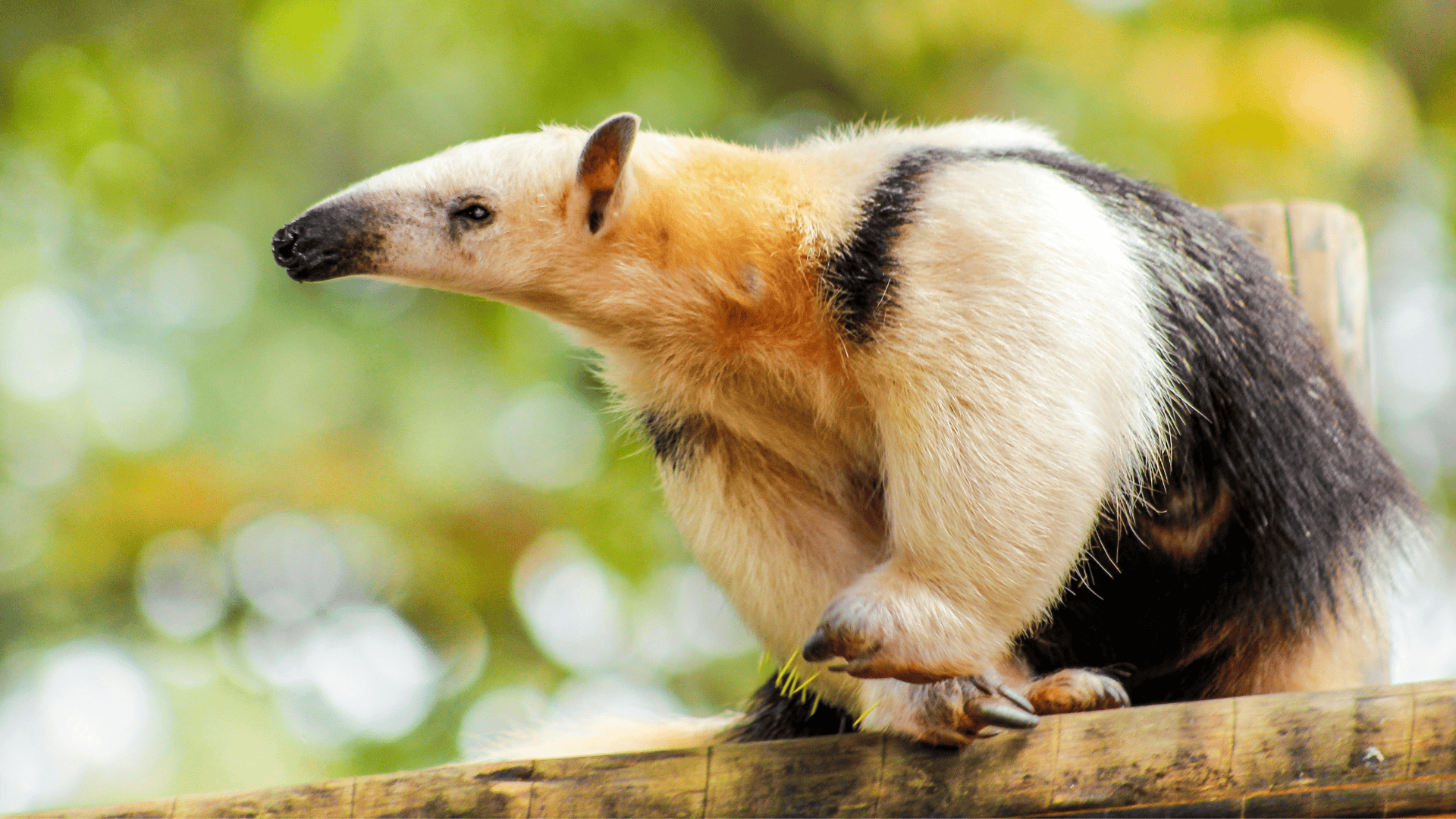
With its long, sticky tongue, the anteater makes a meal out of thousands of ants and termites each day. Found in South American jungles, these unusual creatures live up to 16 years and spend their time roaming forests and grasslands.
2. Armadillo
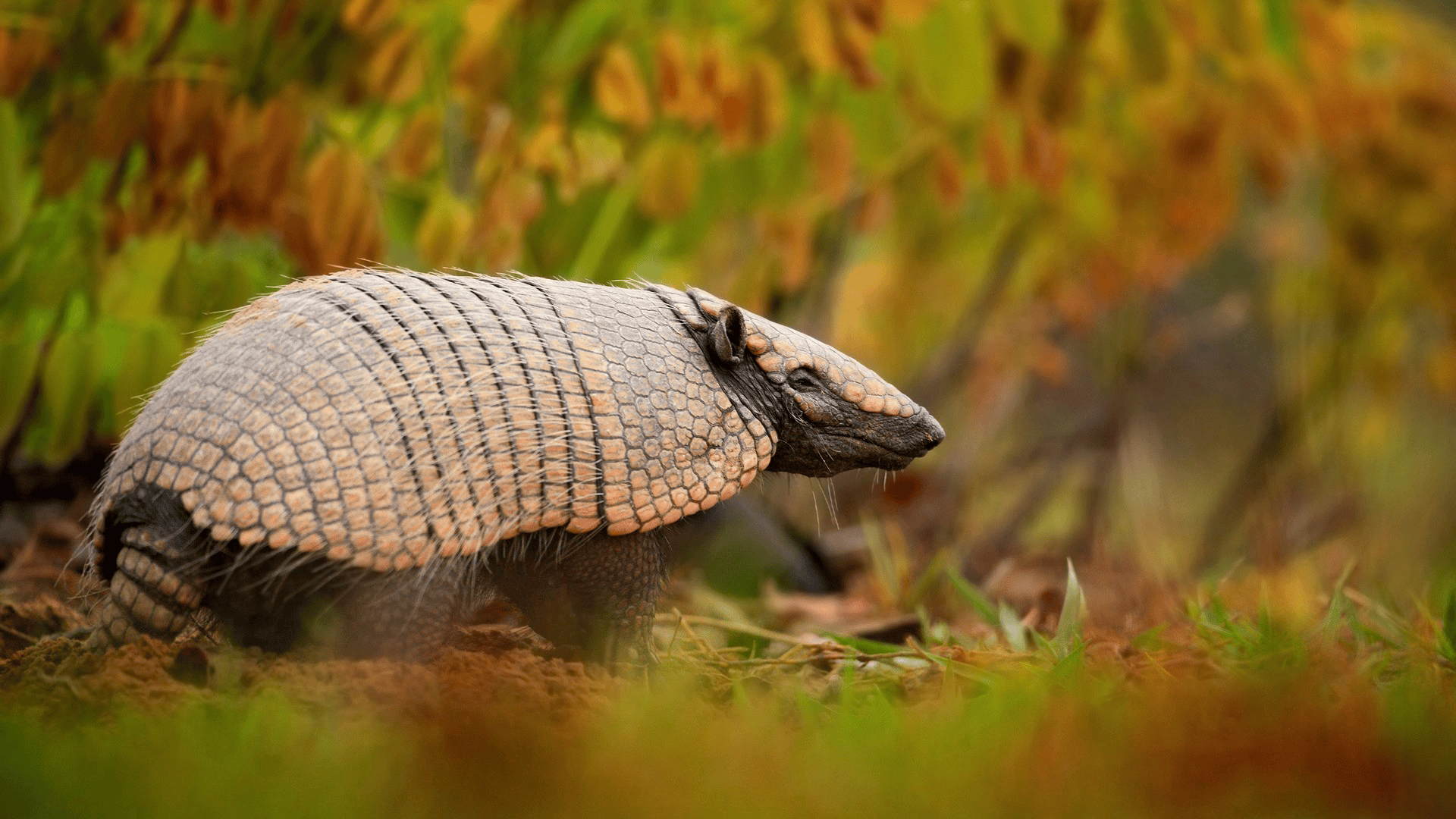
Wrapped in natural armor, armadillos shuffle through forests looking for insects, larvae, and plants. These small, quiet diggers live up to 15 years, rolling into a ball when danger nears. Their tough shell is a clever shield against predators.
3. Bongo Antelope
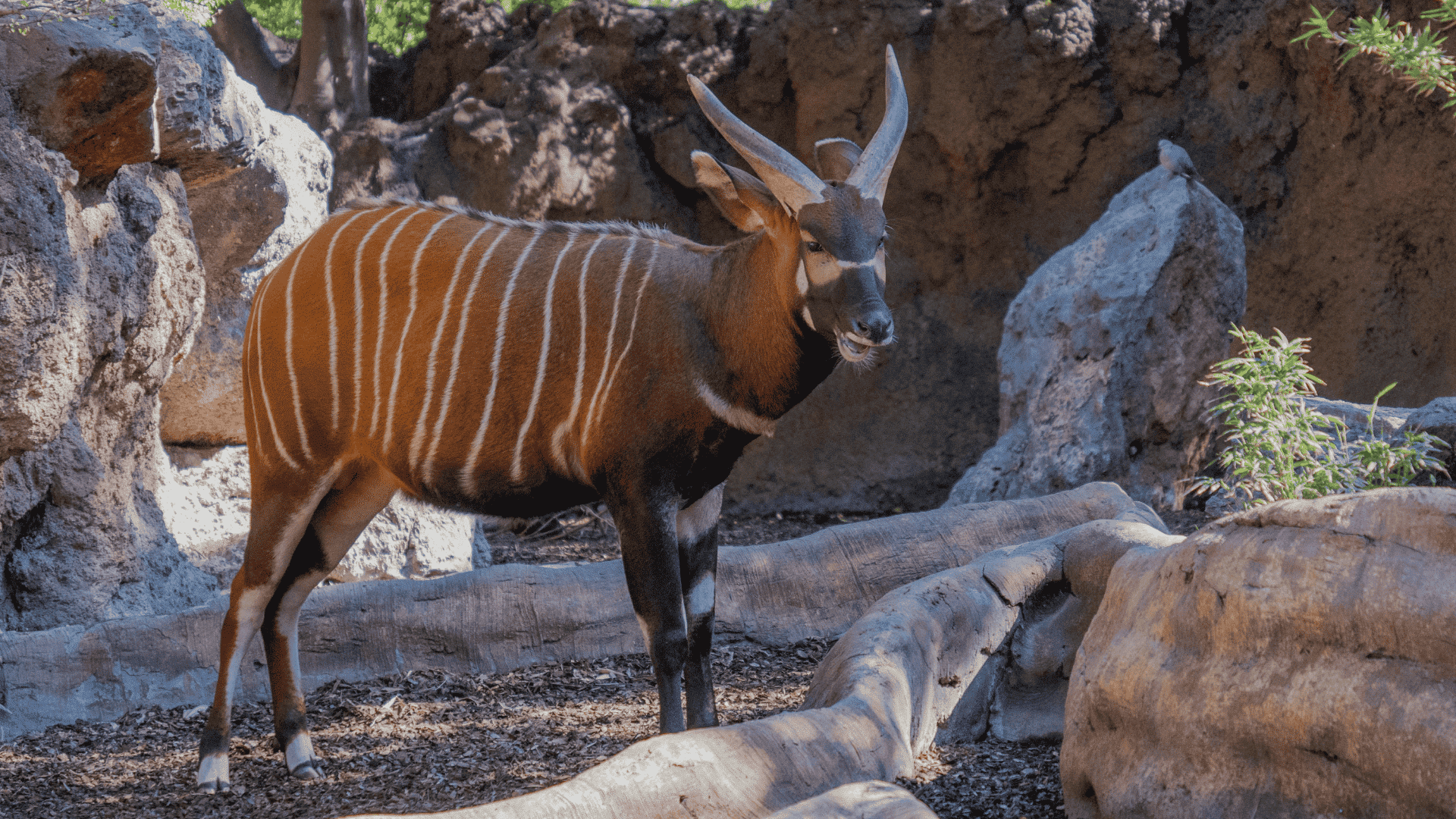
The bongo is a striking antelope with bold stripes that melt into the African rainforest shadows. Living for around 20 years, it grazes on grasses and leaves, moving gracefully through dense trees while staying hidden from predators.
4. Capuchin Monkey
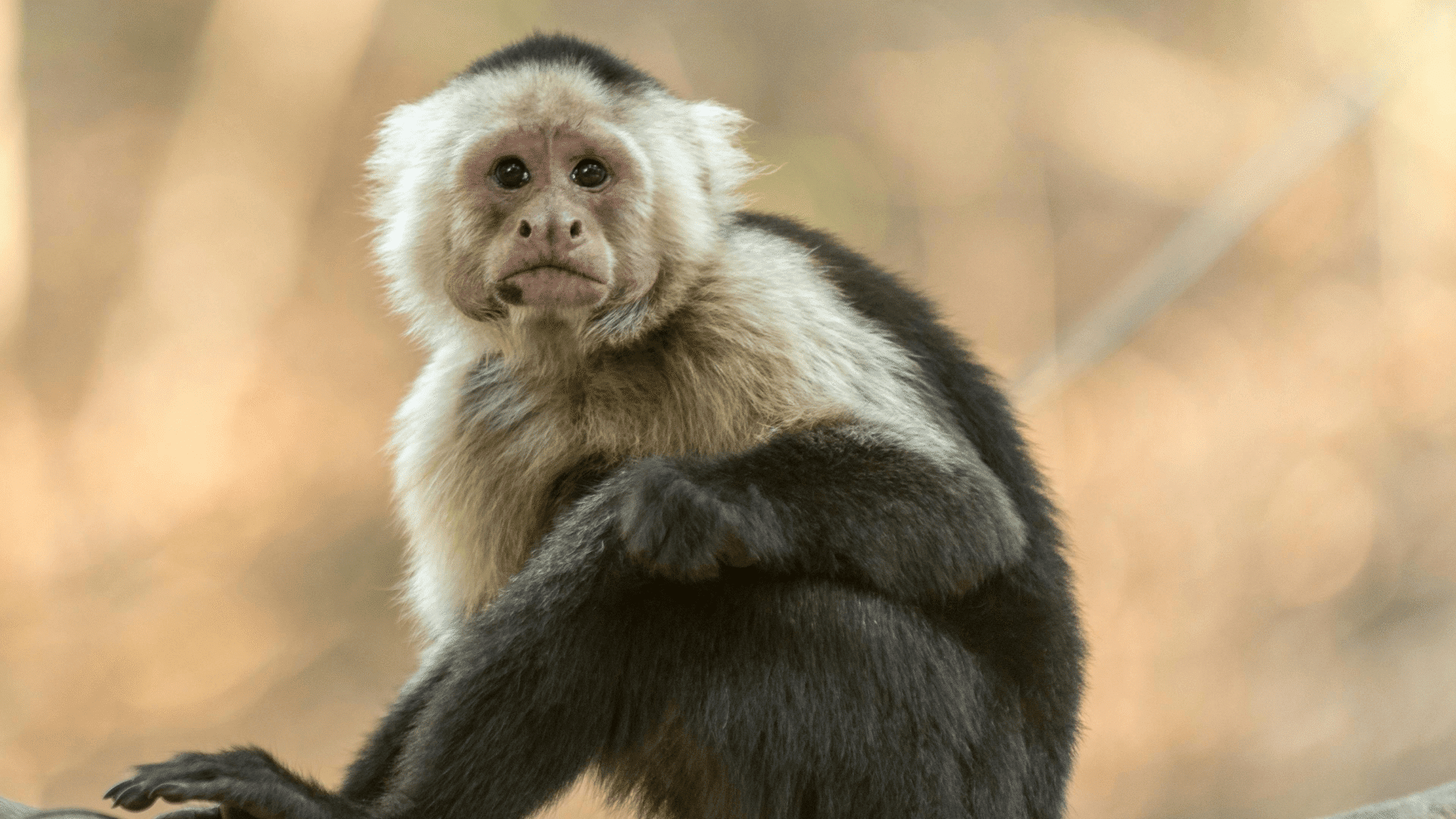
Capuchins are curious, clever monkeys that thrive in Central and South America. Living up to 25 years, they eat fruits, insects, and small animals. Known for their intelligence, they spend their days roaming forests in lively, playful groups.
5. Capybara
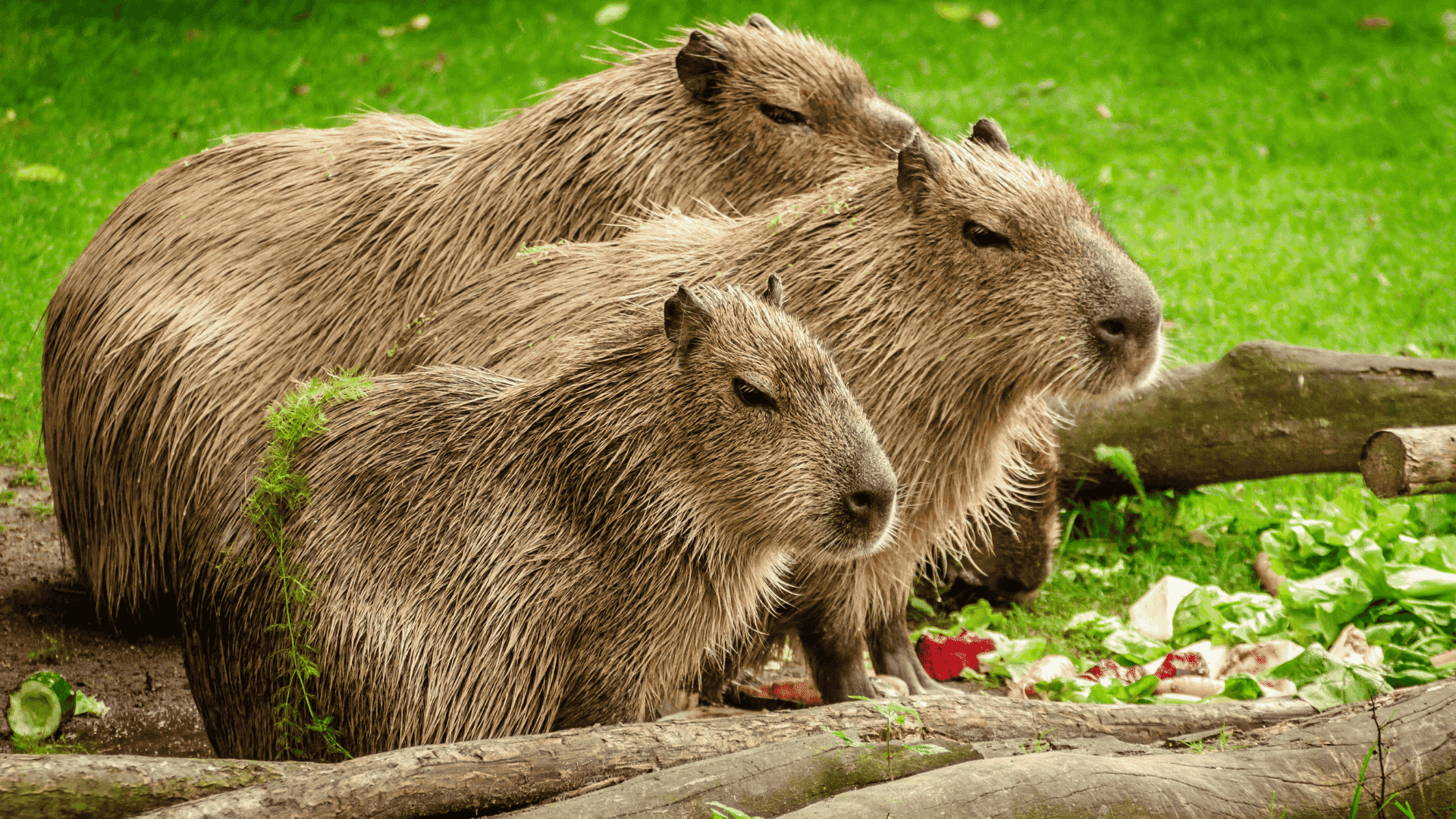
The world’s largest rodent, the capybara, loves the water as much as land. Found across South America, these gentle herbivores live in big groups, munching on grasses and plants. With a lifespan of about 12 years, they’re true social grazers.
6. Chimpanzee
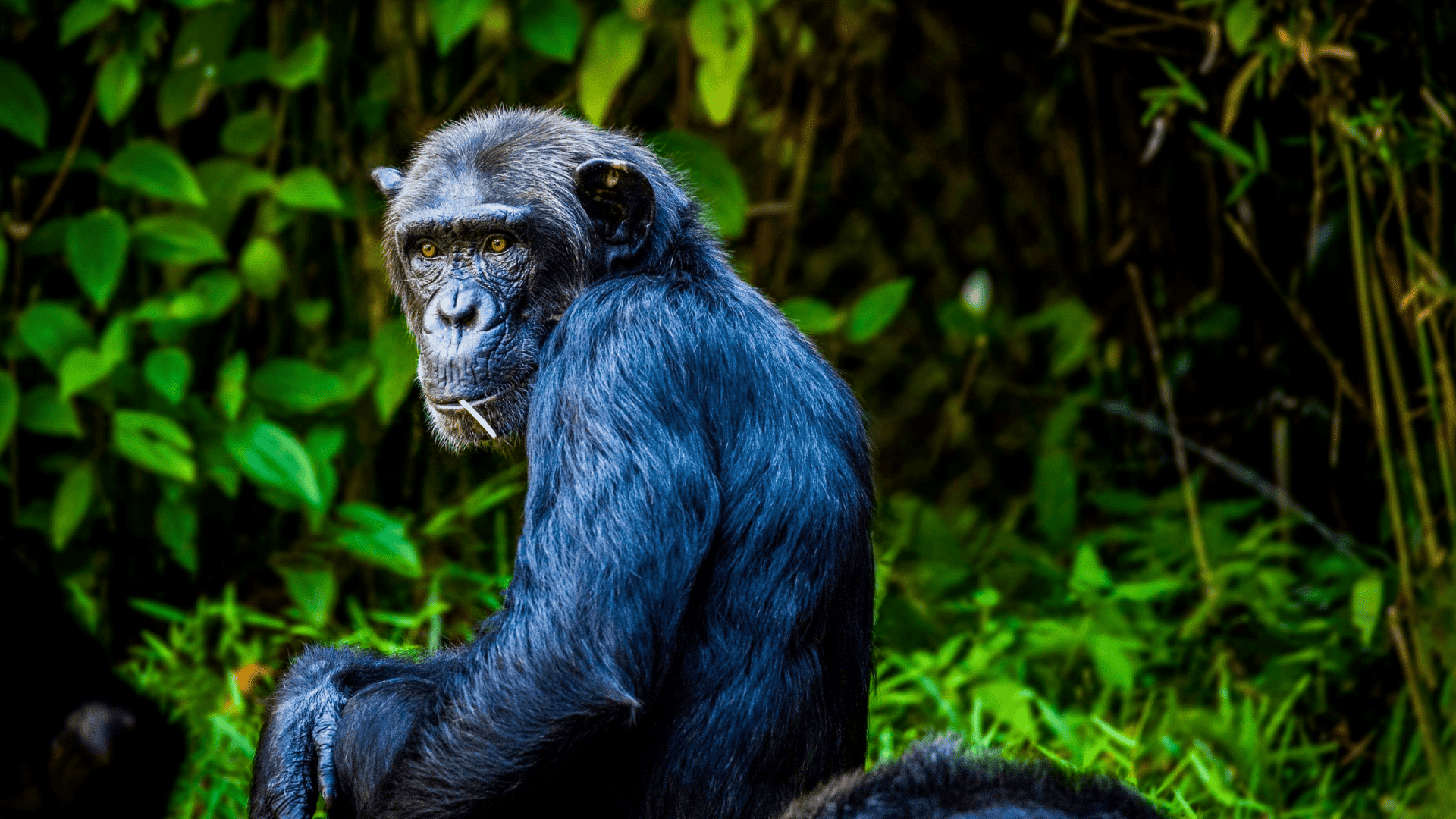
Chimpanzees share many traits with humans, including tool use, social bonds, and problem-solving. Found in African jungles, they live around 40 years, feeding on fruits, leaves, and insects. Their close-knit communities show just how intelligent and cooperative these primates are.
7. Cougar (Puma)
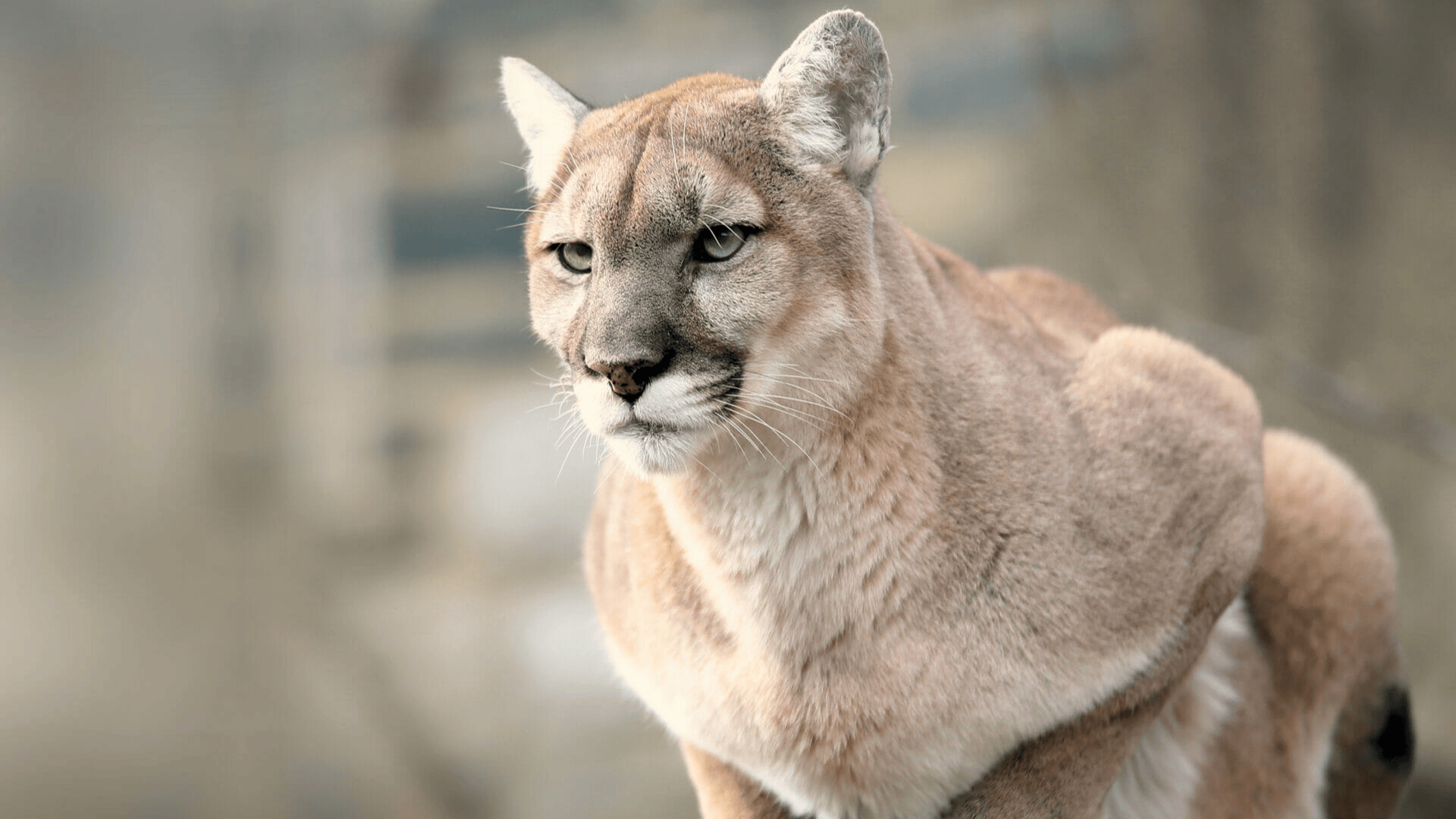
Silent and powerful, the cougar prowls American forests with unmatched skill. Living up to 13 years, it hunts deer and smaller animals using bursts of speed. Known as mountain lions or pumas, these cats rule wide territories alone.
8. Elephant
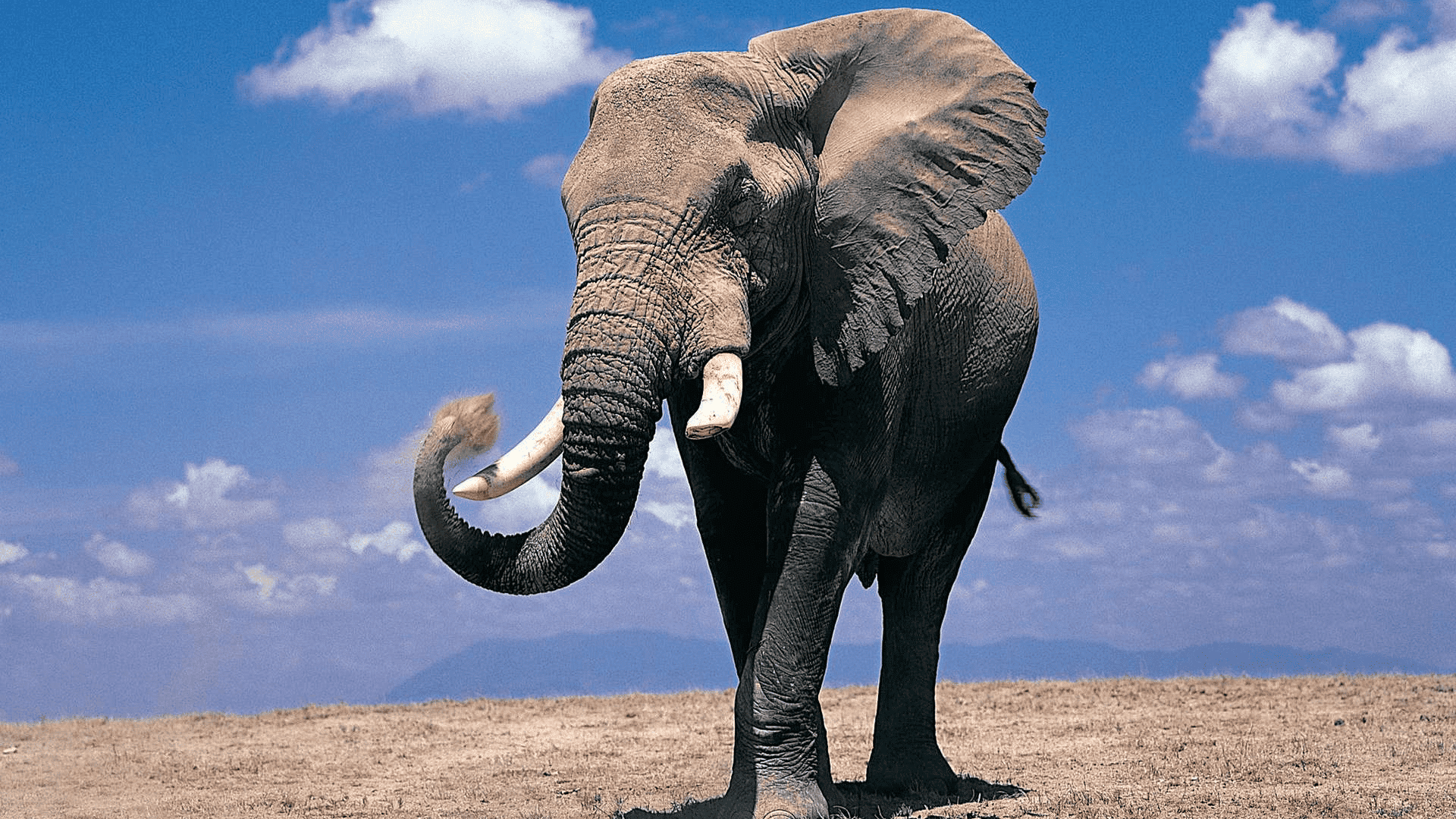
Gentle giants of Asian forests, elephants live up to 60 years. With their trunks, they pull down branches, eat fruits, and even clear forest paths. Highly social, these animals form family groups where wisdom passes from elders to young.
9. Gorilla
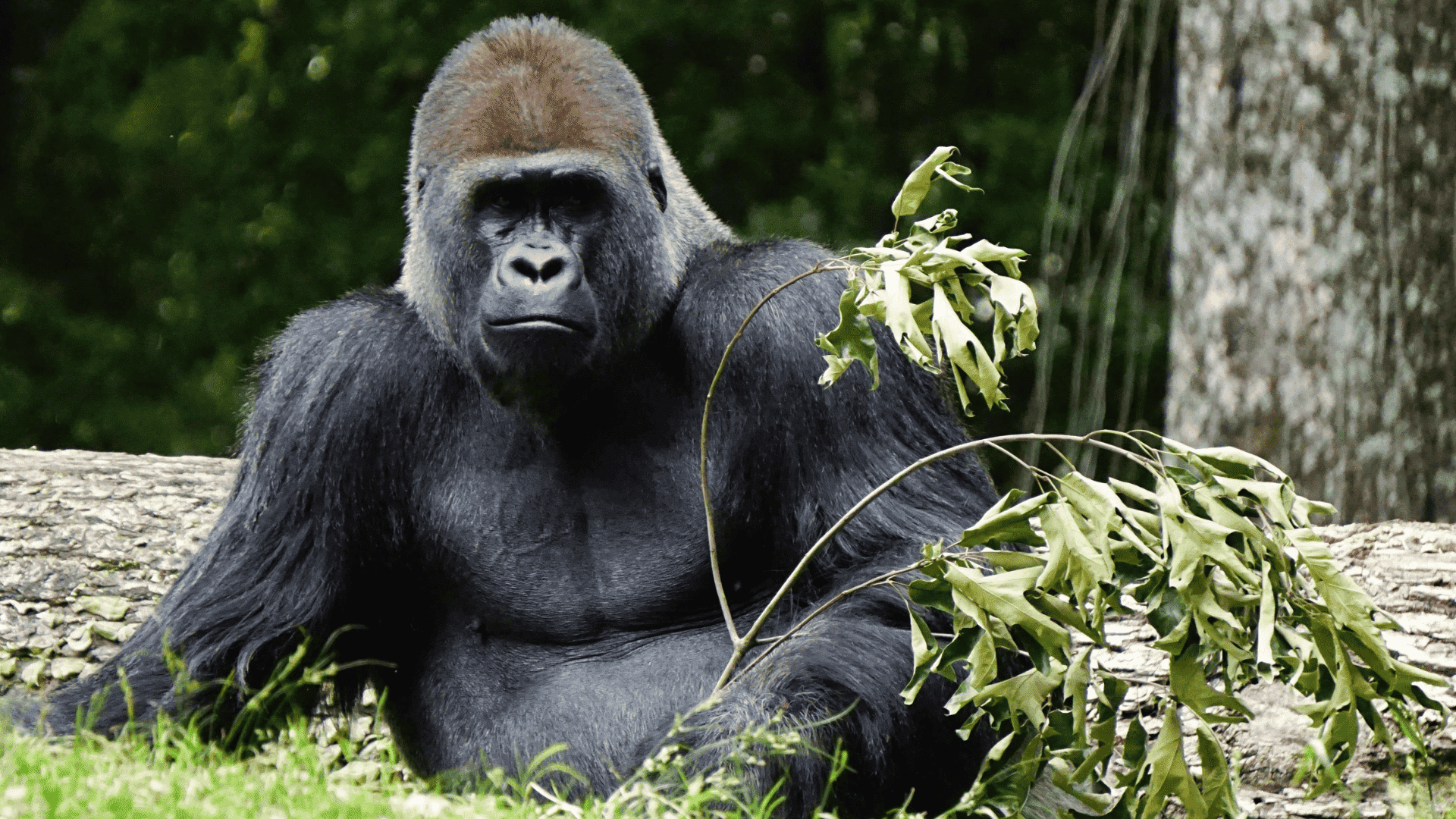
Strong yet gentle, gorillas are rainforest dwellers who live up to 40 years. They eat fruits and leaves, moving in family groups led by a silverback male. These powerful leaders protect their troop, showing incredible loyalty and care.
10. Howler Monkey
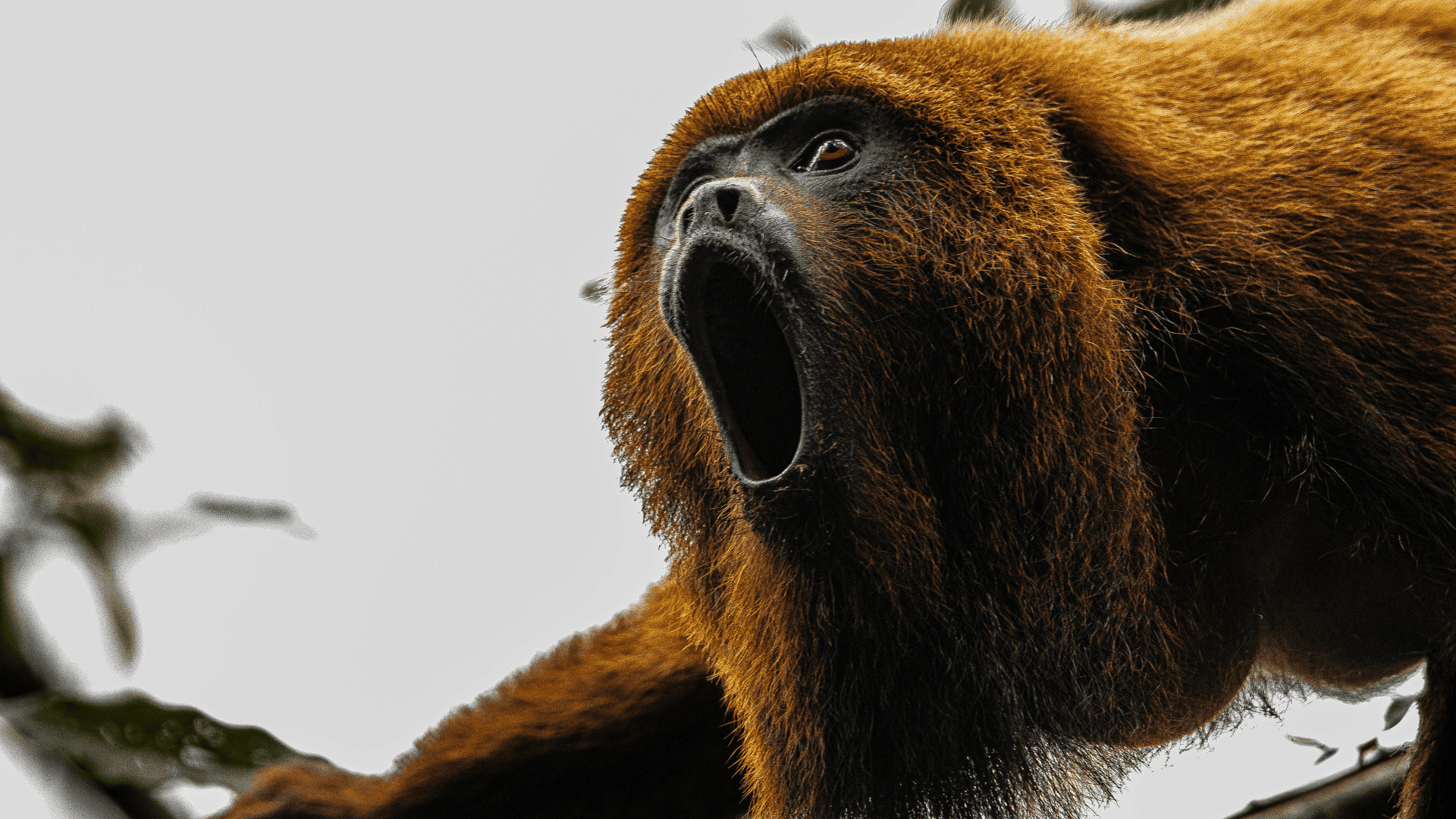
Known for their booming calls that echo for miles, howler monkeys mark their rainforest homes with sound. Living up to 20 years, they feed on leaves and fruits. Their deep voices make them some of the jungle’s loudest residents.
11. Jaguar
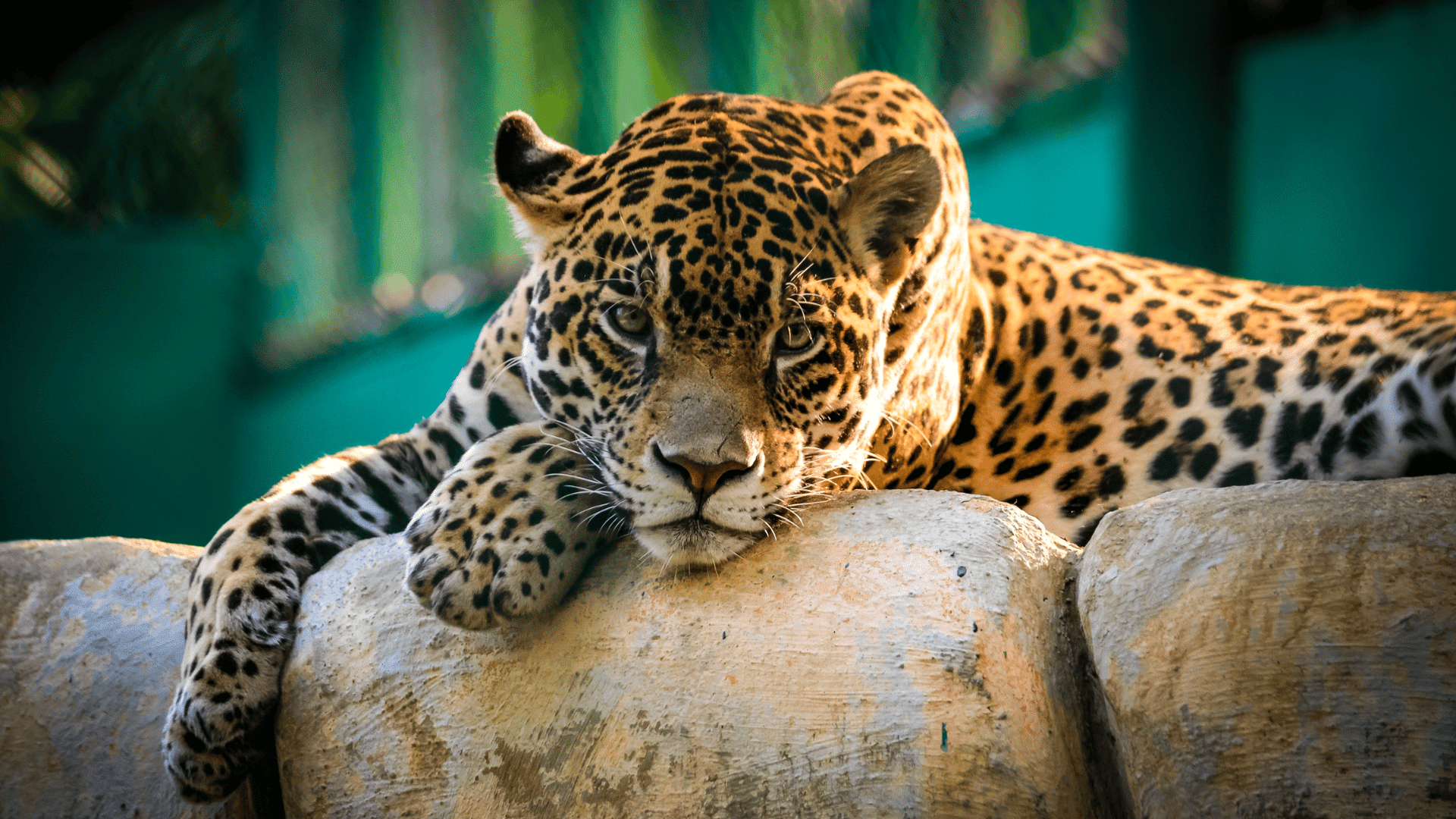
Jaguars, with their golden coats and black rosettes, rule Central and South American jungles. These cats live about 15 years and are skilled swimmers. Their crushing bite lets them hunt everything from capybaras to caimans, making them fierce top predators.
12. Leopard
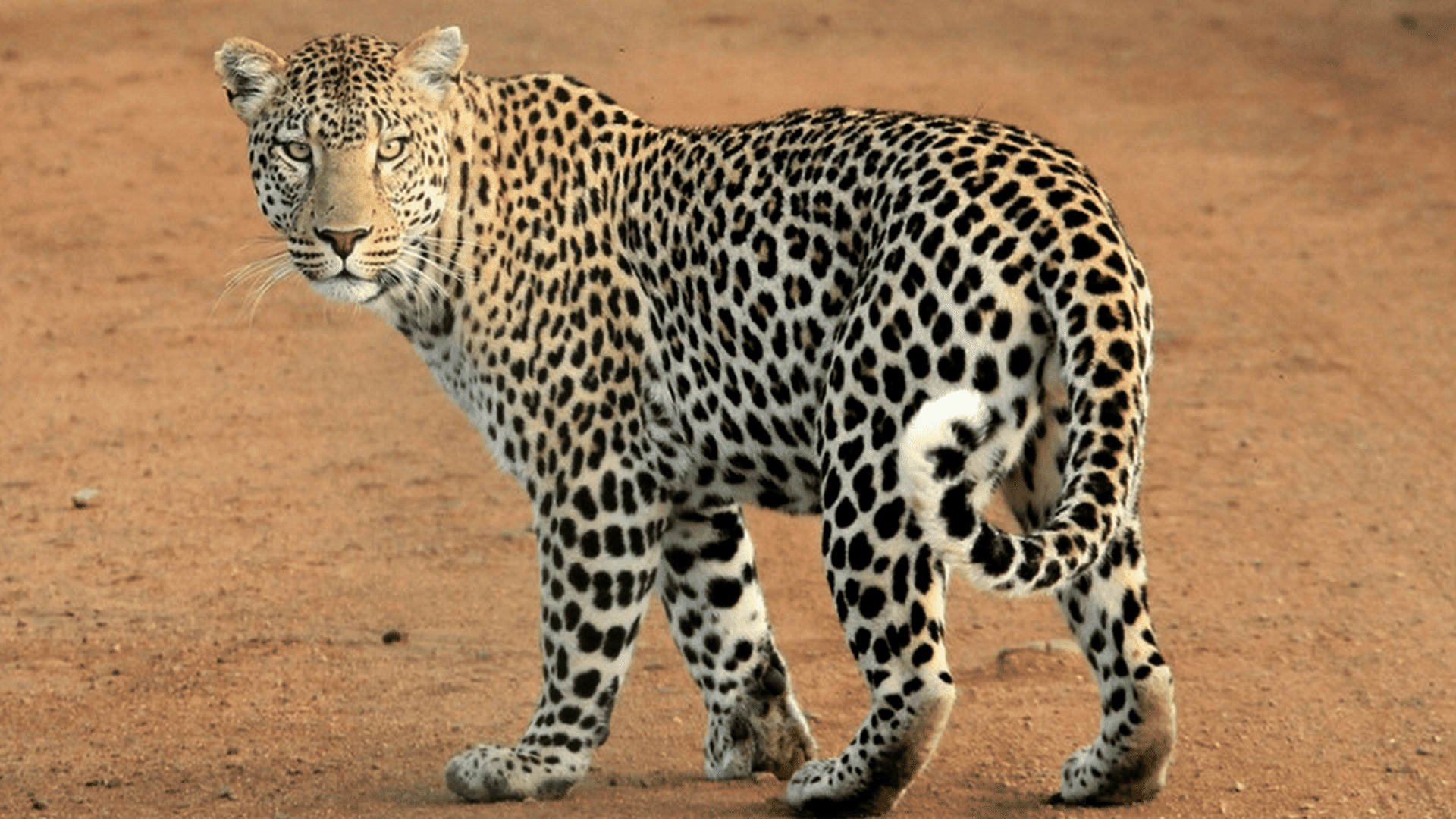
Graceful and adaptable, leopards roam African and Asian forests. They live around 17 years, hunting antelope and monkeys. Often, dragging kills up trees; they keep food safe from rivals. Their spotted coats make them nearly invisible in tall grass.
13. Manatee
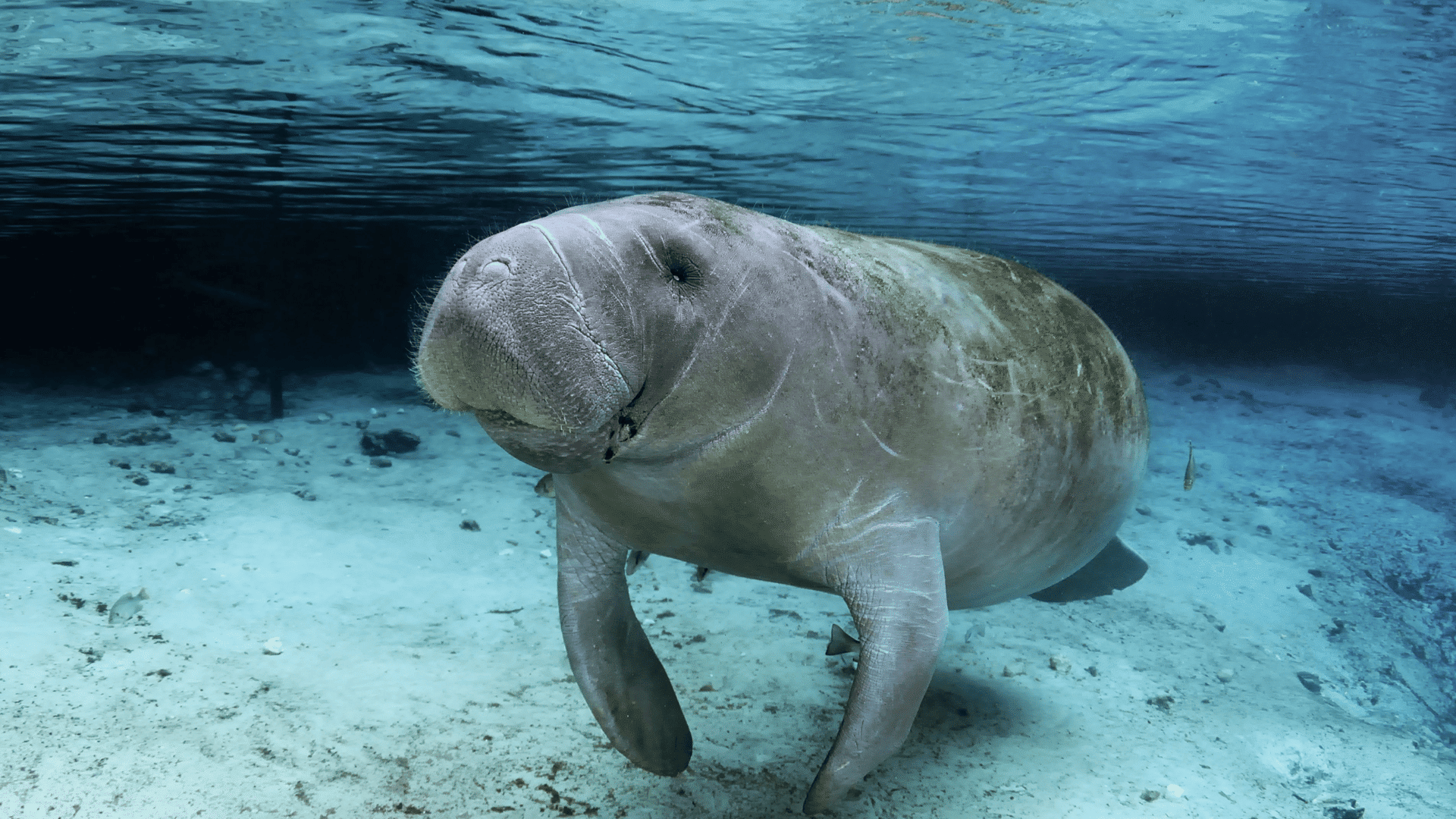
Calm and slow, manatees drift through rivers and coastal waters, grazing on seagrass for hours. Sometimes called sea cows, they live up to 60 years. These peaceful giants remind us that strength doesn’t always come with speed or power.
14. Ocelot
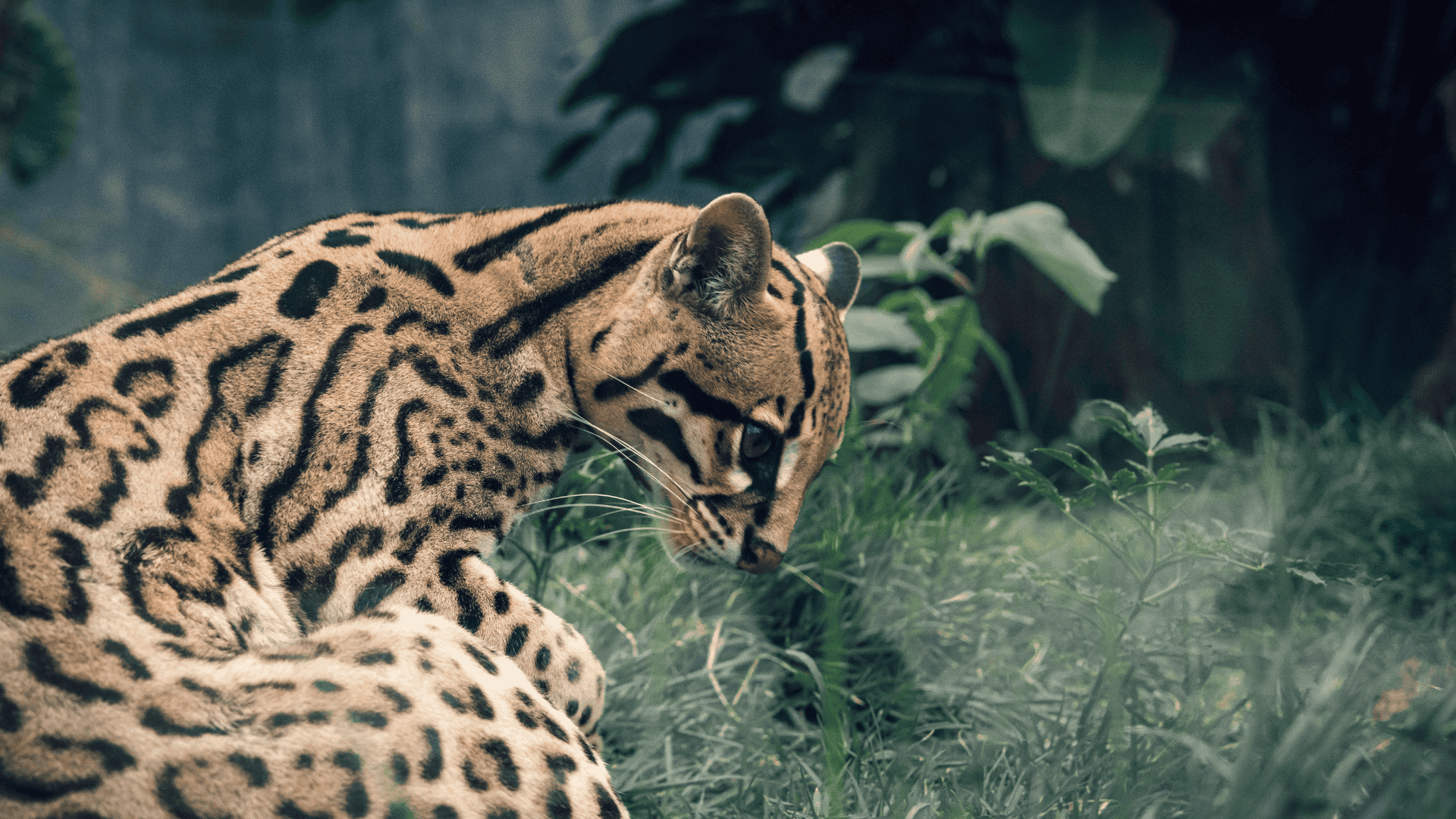
Sleek and secretive, ocelots prowl South American jungles under the cover of night. Living up to 10 years, they stalk rodents and birds. Their spotted coats help them vanish into the undergrowth, making them skilled hunters with a touch of mystery.
15. Okapi
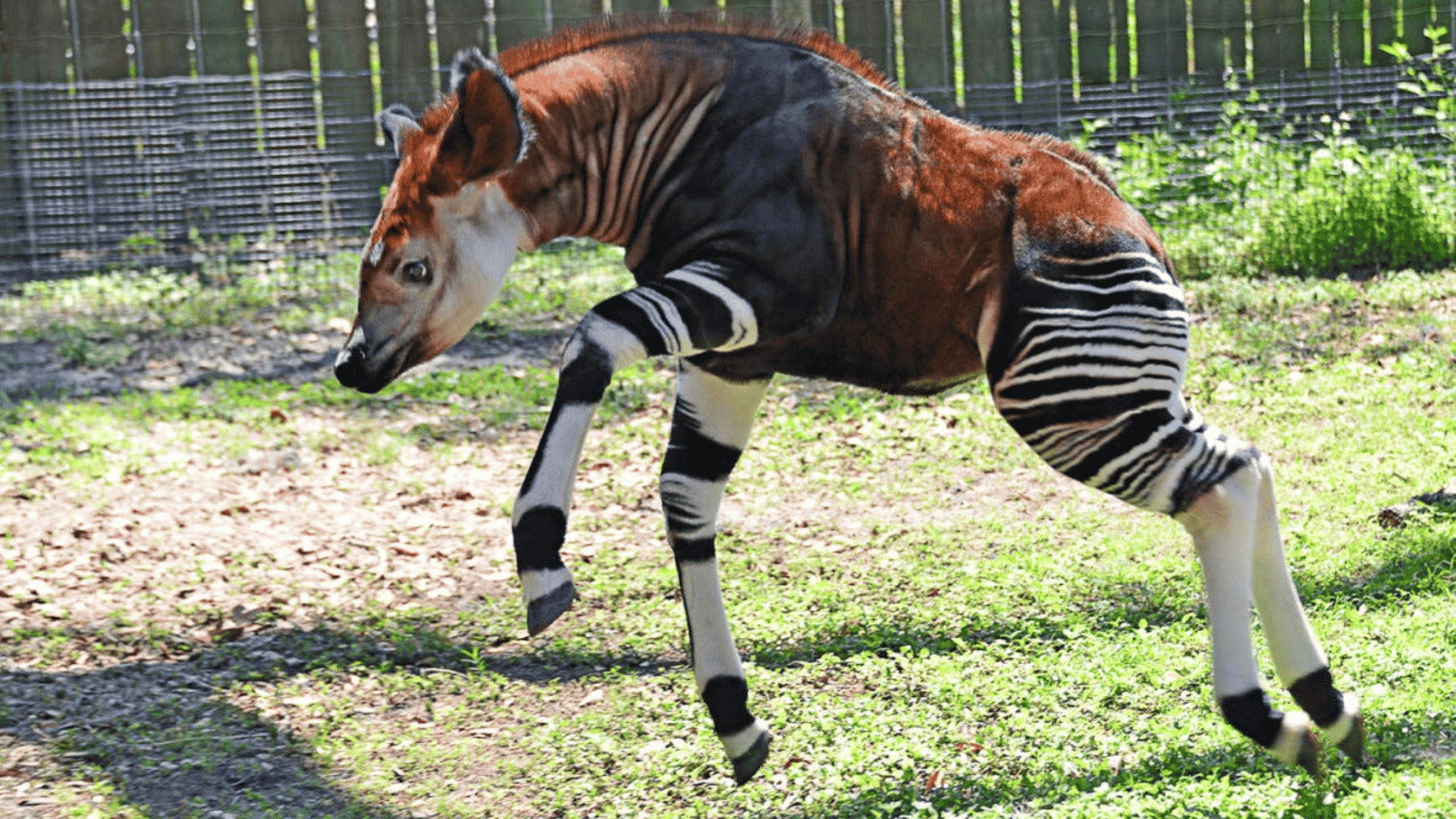
Often called the “forest giraffe,” okapis live in Congo’s rainforests. Their striped legs help them disappear into shadows. Surviving up to 30 years, they feed on leaves and fruits while leading mostly solitary lives away from predators.
16. Orangutan
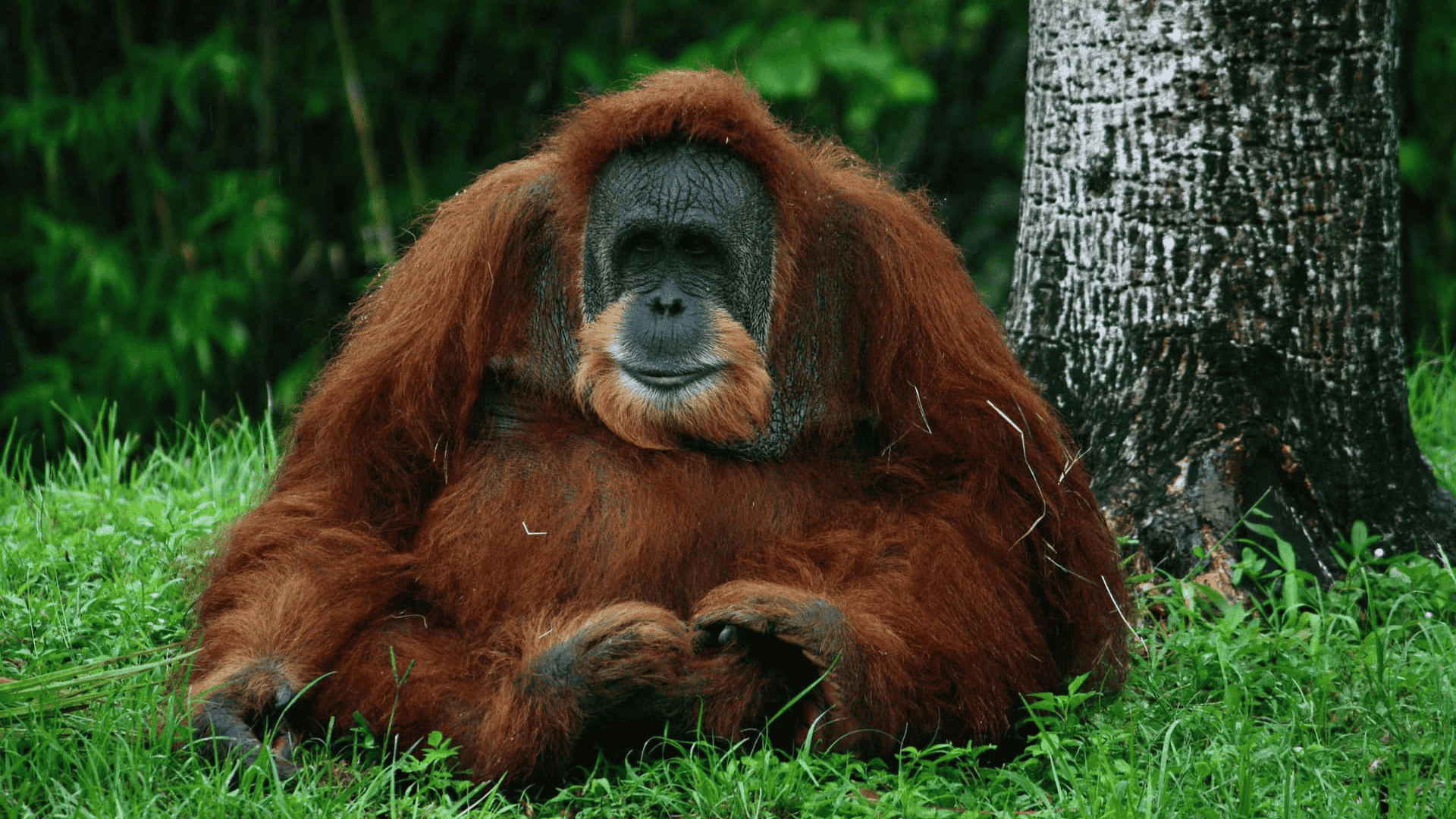
With long arms built for climbing, orangutans spend most of their lives high in the trees of Borneo and Sumatra. Living 40 years or more, they eat fruits and leaves. Solitary yet intelligent, they’re often called the wise ones of the forest.
17. Pangolin
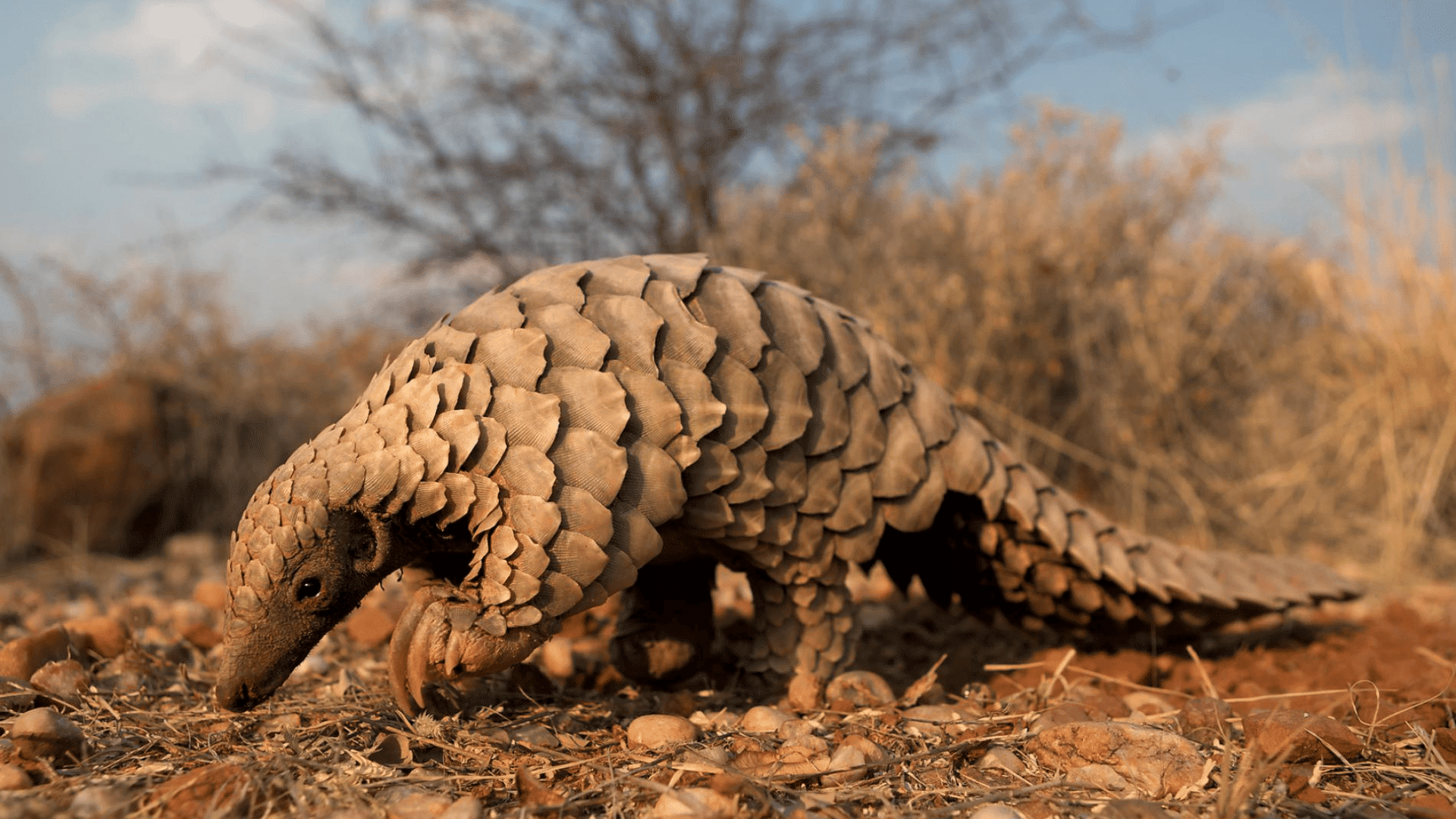
Armored in scales, the pangolin is unlike any other. It curls into a ball when threatened and lives about 20 years. Feeding mainly on ants and termites, these shy creatures are sometimes called the “scaly anteaters” of the jungle.
18. Rhinoceros
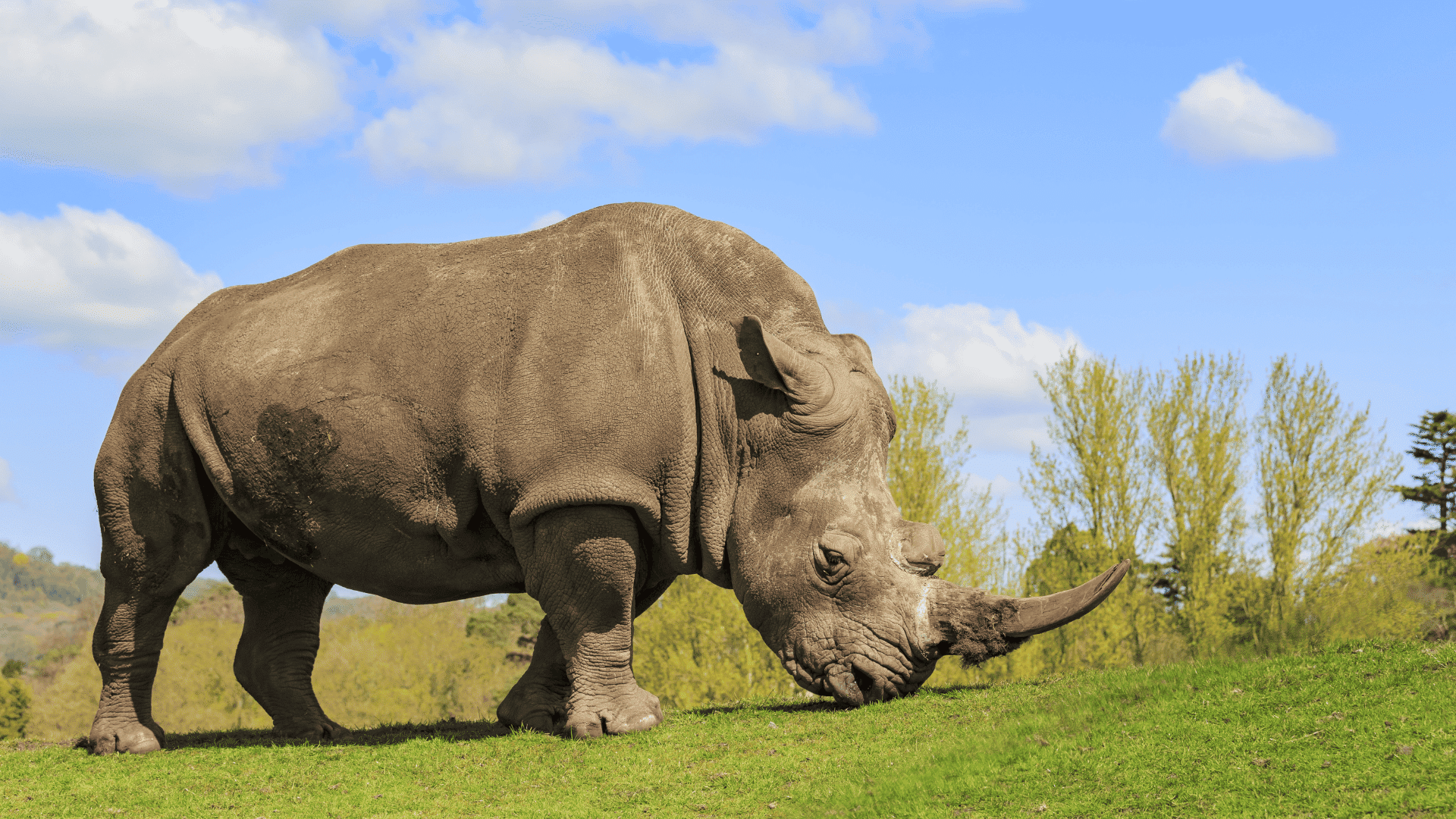
Rhinos are jungle and savanna heavyweights, living around 40 years. With thick skin and powerful horns, they’re built for defense. Herbivores at heart, they graze on grasses and fruits, showing that size and strength can also belong to gentle grazers.
19. Sloth
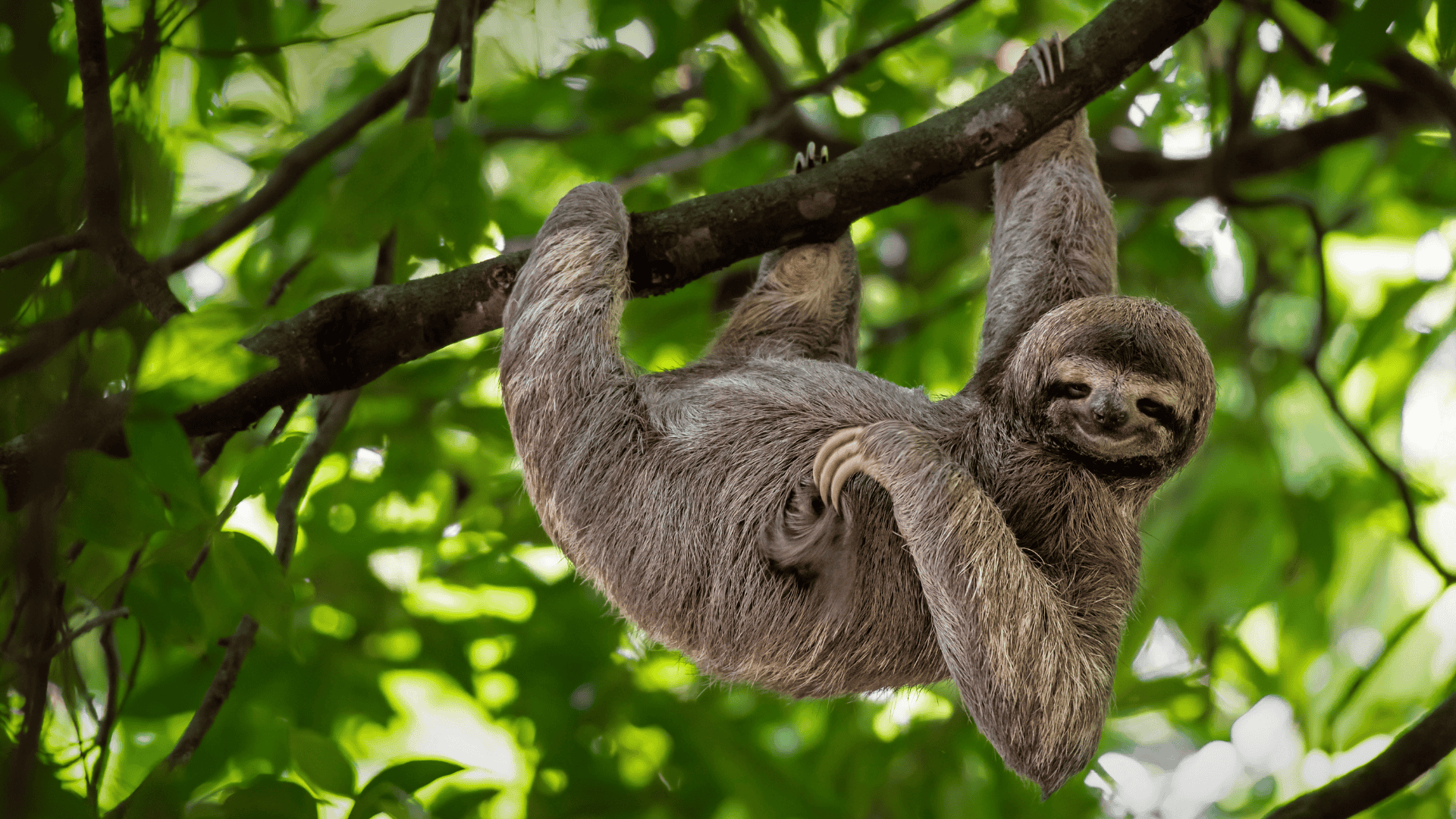
Slow and steady, sloths spend nearly their entire lives hanging from rainforest trees. Living up to 30 years, they feed on leaves and fruits. Their calm pace and sleepy nature make them some of the jungle’s most relaxed residents.
20. Spider Monkey
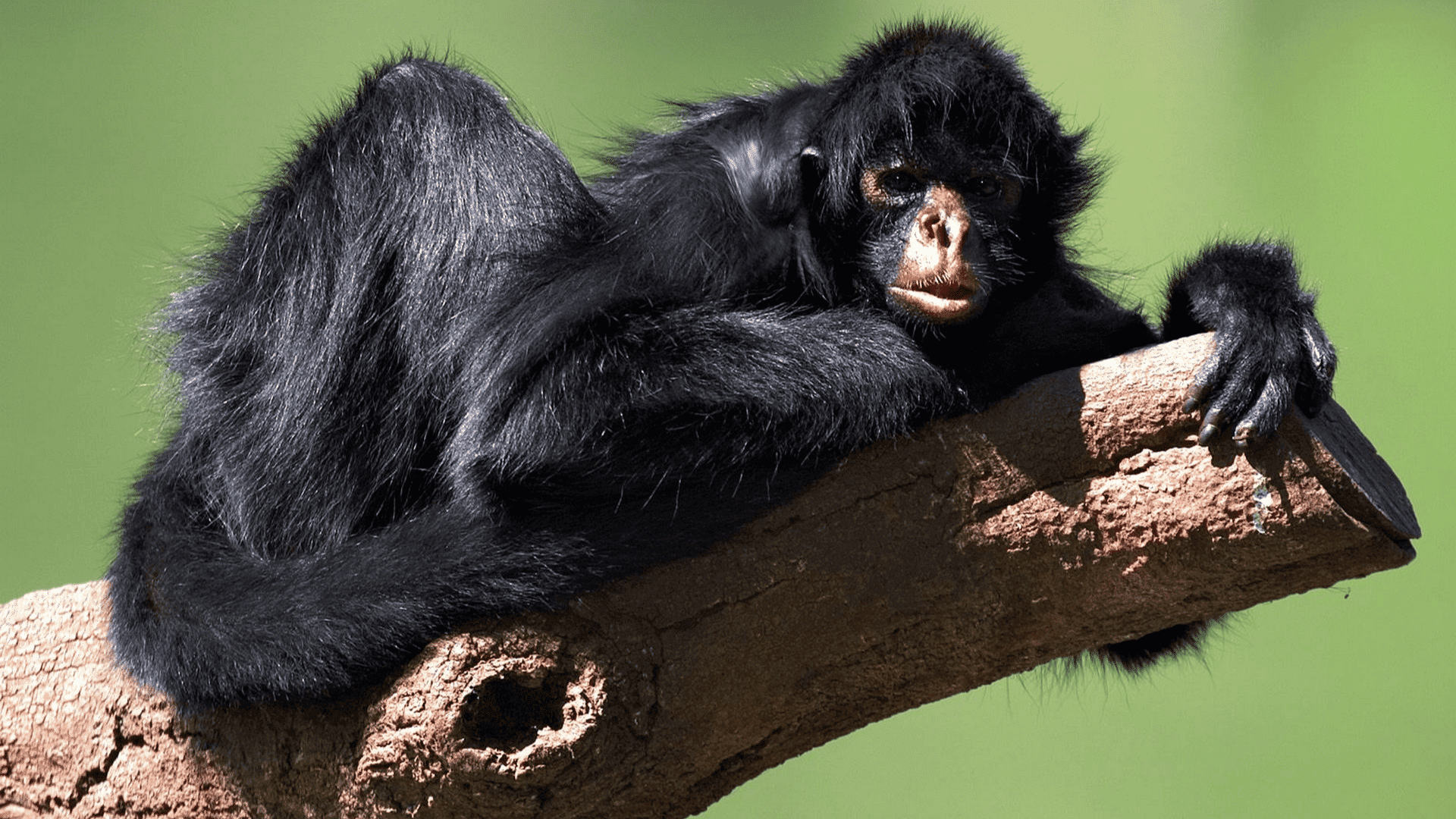
Spider monkeys are agile acrobats of Central and South American forests. With long limbs and tails, they swing easily from tree to tree. Living about 25 years, they thrive in groups, feasting on fruits and seeds while leaping through canopies.
21. Tapir
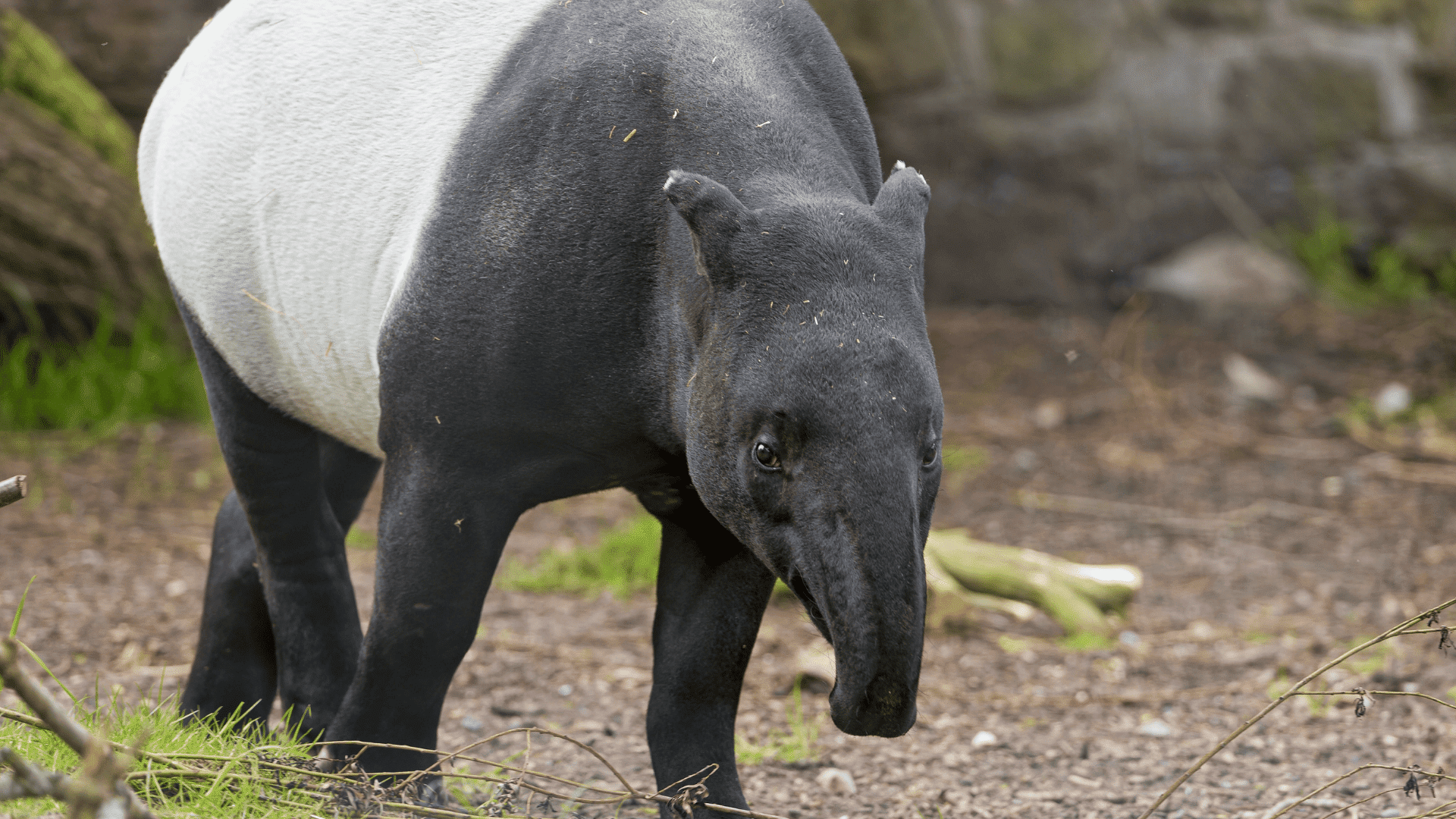
Shy and nocturnal, tapirs roam South American rainforests for up to 30 years. Using their long snouts, they grab leaves and fruits with ease. Though quiet, these gentle plant-eaters play a big role in shaping forest growth.
22. Tiger
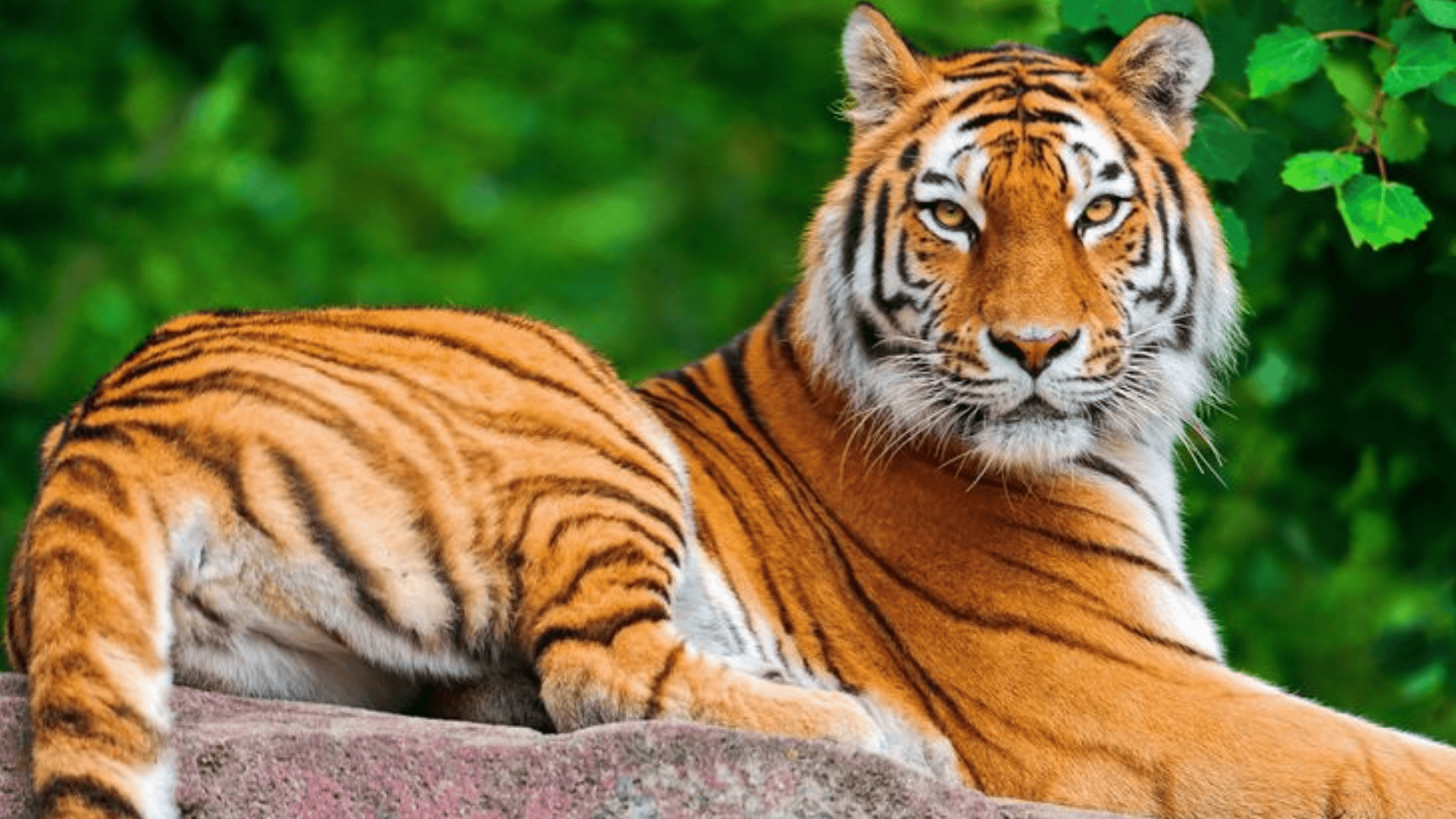
Tigers, the largest wild cats, stalk Asian jungles with unmatched stealth. Living up to 15 years, they hunt deer, boar, and buffalo alone. Their stripes not only mark beauty but also act as perfect camouflage in tall grass.
Birds
Jungle birds brighten forests with songs and feathers. They spread seeds, balance nature, and thrive both high in trees and near the ground.
23. Cock-of-the-Rock
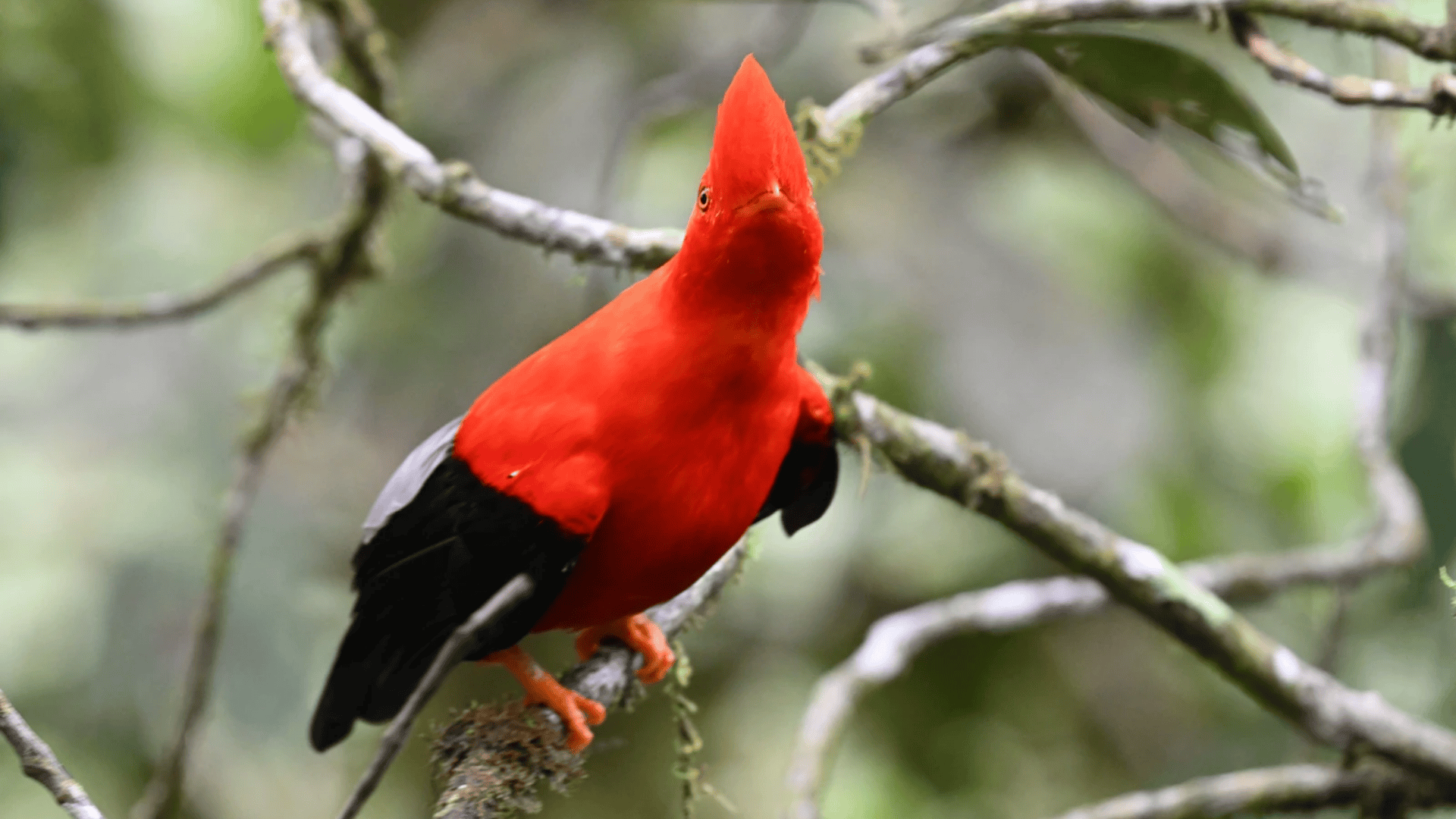
Hidden in South American rainforests, male cock-of-the-rocks flaunt blazing orange feathers. They live 8–14 years, dining on fruits and insects. During courtship, males gather to dance and call, transforming the forest floor into a stage of color.
24. Crested Serpent Eagle
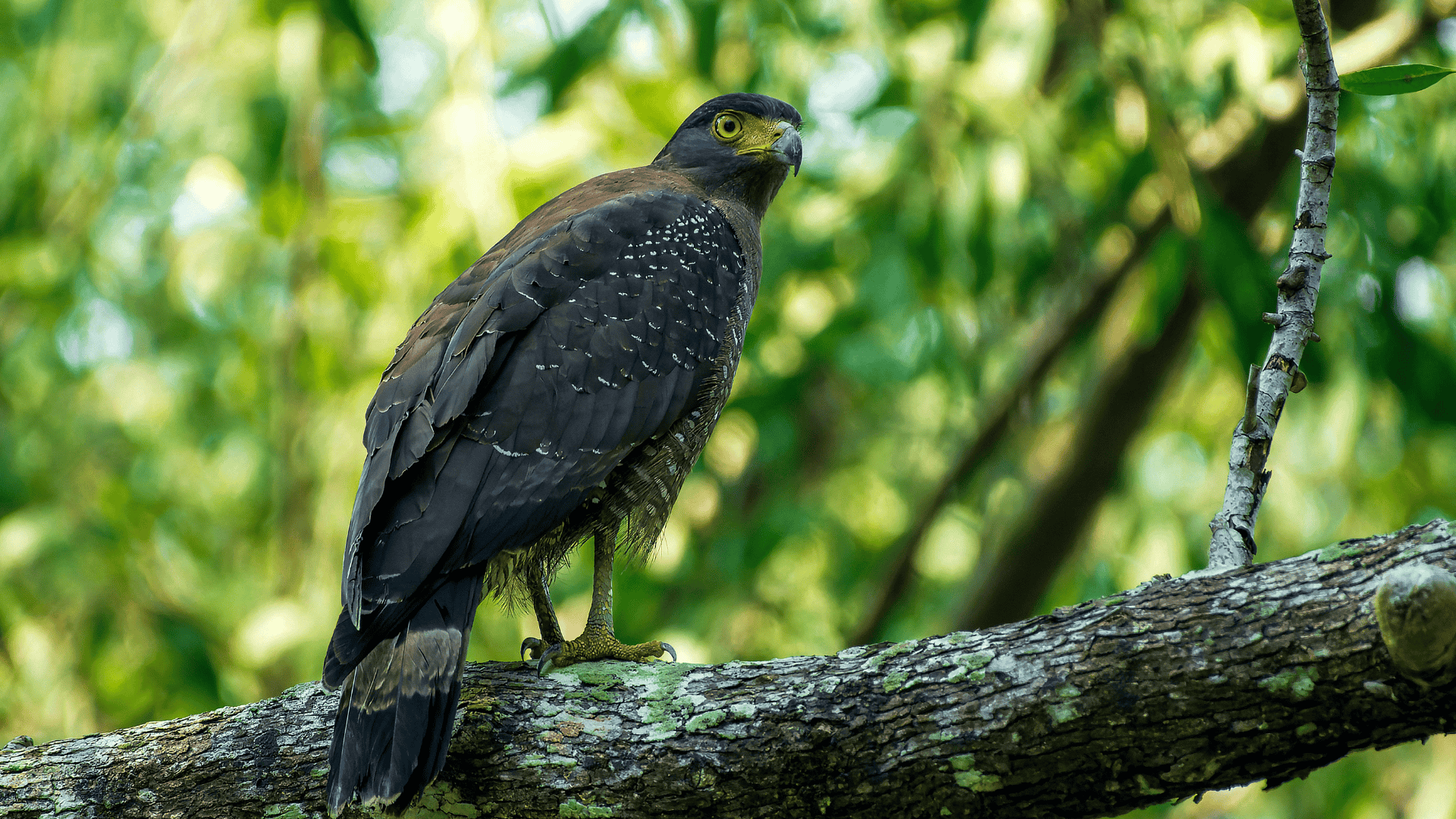
Sharp-eyed and fierce, the crested serpent eagle rules Asian forests. They live 15–20 years, dining mainly on snakes and lizards. Their piercing calls carry far, warning rivals and declaring dominance over hidden jungle territories.
25. Harpy Eagle
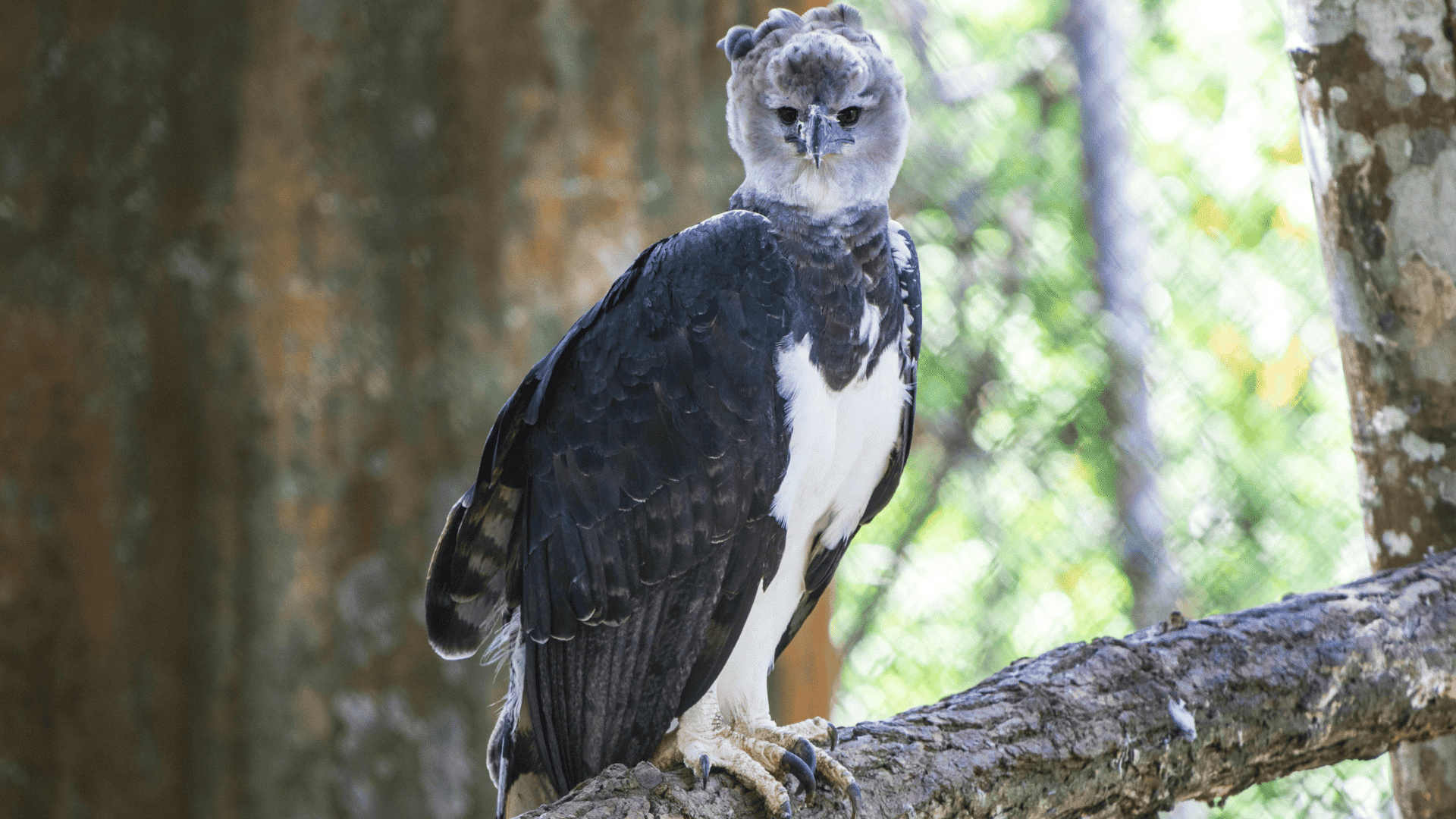
The harpy eagle reigns as a rainforest giant, with talons larger than a grizzly’s claws. Living 25–35 years, it preys on monkeys, sloths, and birds. Its power and silent swoops make it a fearsome yet fascinating hunter.
26. Hoatzin
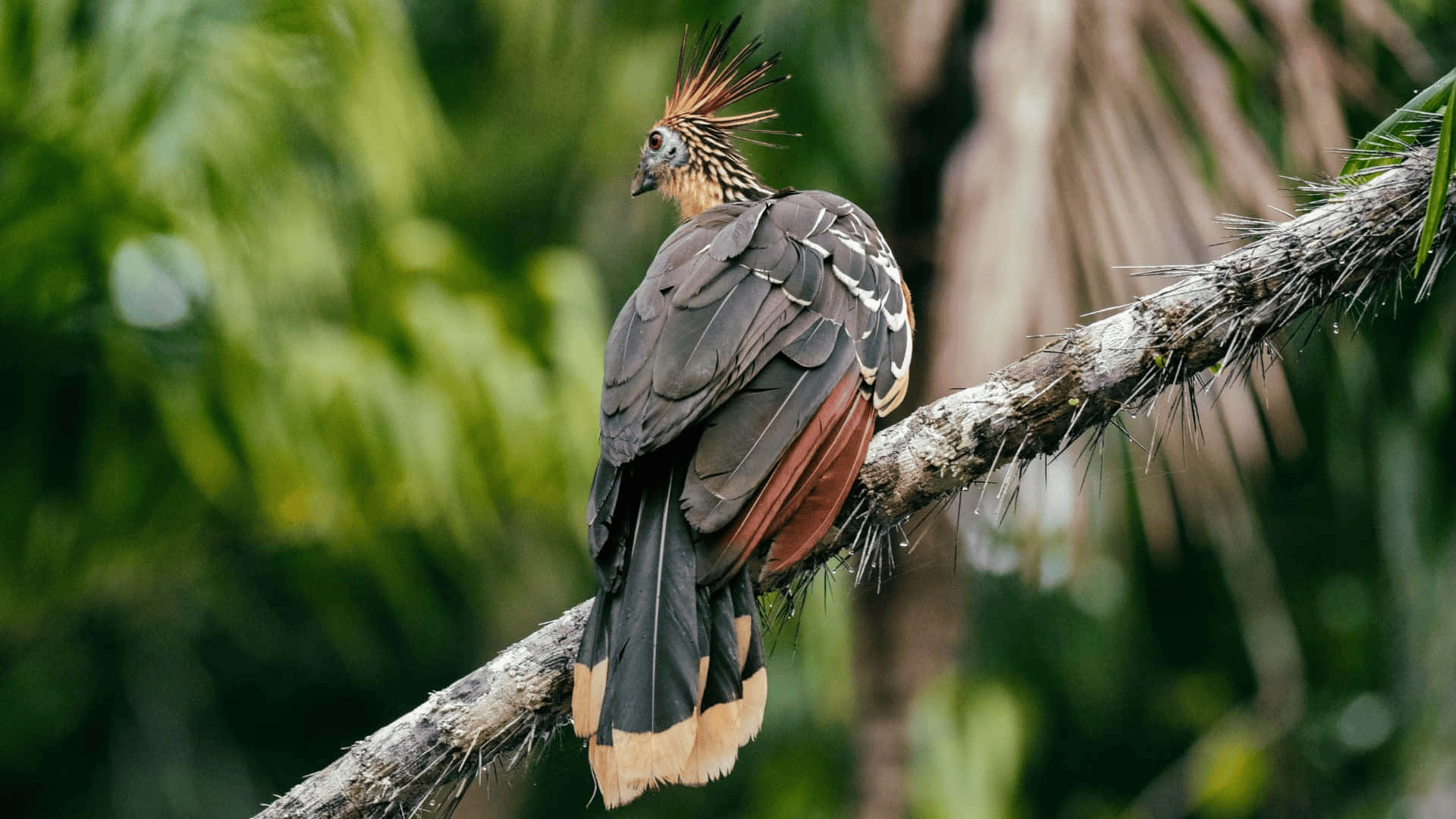
Nicknamed the “stinkbird,” hoatzins are quirky rainforest dwellers. Living 15–20 years, they eat leaves and flowers, digesting them through fermentation. Their odd odor aside, their clawed chicks and prehistoric look make them some of the jungle’s strangest birds.
27. Hornbill
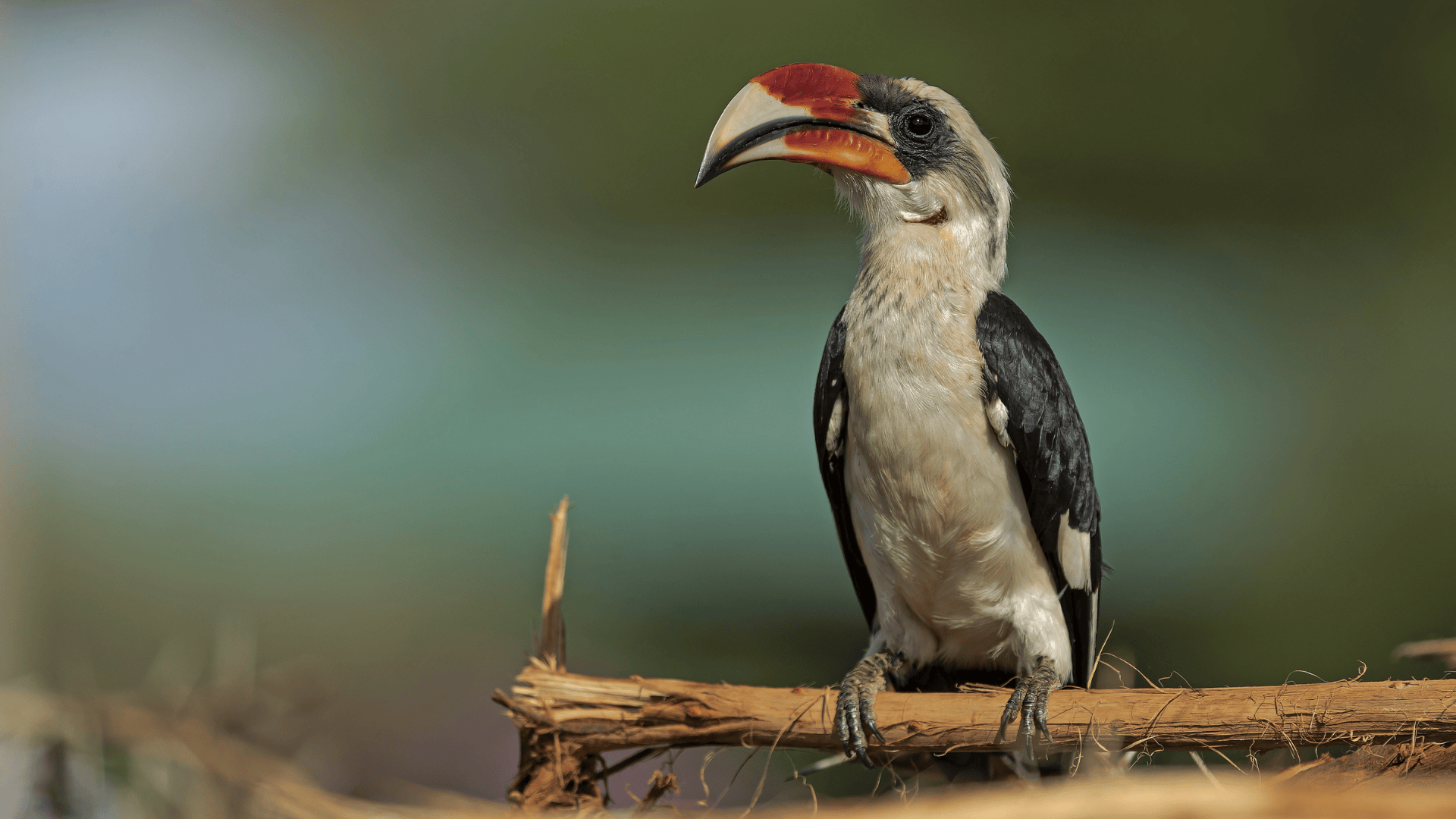
Hornbills, with their curved bills and casque crowns, are hard to miss. Found across Asia and Africa, they survive 35–50 years. Feeding on fruit, insects, and animals, their striking calls echo through jungles, marking territory and family bonds.
28. Kingfisher
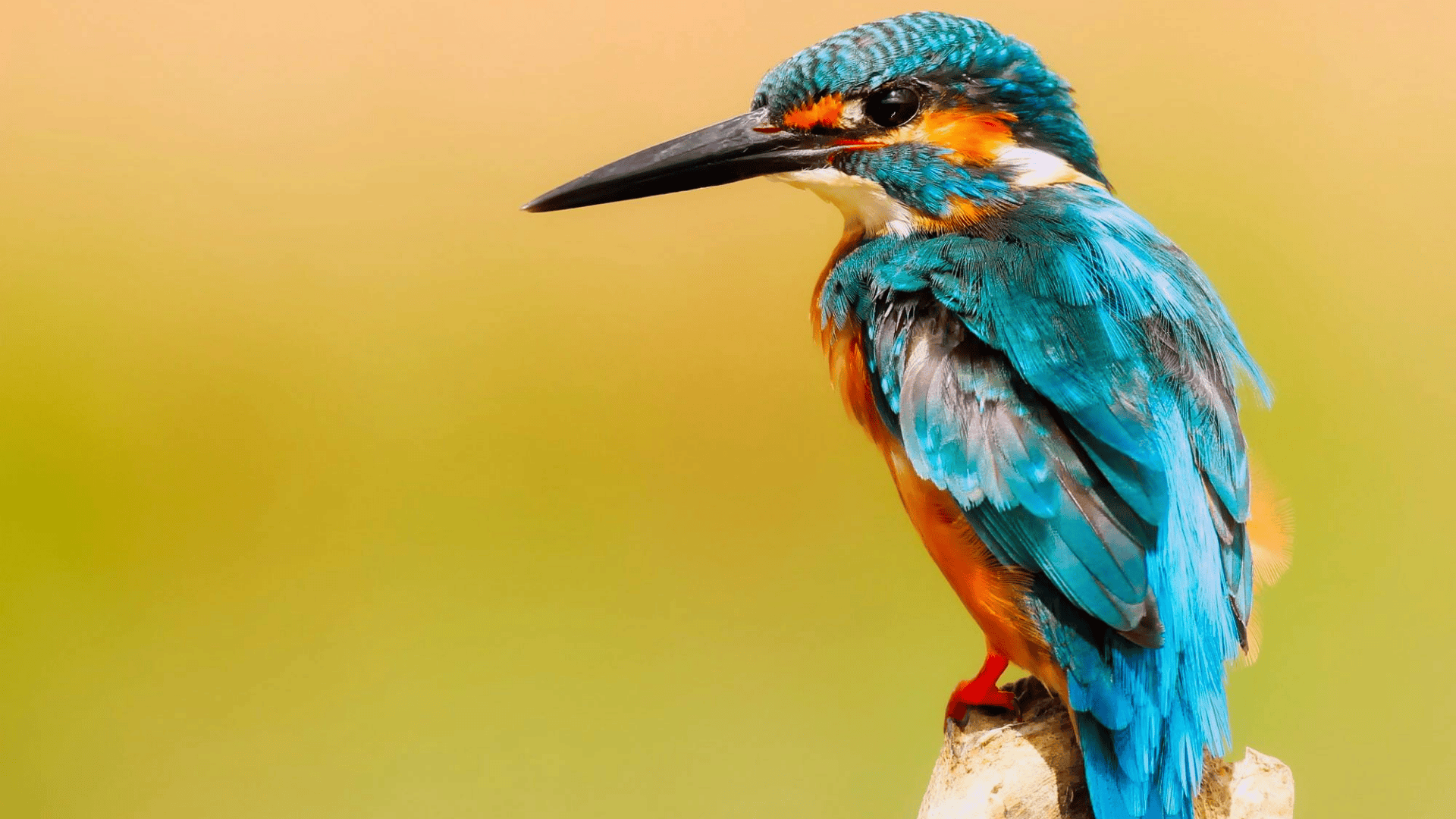
Kingfishers bring a flash of blue along jungle rivers. With lifespans of 6–14 years, they plunge headfirst for fish, insects, and frogs. Their sharp beaks and lightning strikes make every hunt a spectacular show.
29. Macaw
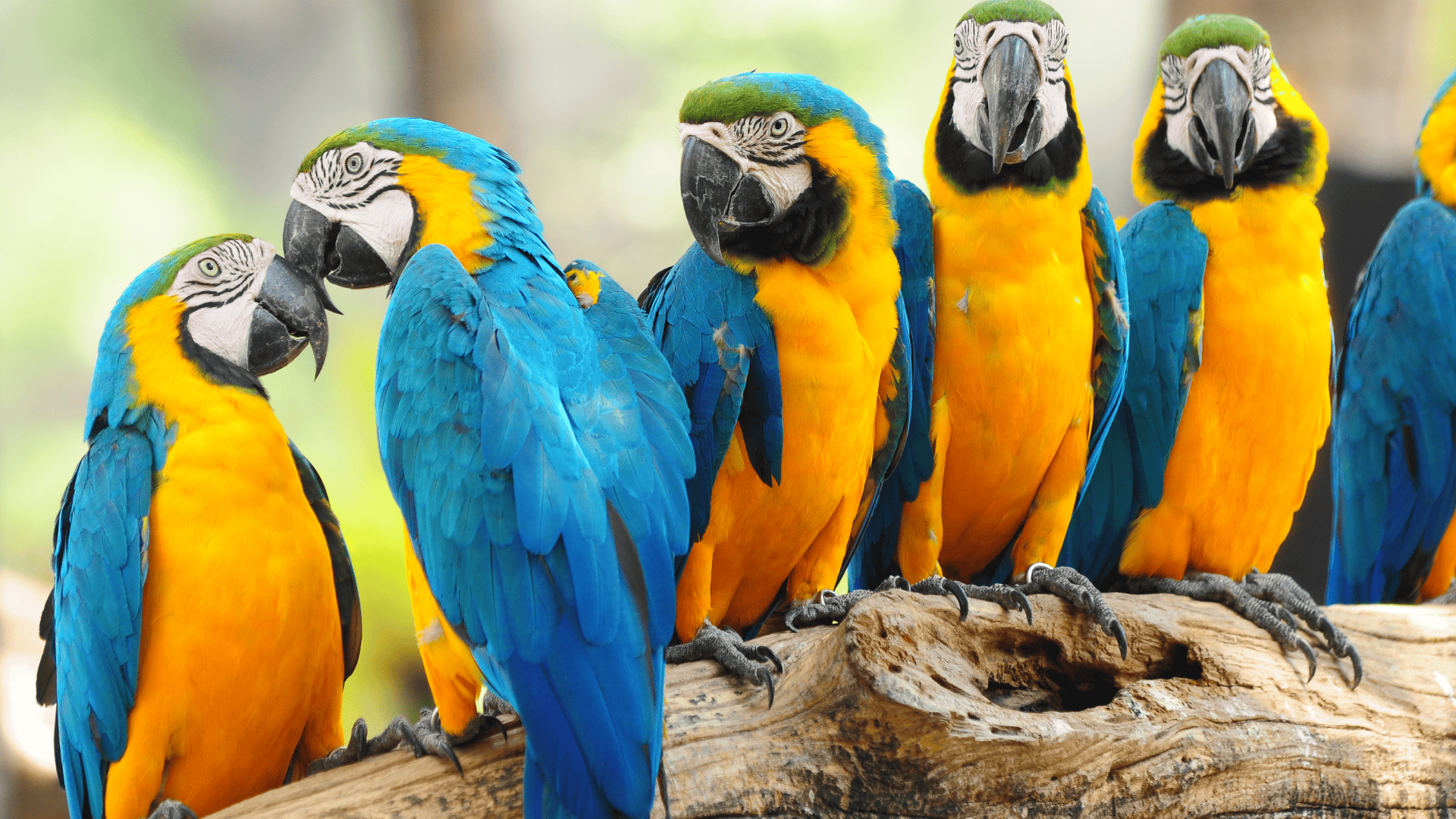
Macaws paint the rainforest with bursts of color and sound. Living up to 50 years, they thrive on nuts, seeds, and fruits. Their striking feathers and echoing calls dominate jungle skies, making them impossible to overlook.
30. Parrot
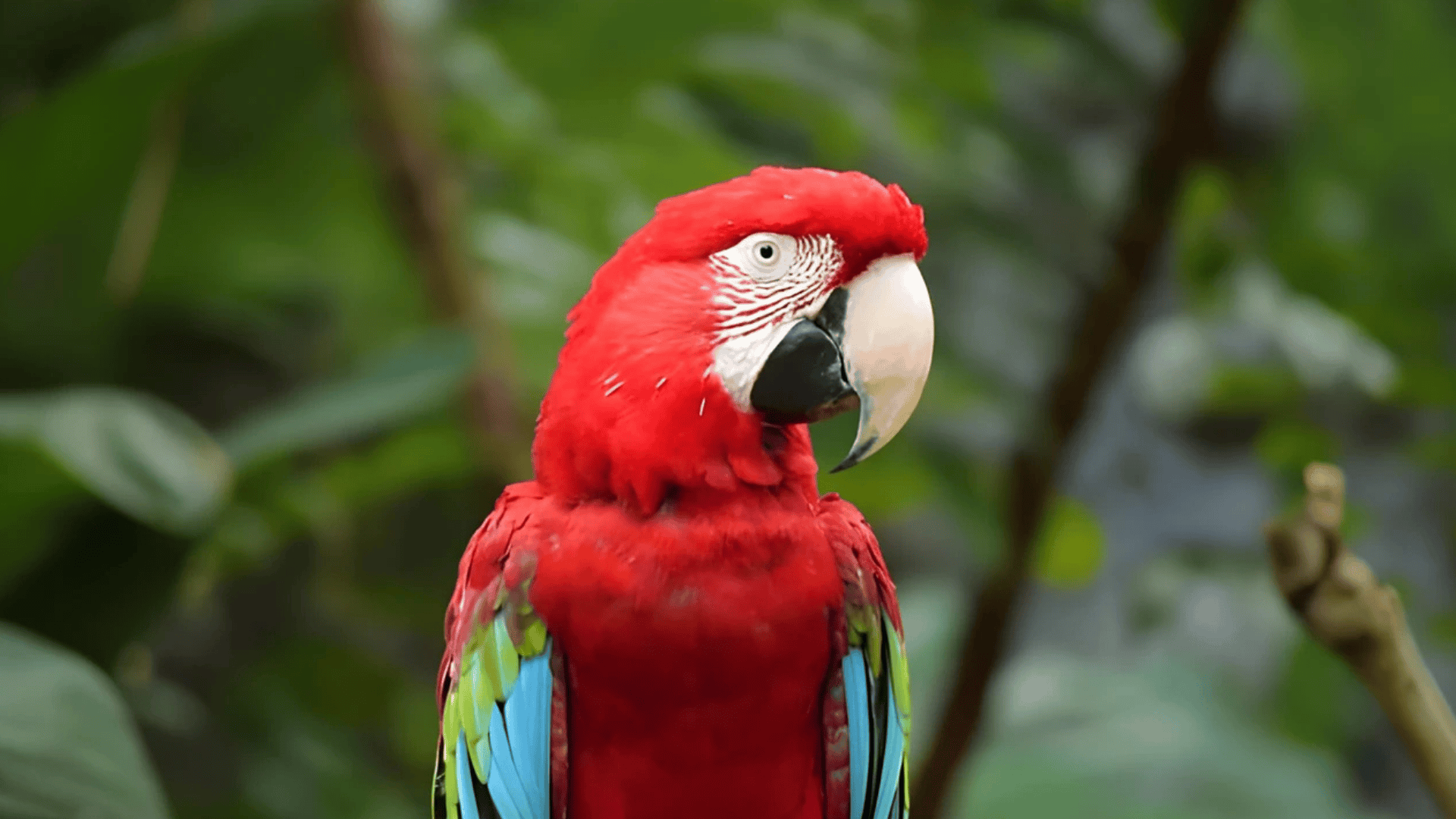
Parrots bring laughter to rainforests with bright feathers and uncanny mimicry. Living 40–60 years, they feast on seeds, nuts, and fruit. These social birds form lifelong bonds, often filling the jungle with chatter that feels almost human.
31. Quetzal
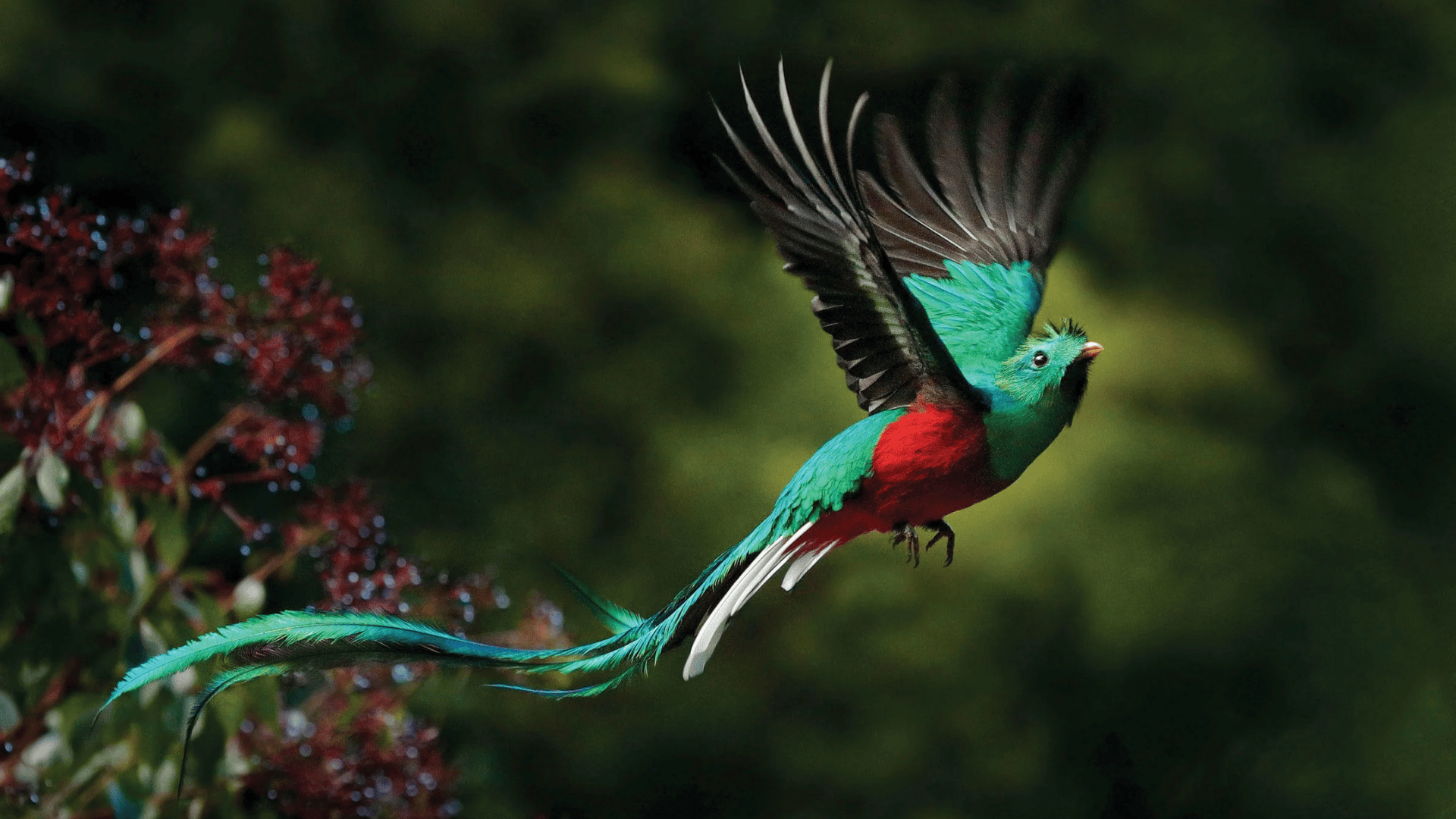
Quetzals, with emerald feathers and lon,g streaming tails, look almost magical. Found in misty cloud forests, they live up to 25 years. Feeding on fruits and insects, their brilliant plumage and shy nature make every sighting feel like a gift.
32. Sunbittern
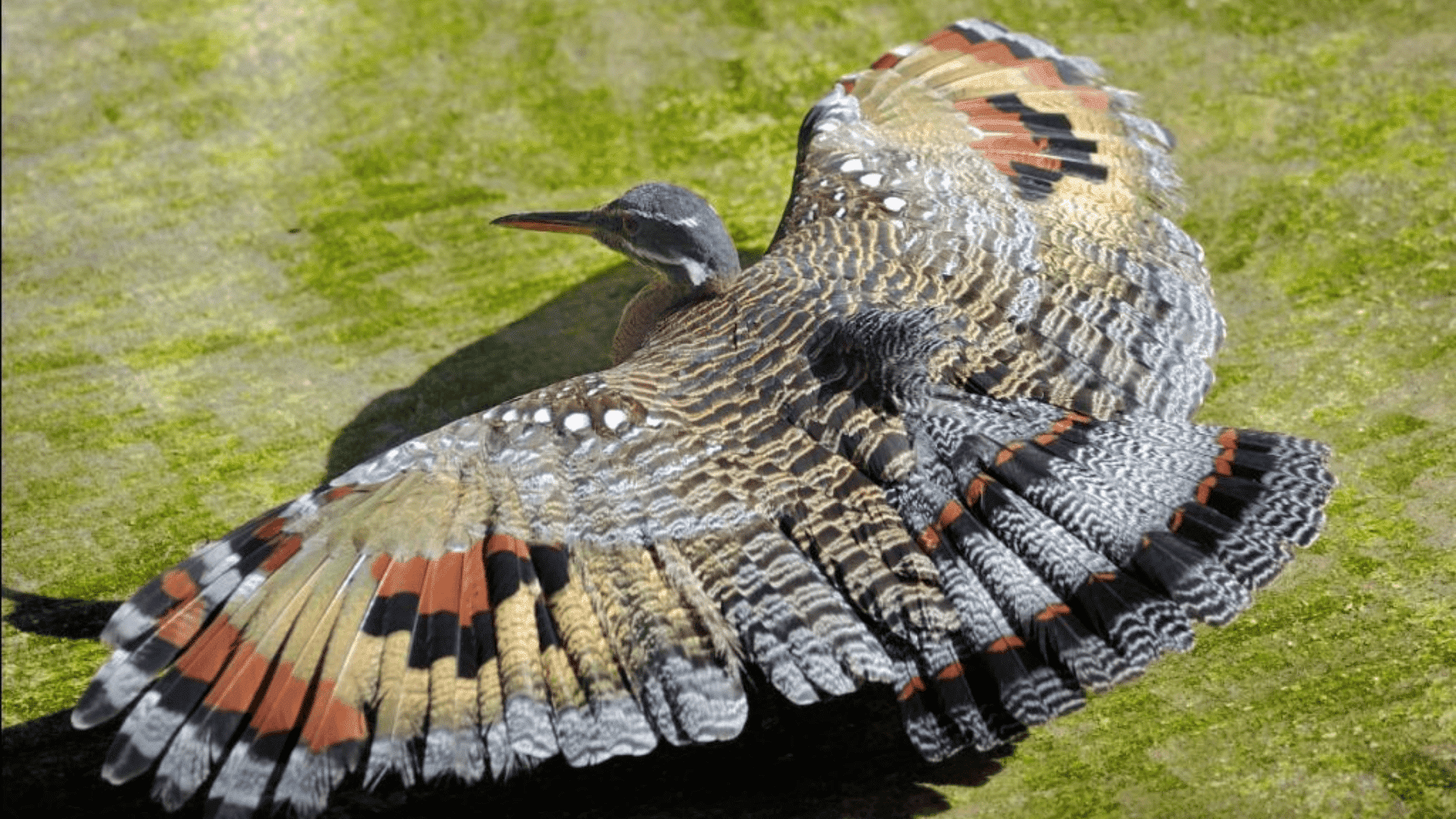
The shy sunbittern surprises with a secret display—wings spread wide, revealing dazzling eye-like patterns. Found in South American jungles, they live about 15 years. Feeding on insects and fish, they blend into shadows until danger forces their dramatic reveal.
33. Toucan
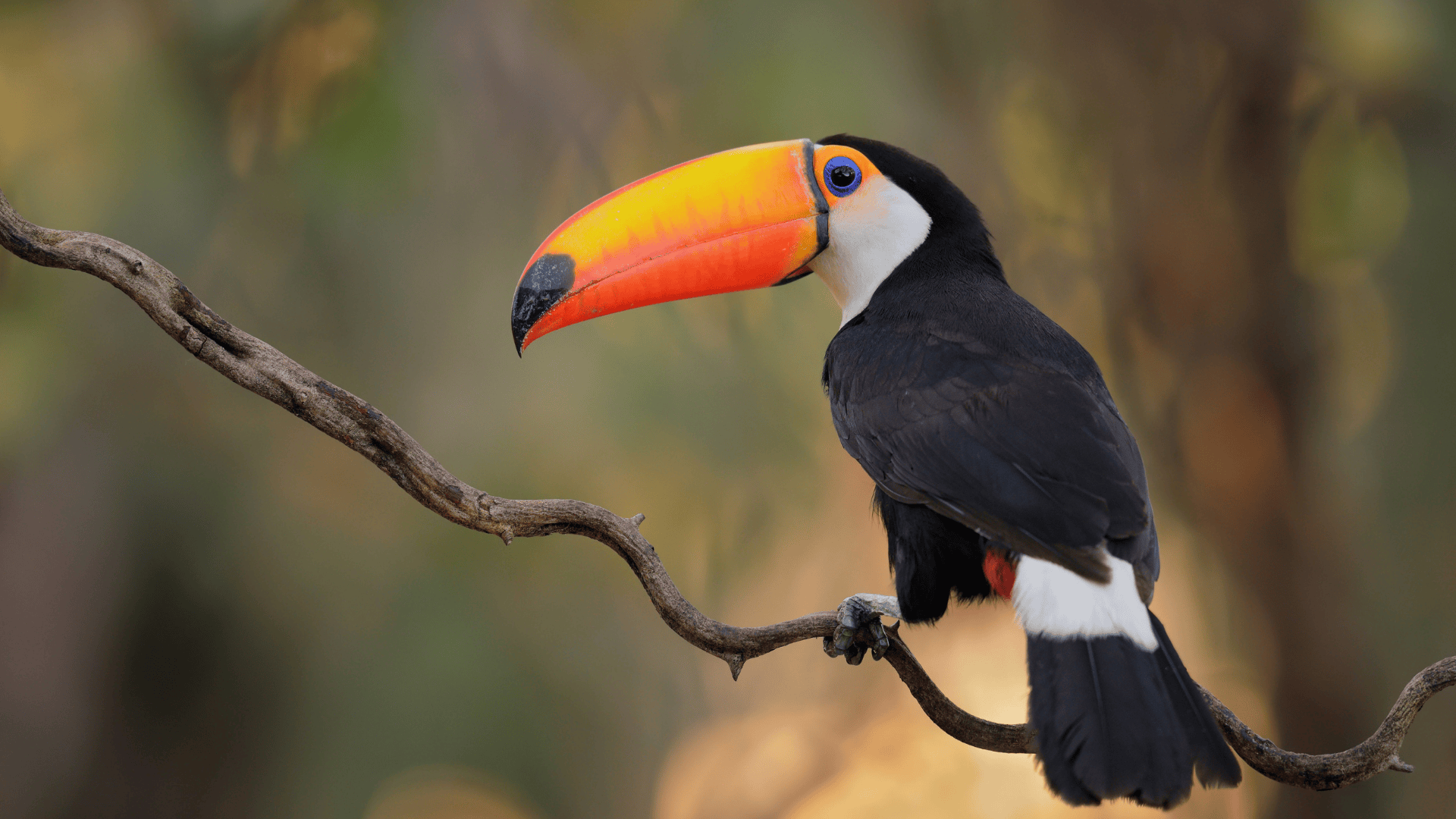
With giant rainbow bills and playful chatter, toucans are true jungle icons. They live around 15–20 years, feeding on fruits, insects, and even small animals. Their bold beaks aren’t just for eating—they’re tools for reaching treetop treasures.
34. Umbrella Bird
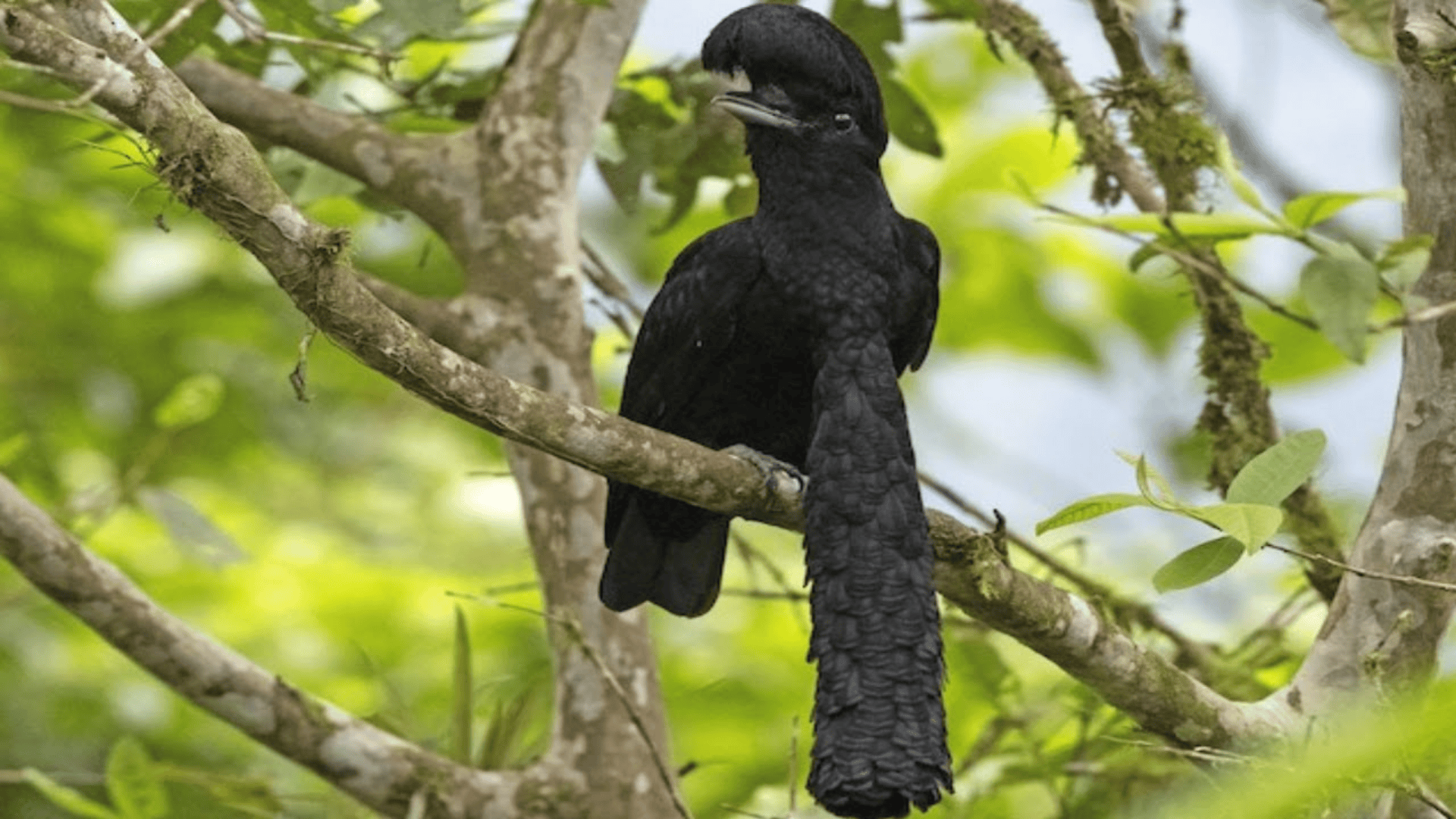
Umbrella birds are rainforest performers with crests like umbrellas and booming voices. They live 16–20 years, feeding on fruits and insects. During mating season, their calls thunder through the canopy, turning the jungle into an echo chamber.
Reptiles, Fishes & Amphibians
Cold-blooded creatures thrive in rivers, trees, and undergrowth.
35. Anaconda
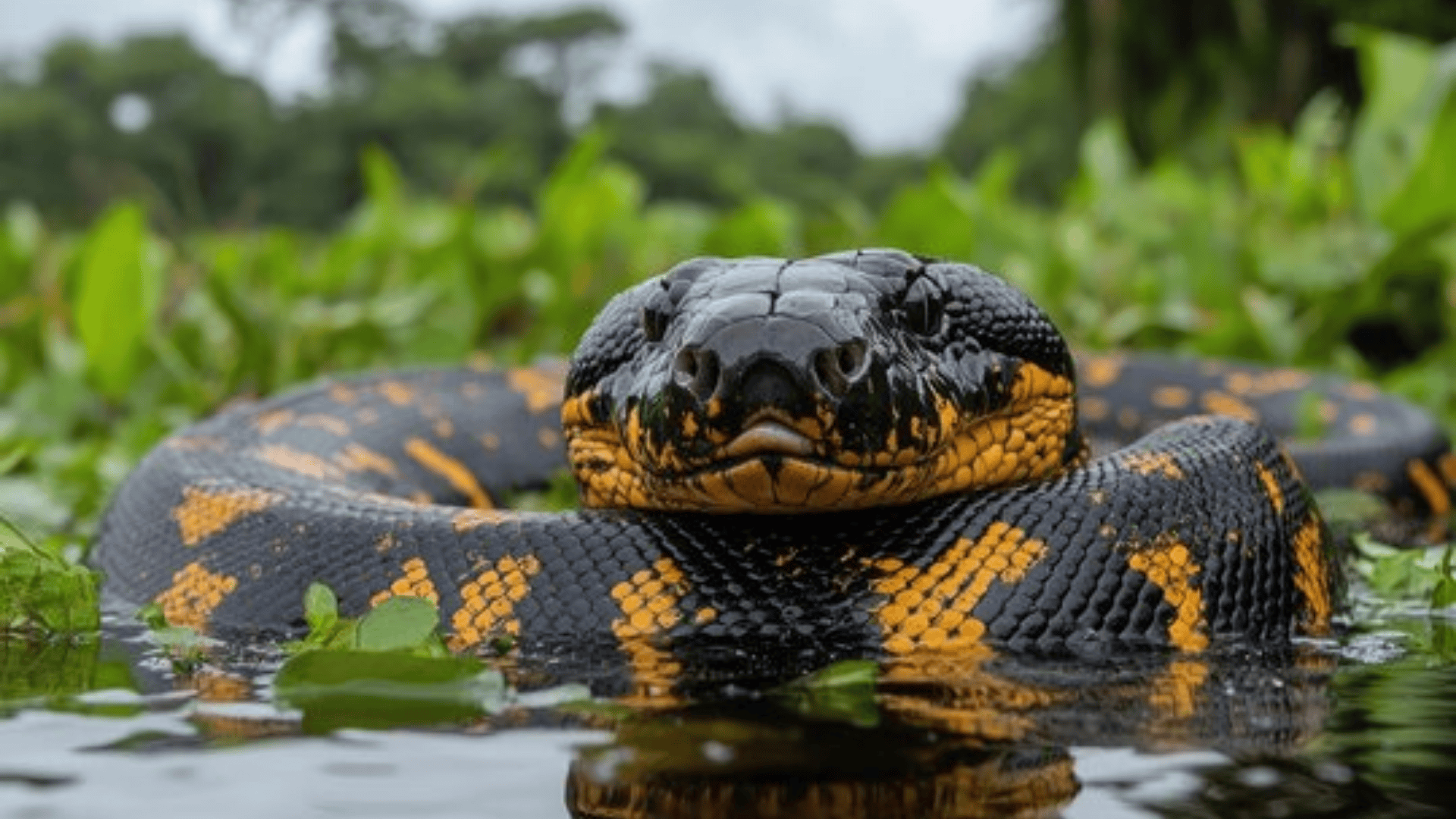
The anaconda glides through South America’s rivers, one of the heaviest snakes on earth. Living 10–15 years, it feeds on caimans, mammals, and birds. These powerful constrictors strike with silence, reminding us why jungles hide breathtaking predators.
36. Boa Constrictor
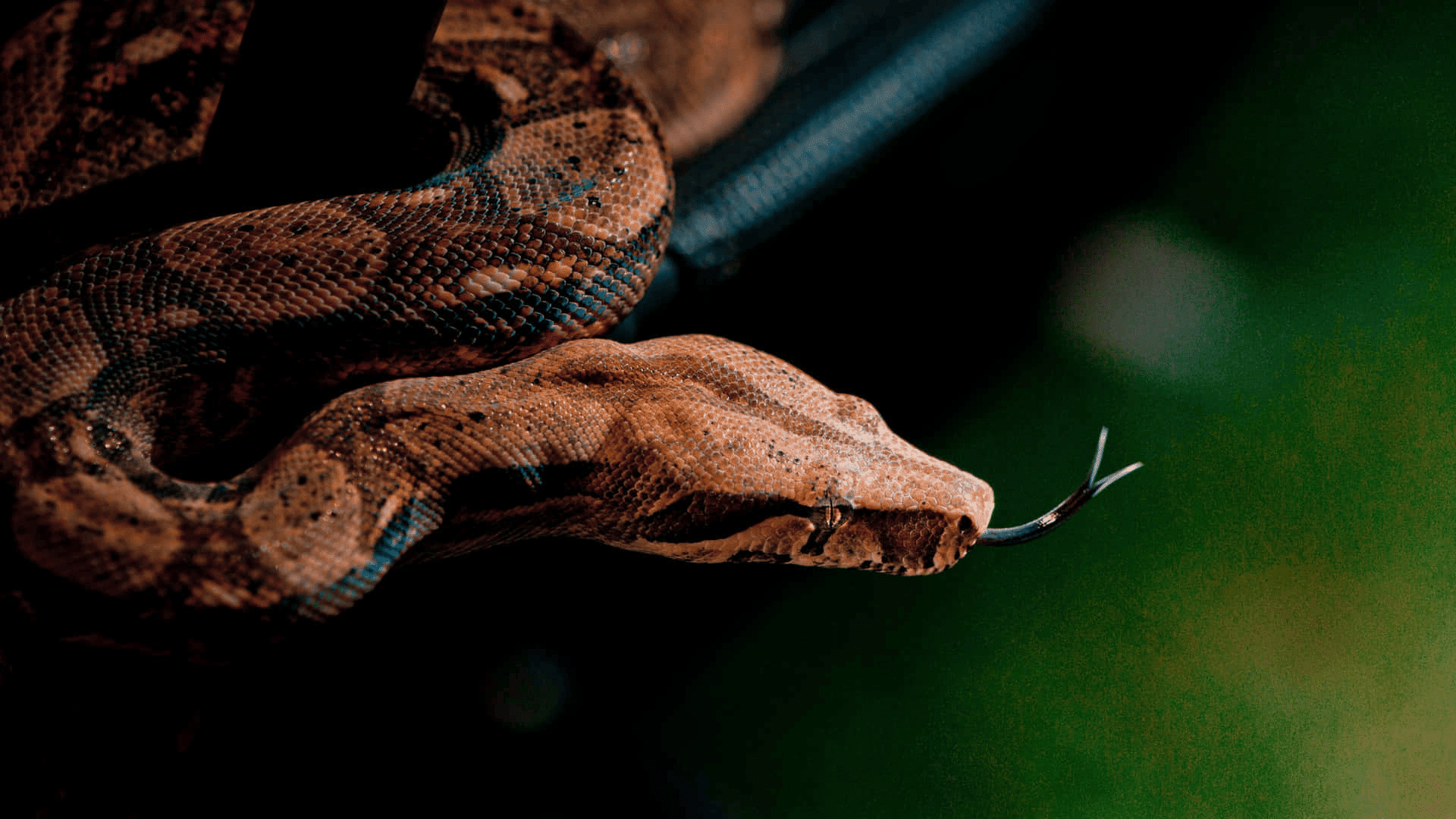
Boas prowl forests from Mexico to Argentina. They live 20–30 years, striking from trees or the ground. Birds, reptiles, and mammals make up their meals. Known for immense strength, these snakes squeeze life out of prey before swallowing them whole.
37. Fer-de-Lance
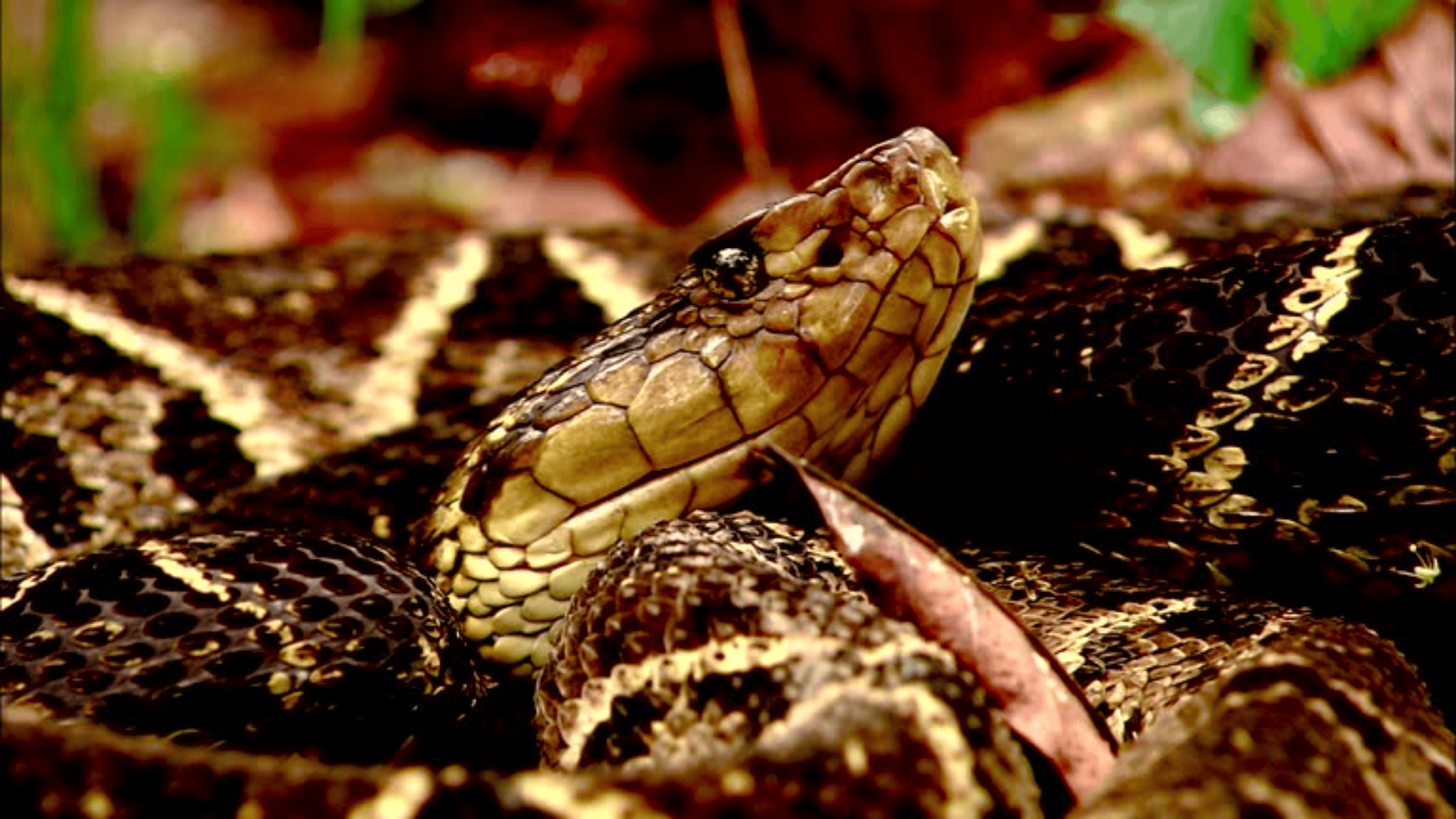
This pit viper haunts Central and South American jungles, feared for speed and aggression. It survives 15–20 years, striking rodents, frogs, and birds. Venom delivers swift damage, reminding anyone nearby that the rainforest shelters silent and deadly guardians.
38. Green Tree Python
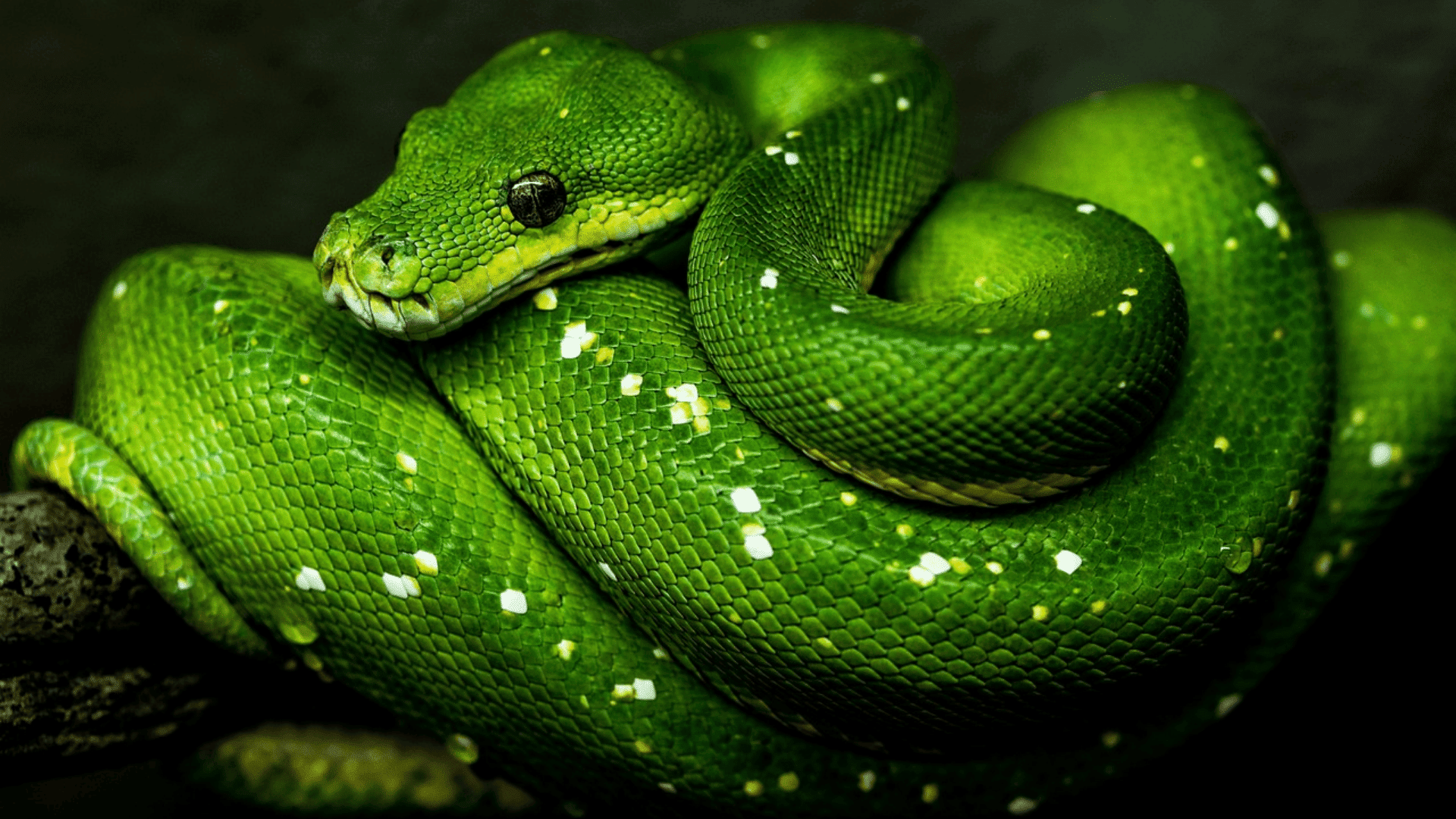
Brilliant green coils drape across branches in New Guinea and Australia. Living 15–20 years, these pythons feed on birds and small mammals. Their camouflage makes them nearly invisible, a living jewel blending into treetops while silently waiting for prey.
39. King Cobra
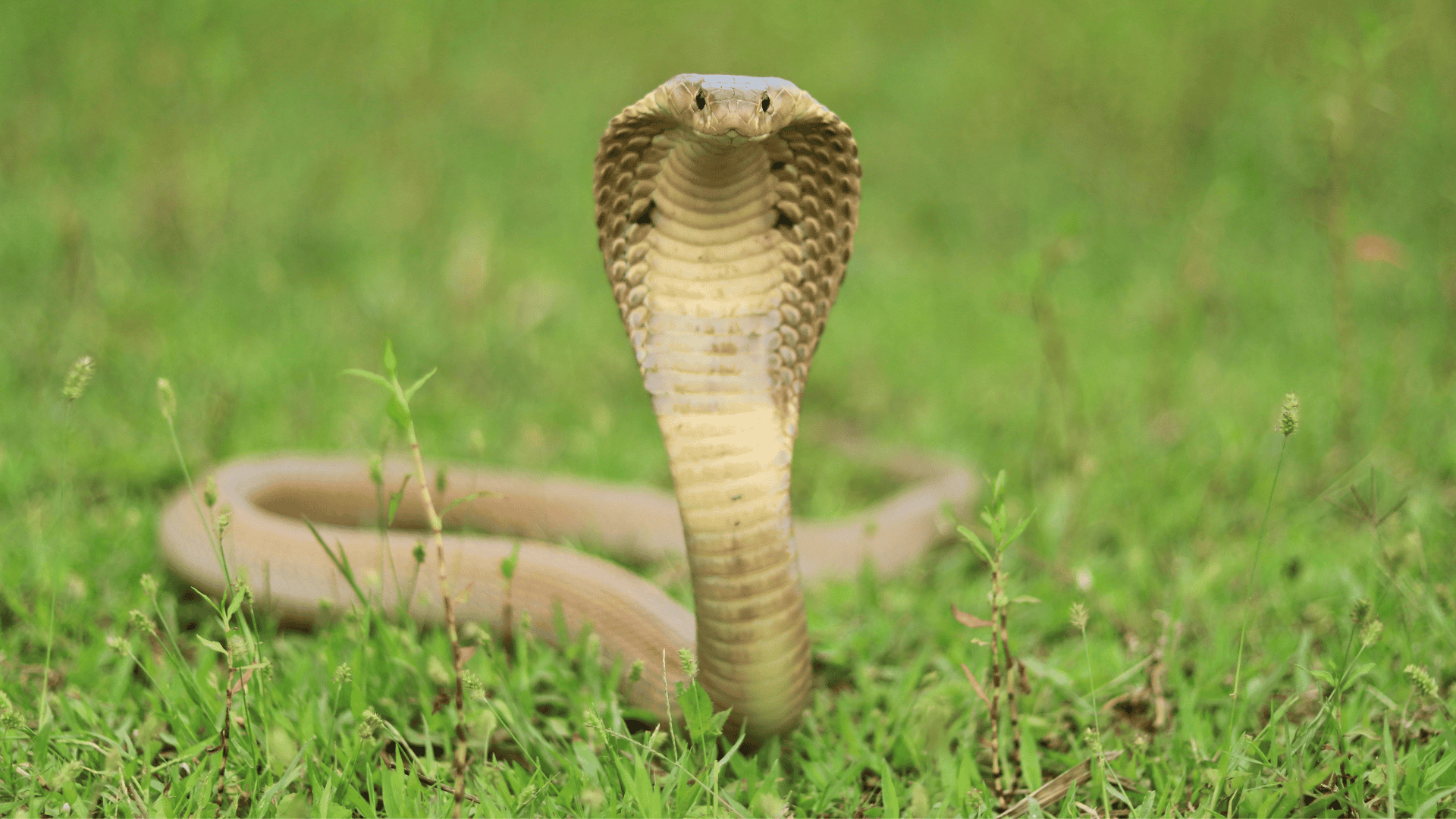
The king cobra, ruler of Asian jungles, grows longer than any venomous snake. Surviving nearly 20 years, it hunts mostly other snakes. Its hooded stance and deadly bite demand respect, making it both feared and fascinating in the wild.
40. Arowana
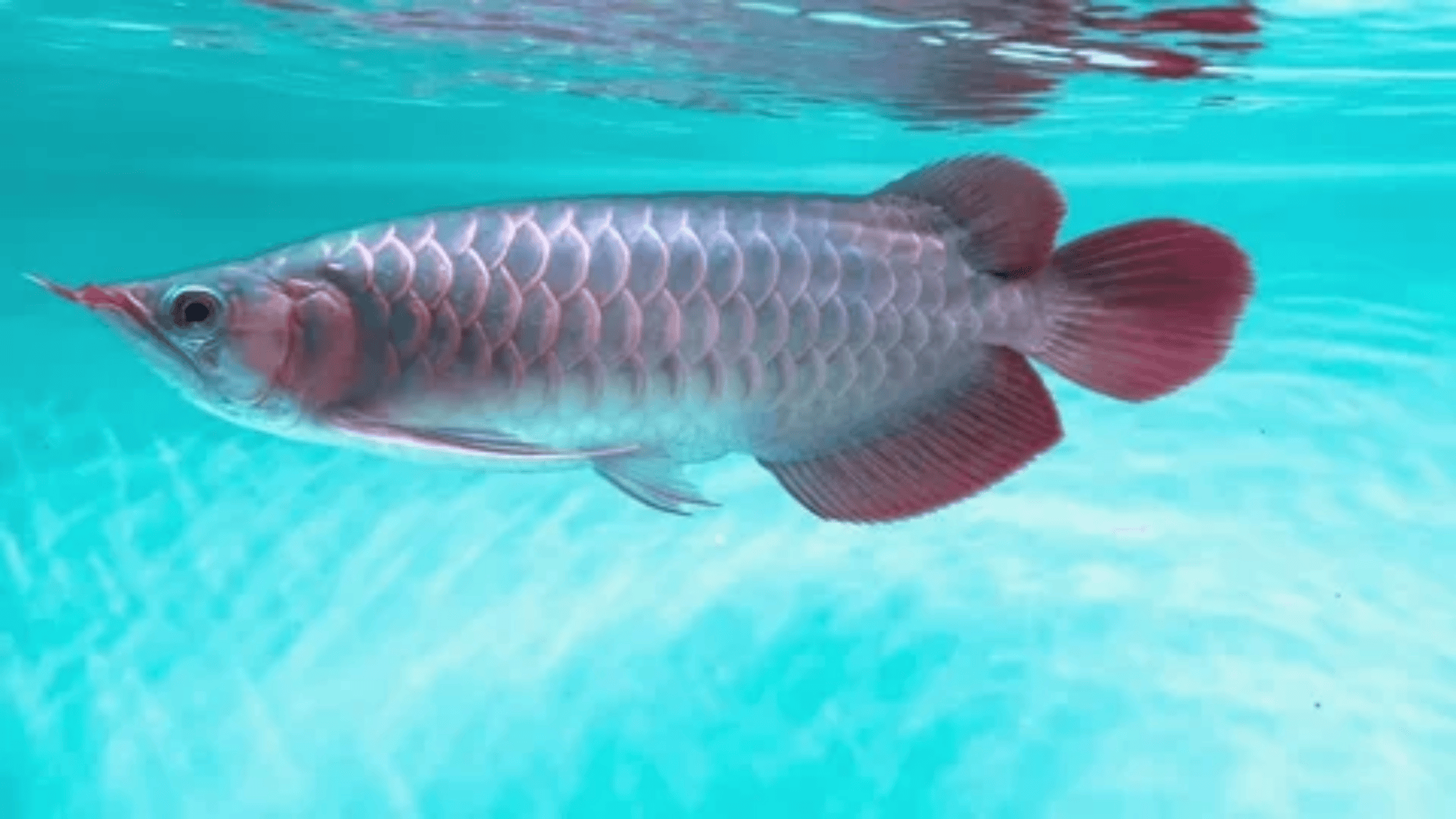
The arowana, called “dragon fish,” glides through South American and Asian rivers. Surviving 15–20 years, it leaps from water to snatch insects and birds. Sleek, silver scales shimmer under sunlight, making this predator a prized and mystical freshwater catch.
41. Catfish
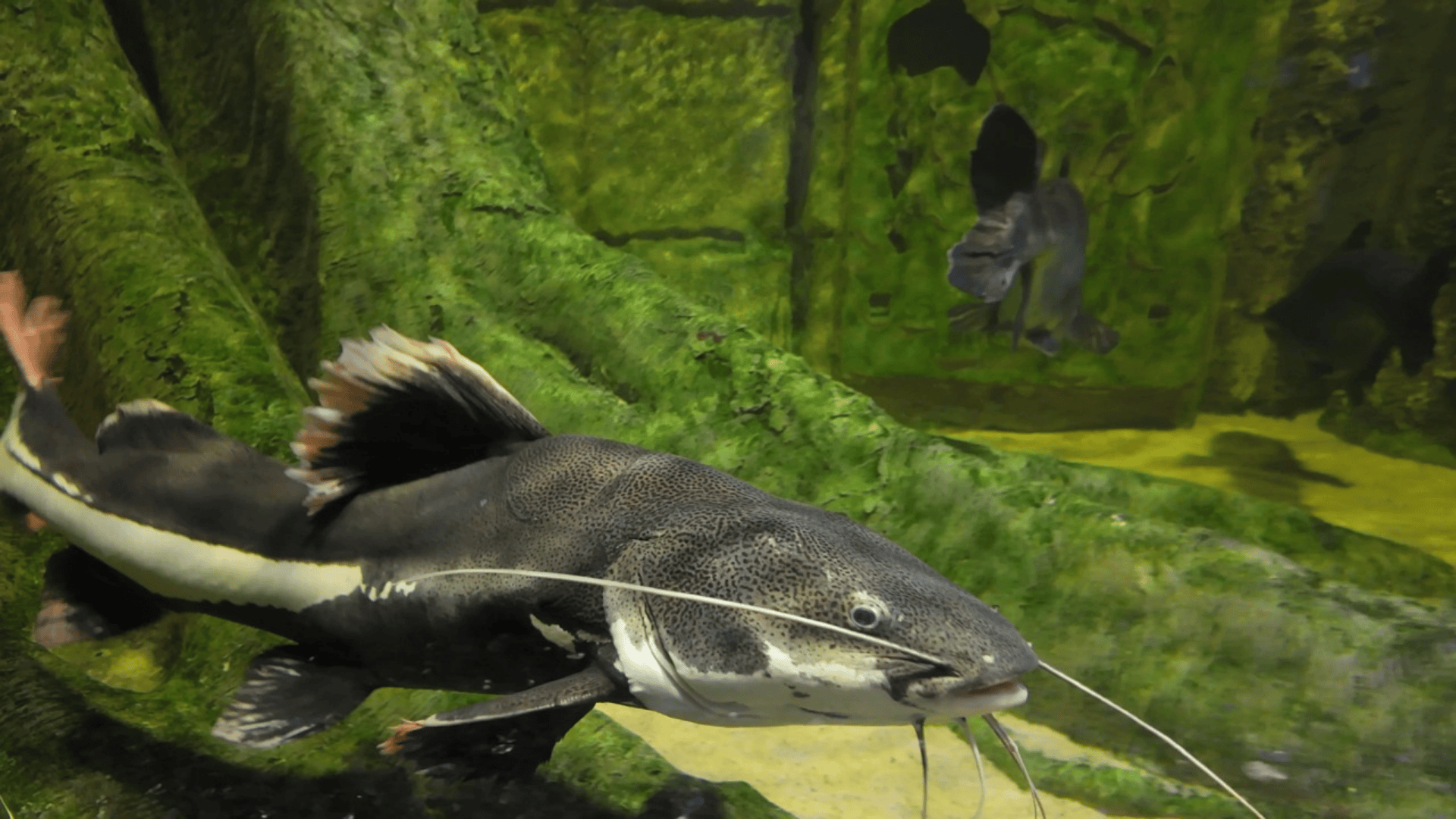
Catfish thrive worldwide, whiskers twitching along muddy riverbeds. Living 8–20 years, they feed on plants, insects, and small fish. Those whisker-like barbels sense hidden meals in dark waters, making catfish reliable survivors wherever jungle rivers flow.
42. Electric Eel
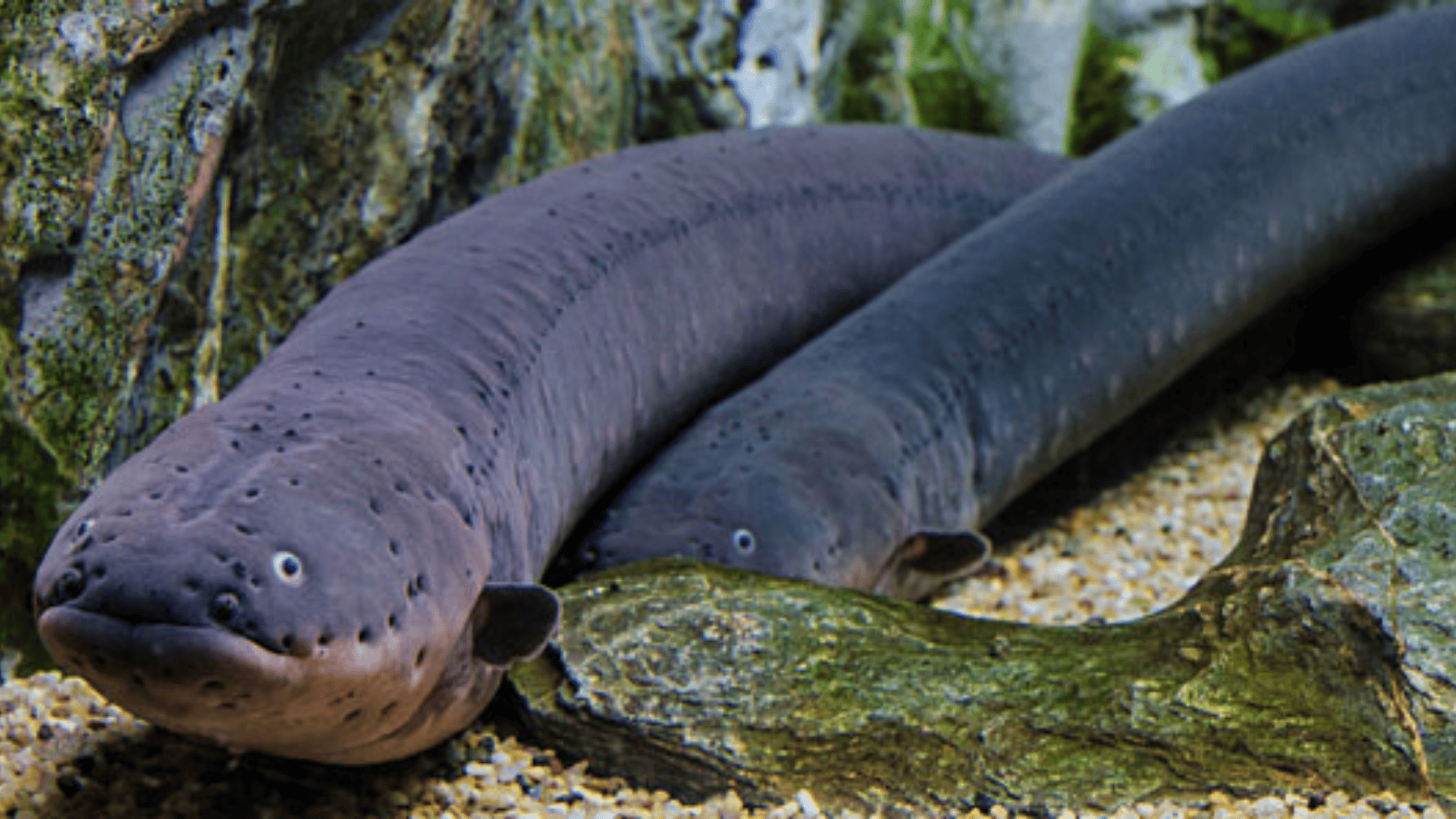
Lurking in South America’s rivers, electric eels generate shocking power to stun prey or protect themselves. They live 10–15 years, feeding on fish and amphibians. With each jolt, they reveal how strange adaptations shape survival in watery jungles.
43. Piranha
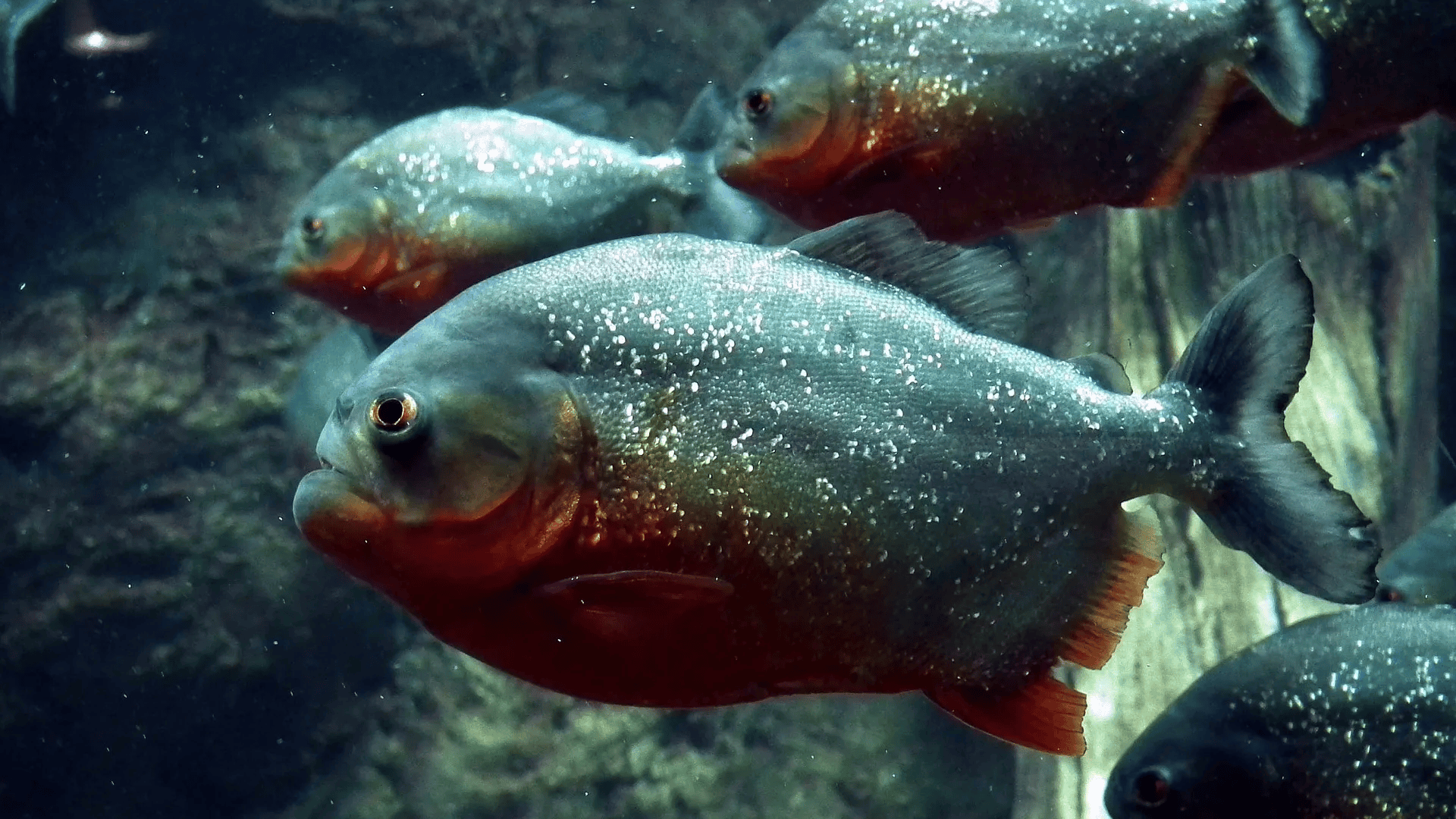
South America’s rivers churn with sharp-toothed piranhas. Living 10–15 years, they hunt insects, fish, and sometimes mammals. Known for sudden group frenzies, these small but fearsome fish prove that power in nature isn’t always measured by size alone.
44. Glass Frog
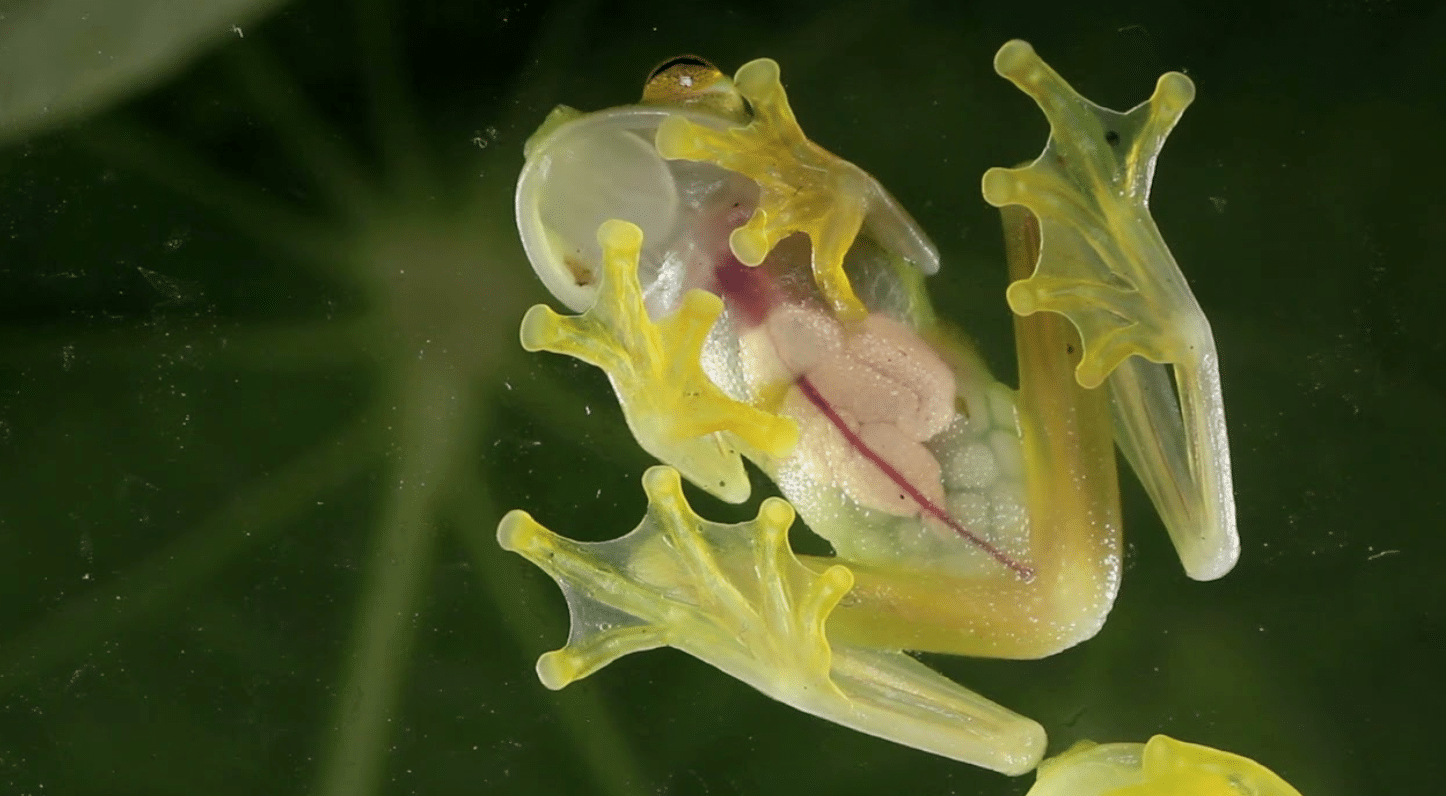
With skin so clear you can see its beating heart, the glass frog blends into rainforest leaves. Living 10–14 years, it eats spiders and insects. This small creature shows how even fragile designs succeed in thick jungles.
45. Goliath Frog
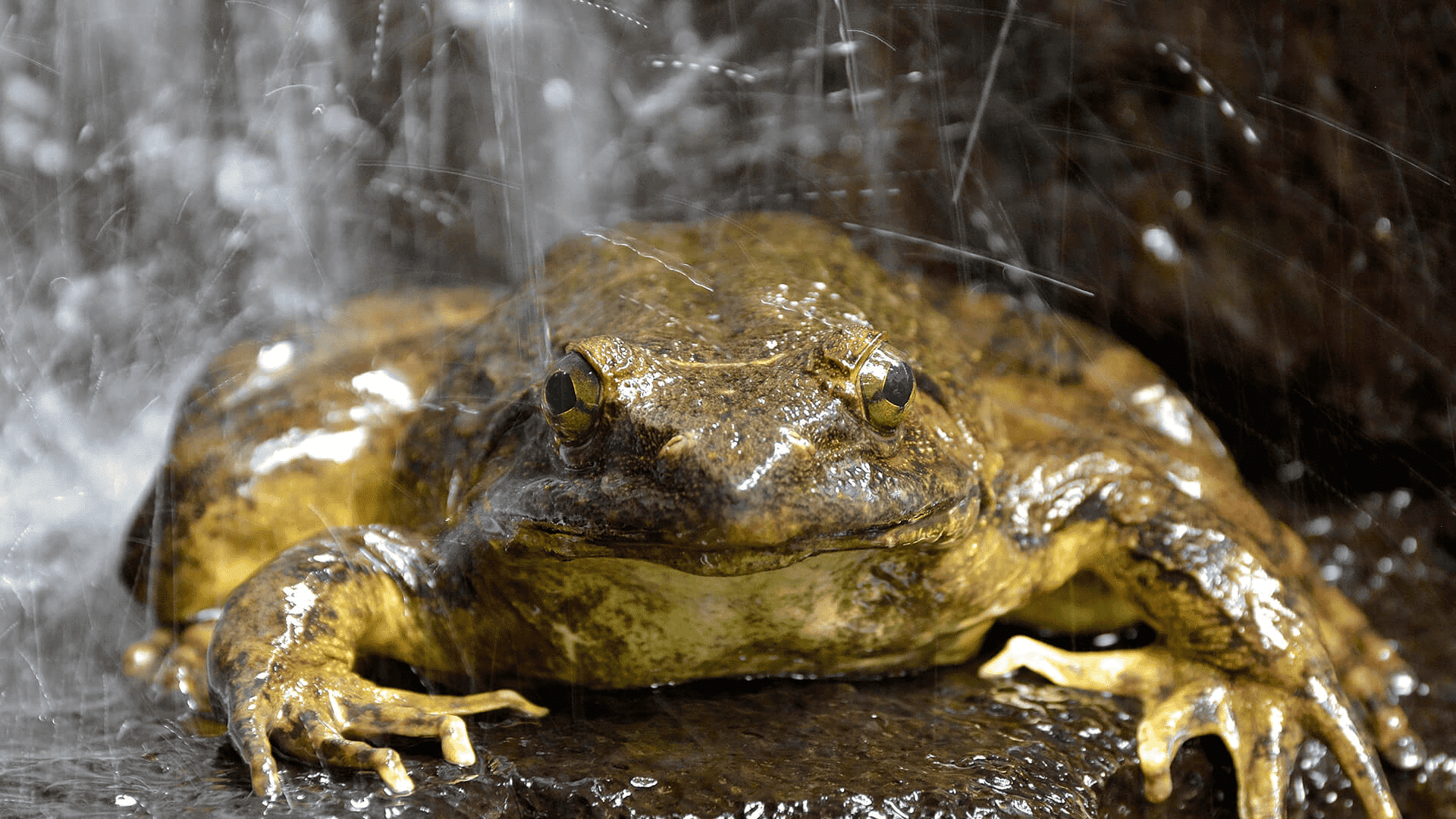
The goliath frog is the world’s largest, weighing seven pounds. Found in Cameroon, it thrives near rushing rivers. Living for 15 years, it feeds on insects, fish, and amphibians. Massive size doesn’t slow it, making each leap powerful and unforgettable.
46. Poison Dart Frog
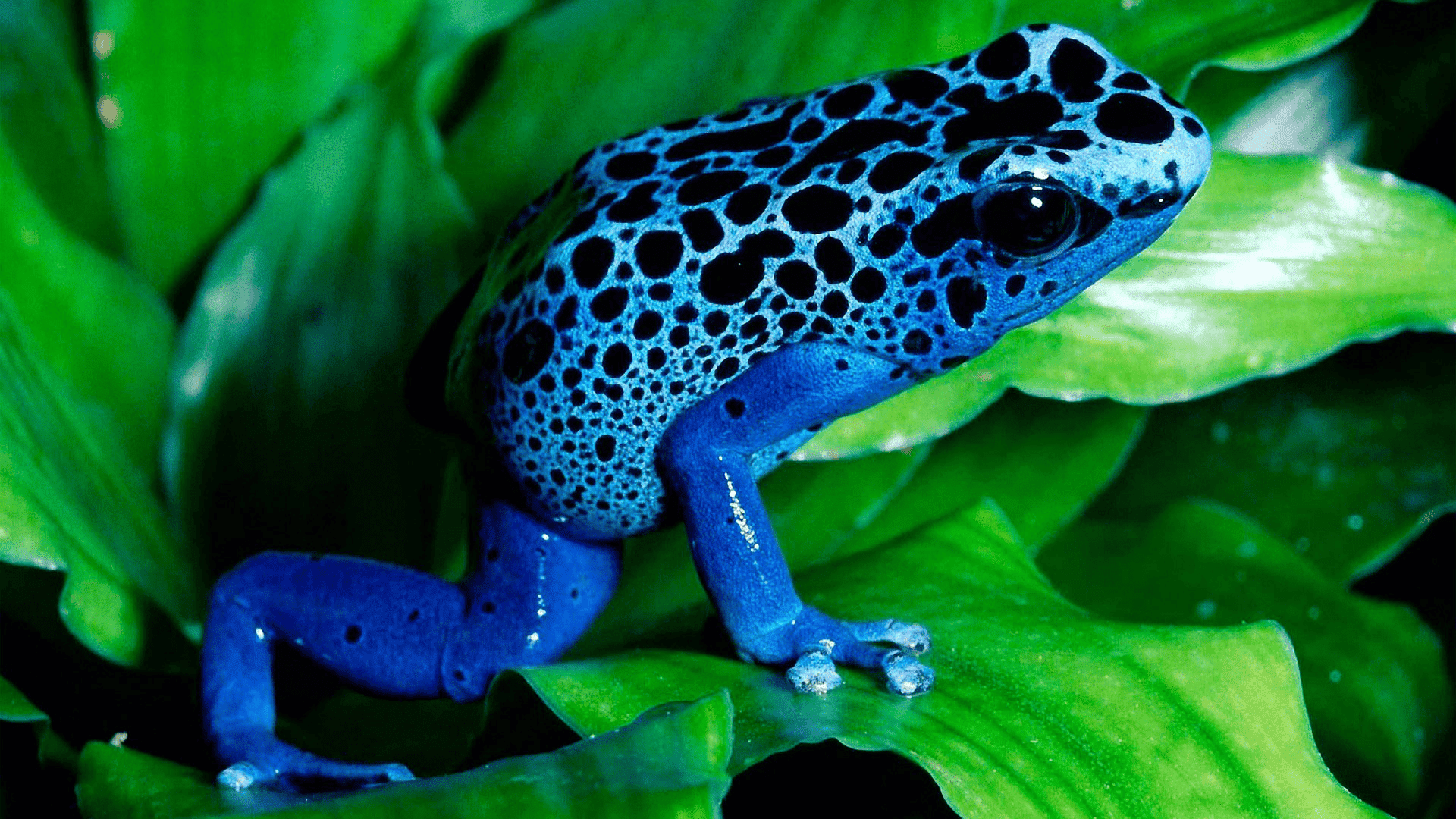
Tiny yet dangerous, these frogs flash bright colors in South America’s rainforests. Living only 4–8 years, they feast on ants and insects. Their glowing skin warns predators: one touch can mean poison. Small size, but incredible jungle defense.
47. Red-Eyed Tree Frog
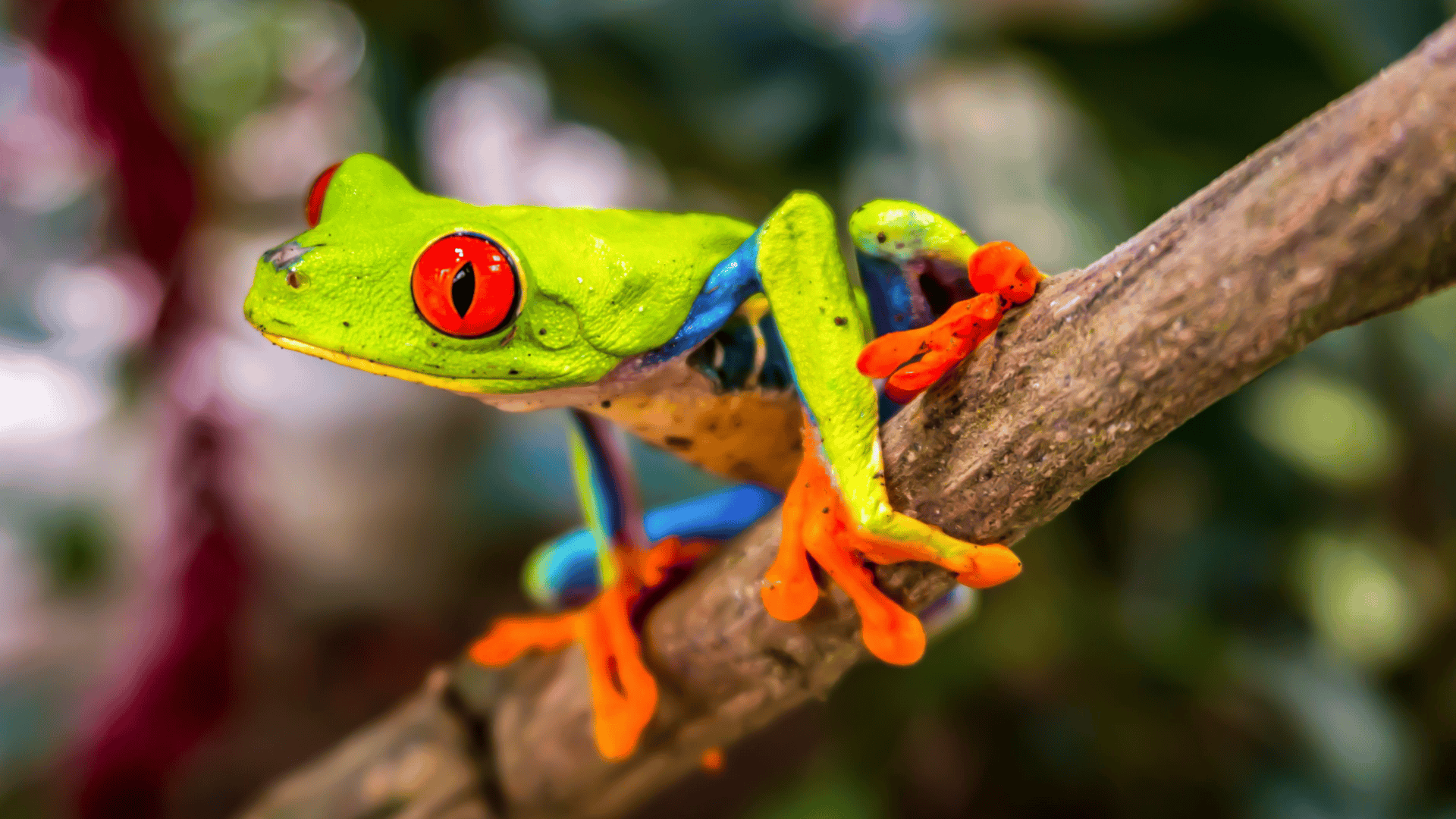
Perched on green leaves, its crimson eyes startle at night. Native to Central America, it lives for around five years. Feeding on insects and flies, this frog blends beauty and survival, hopping brightly through damp, moonlit jungle canopies.
48. Basilisk Lizard
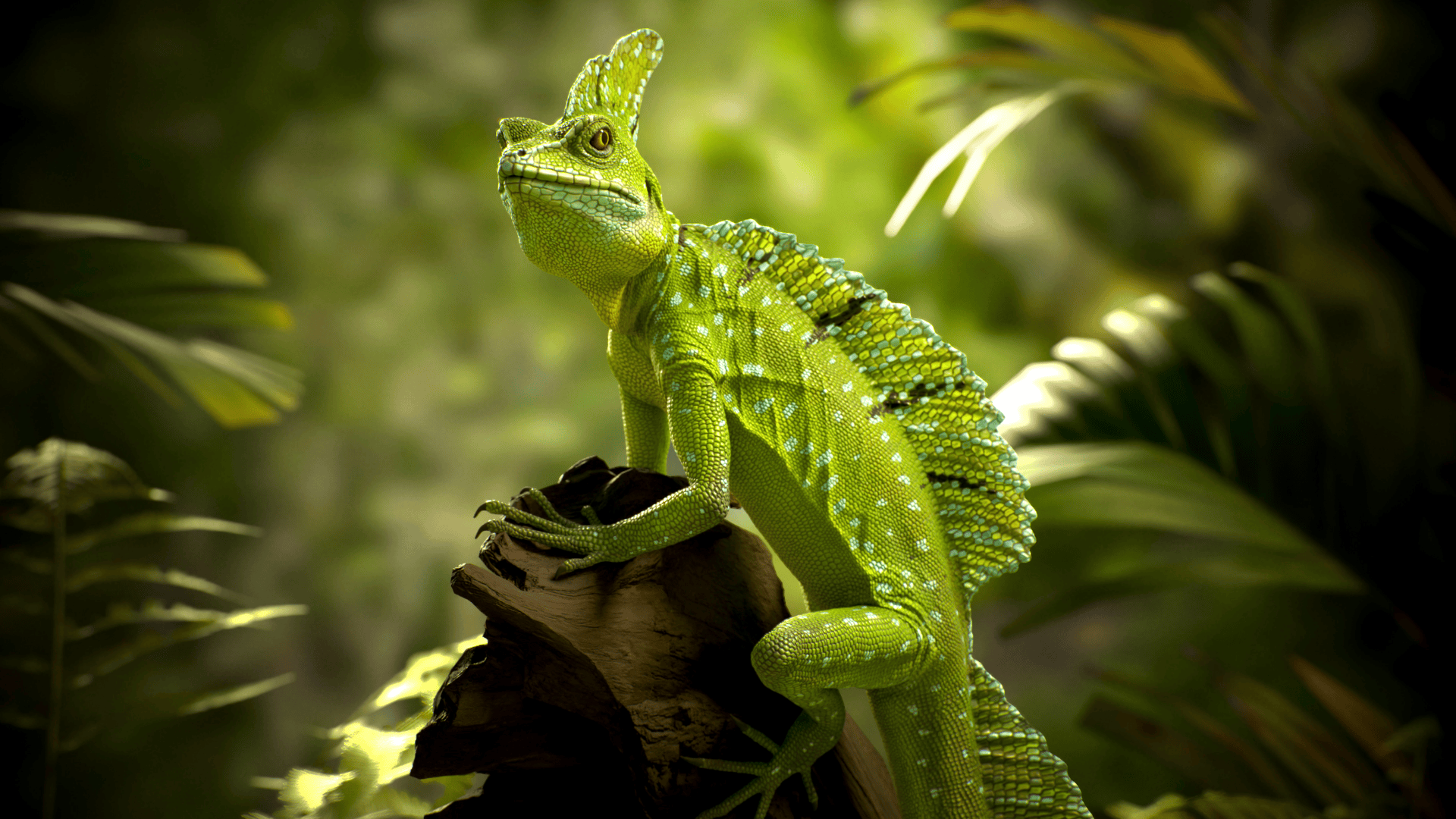
The basilisk lizard is nicknamed “Jesus Lizard” for dashing across the water’s surface. Found in Central America, it lives 7–10 years. Feeding on insects, plants, and small fish, this remarkable reptile turns a quirky ability into its signature survival skill.
49. Caecilian
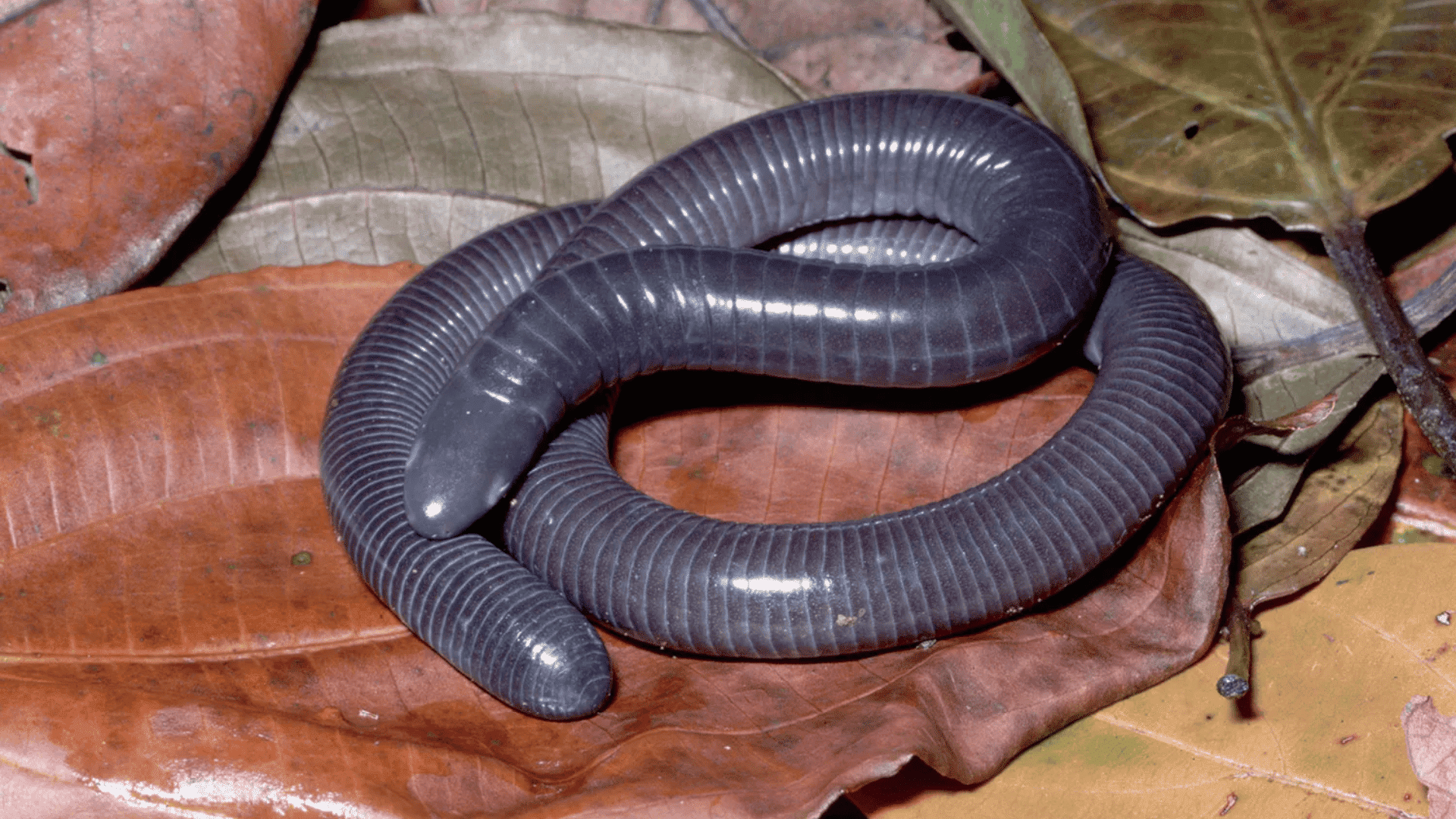
The caecilian looks like a worm but is actually a legless amphibian. Living 5–10 years underground in tropical soils, it feeds on invertebrates and earthworms. Hidden beneath leaf litter, this strange creature shows the jungle’s talent for surprises.
50. Caiman
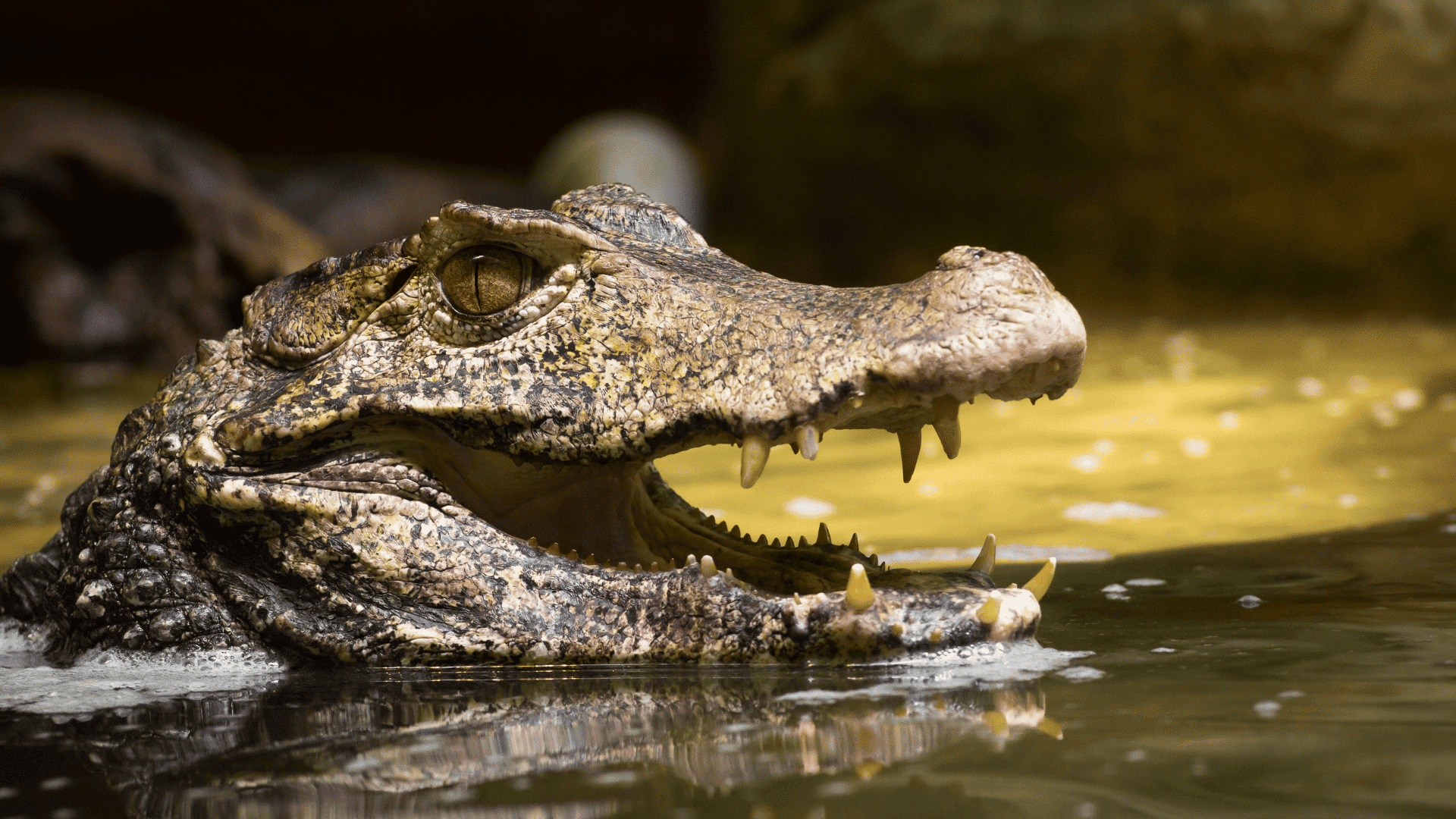
Smaller than crocodiles but no less fierce, caimans lurk in South American rivers. They live 30–40 years, eating birds, fish, and mammals. Hidden in murky waters, their sudden strikes remind us the jungle’s waterways are never truly safe.
51. Crocodile
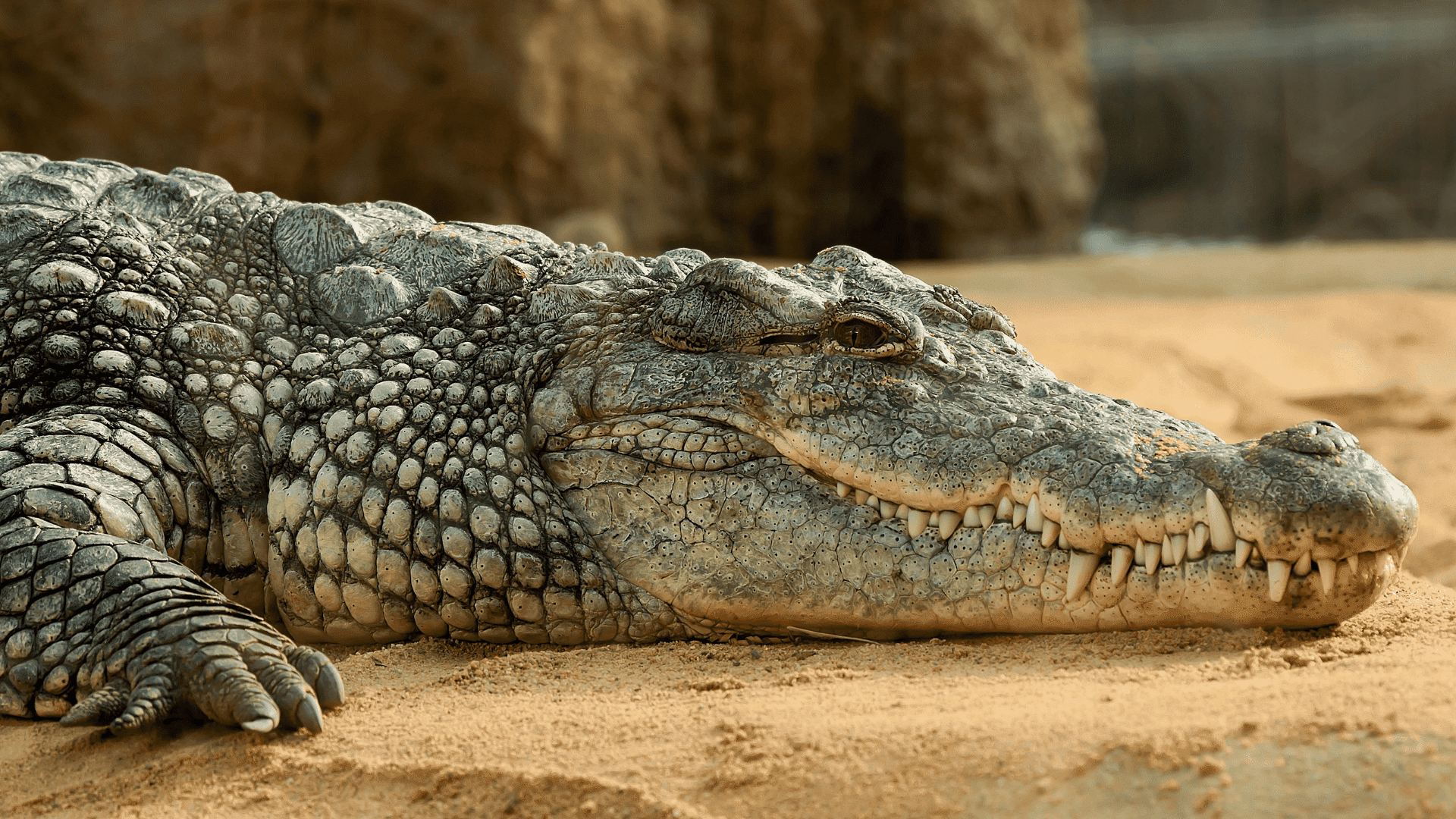
Crocodiles are patient hunters, resting motionless until prey ventures close. Surviving up to 100 years, they rule swamps and rivers. Fish, mammals, and birds fill their diet. Few animals embody raw, ancient power as completely as the crocodile.
52. Iguana
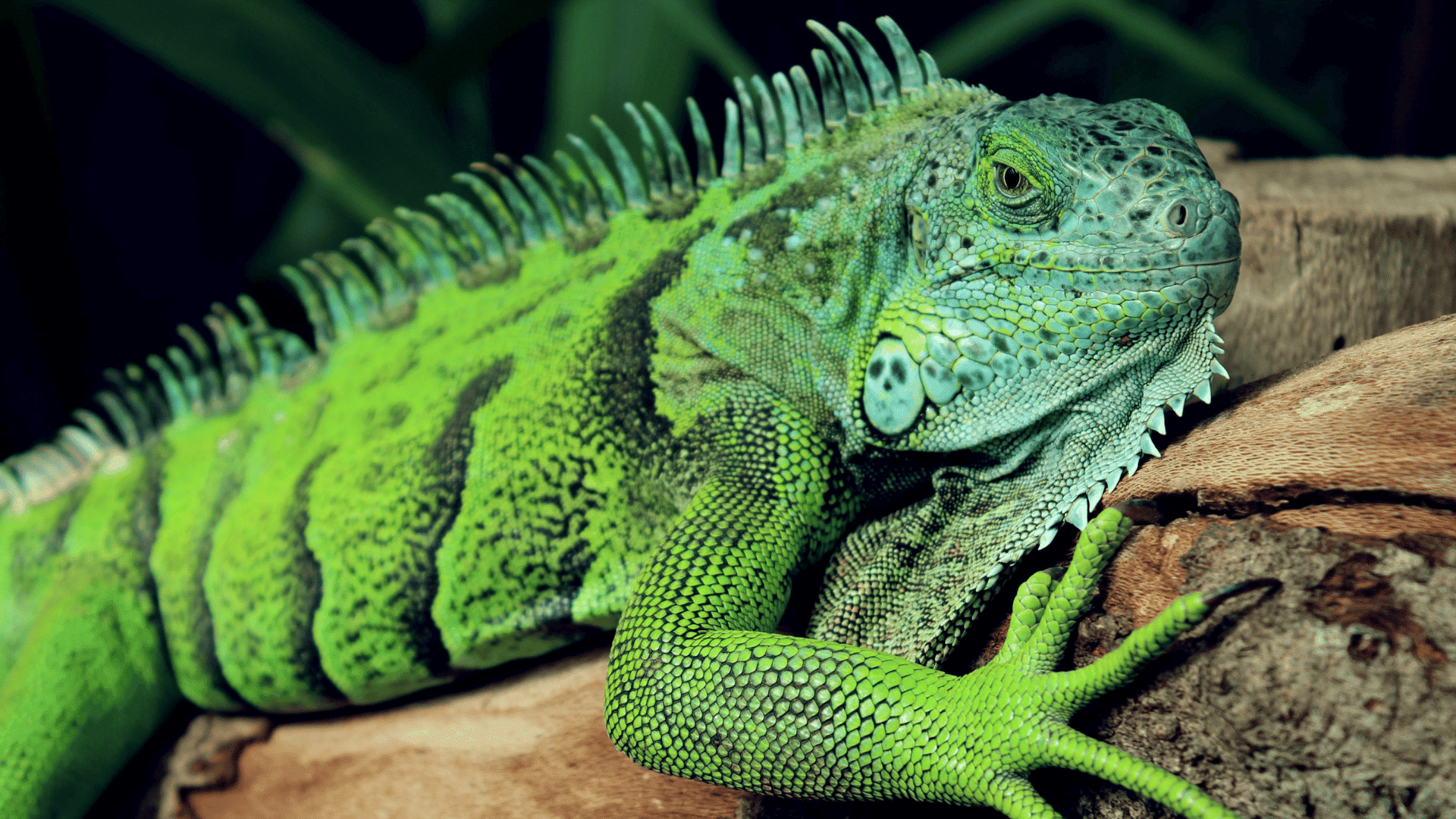
Iguanas sunbathe lazily on branches in Central and South America. These herbivores eat fruits, flowers, and leaves, surviving 15–20 years. Agile climbers, they dart between trees when startled, balancing a peaceful plant diet with surprising bursts of jungle speed.
53. Tiger Salamander
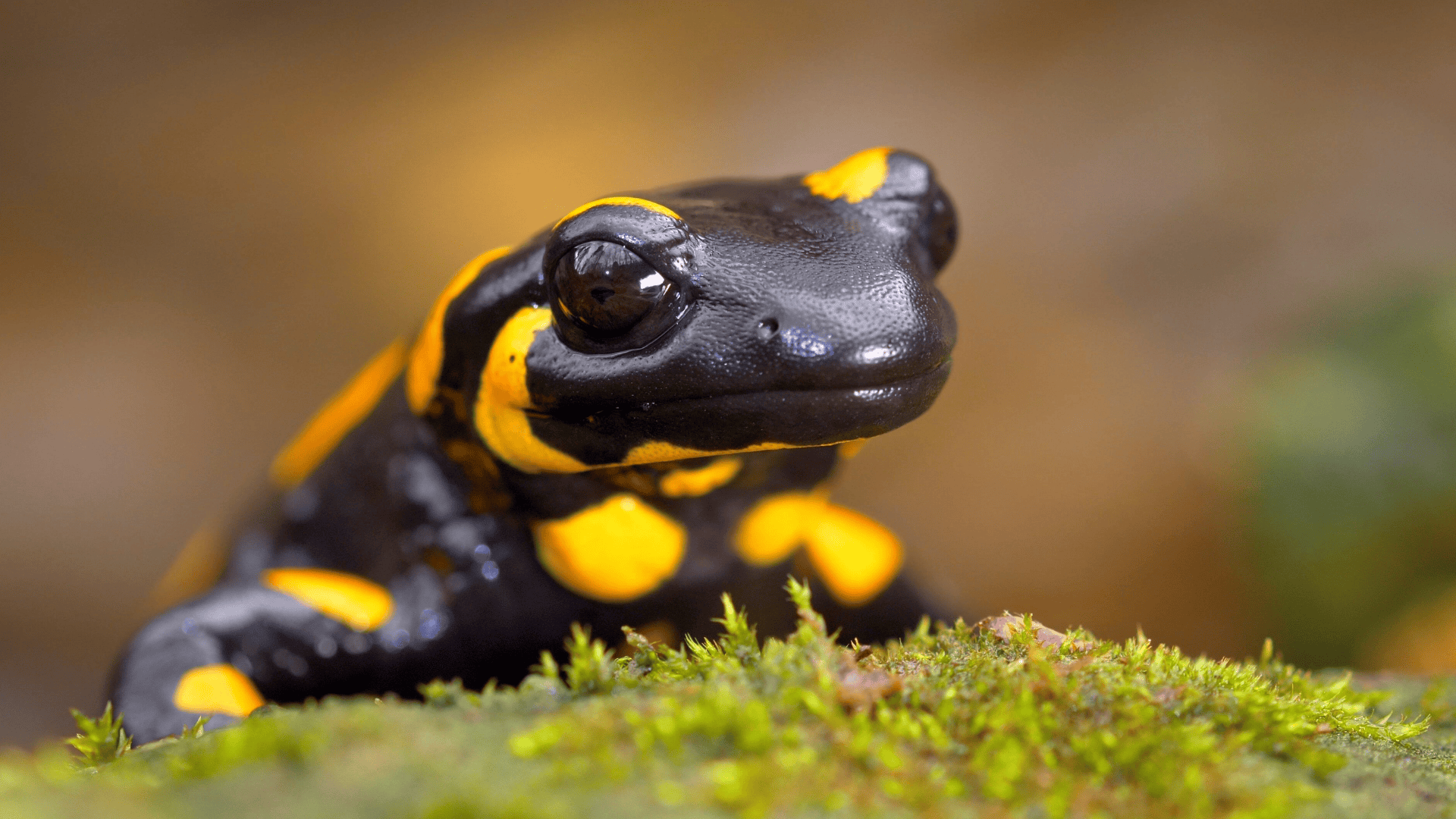
Brightly patterned tiger salamanders thrive in North America. They survive 12–15 years, eating worms, insects, and fish. Juveniles often stay aquatic, while adults roam moist forests. Their bold markings warn predators, proving small creatures can still command jungle respect.
Invertebrates
Invertebrates are animals without backbones, and jungles are full of them. They may be small, but they are very important for the forest. Invertebrates help pollinate plants, recycle nutrients, and provide food for larger animals
54. Atlas Moth
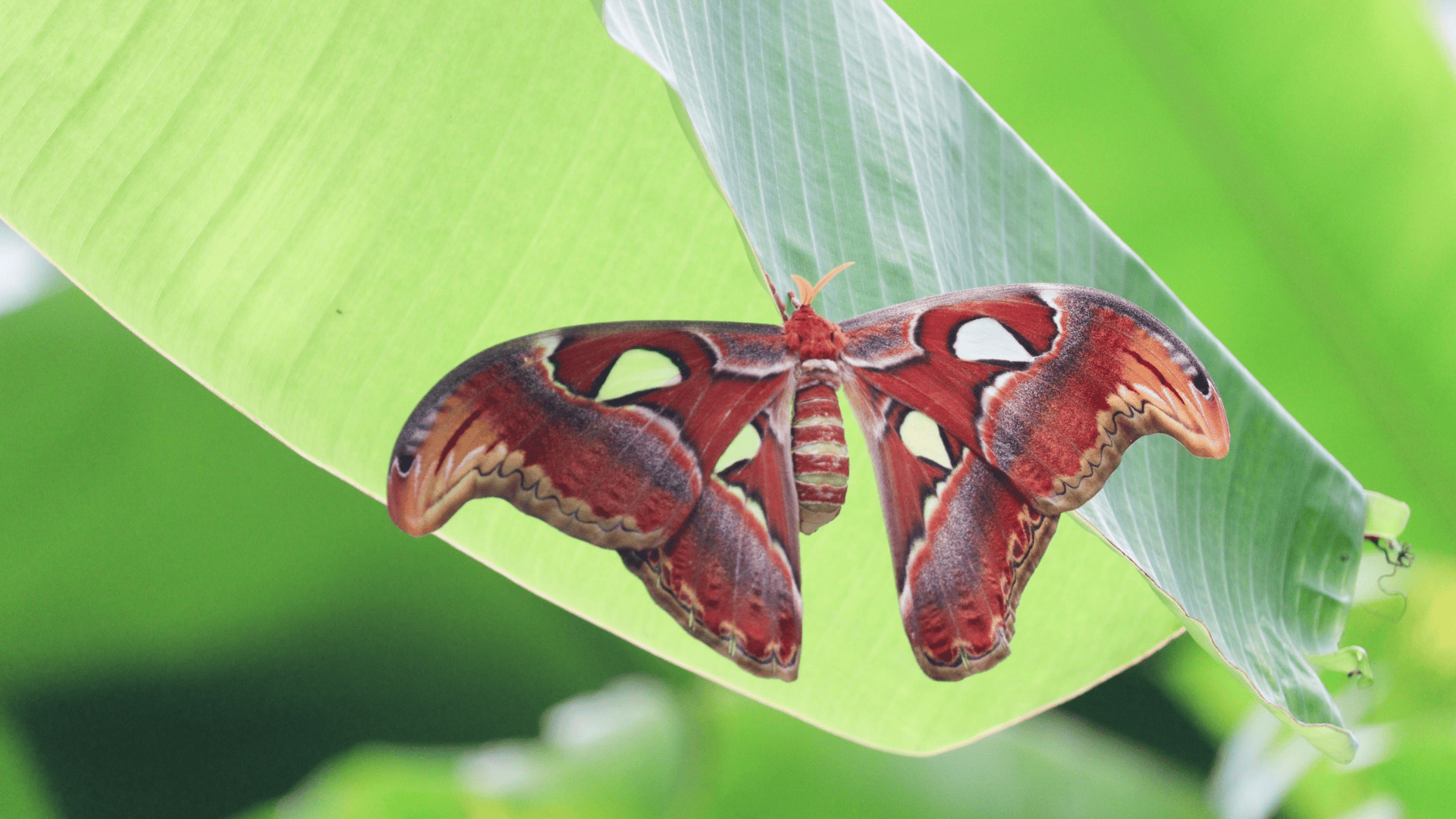
The Atlas moth is a breathtaking sight, its wings mimicking snake heads to scare predators. Found in Southeast Asia, it doesn’t eat as an adult. Surviving just one or two weeks, it lives entirely on stored energy.
55. Bullet Ant
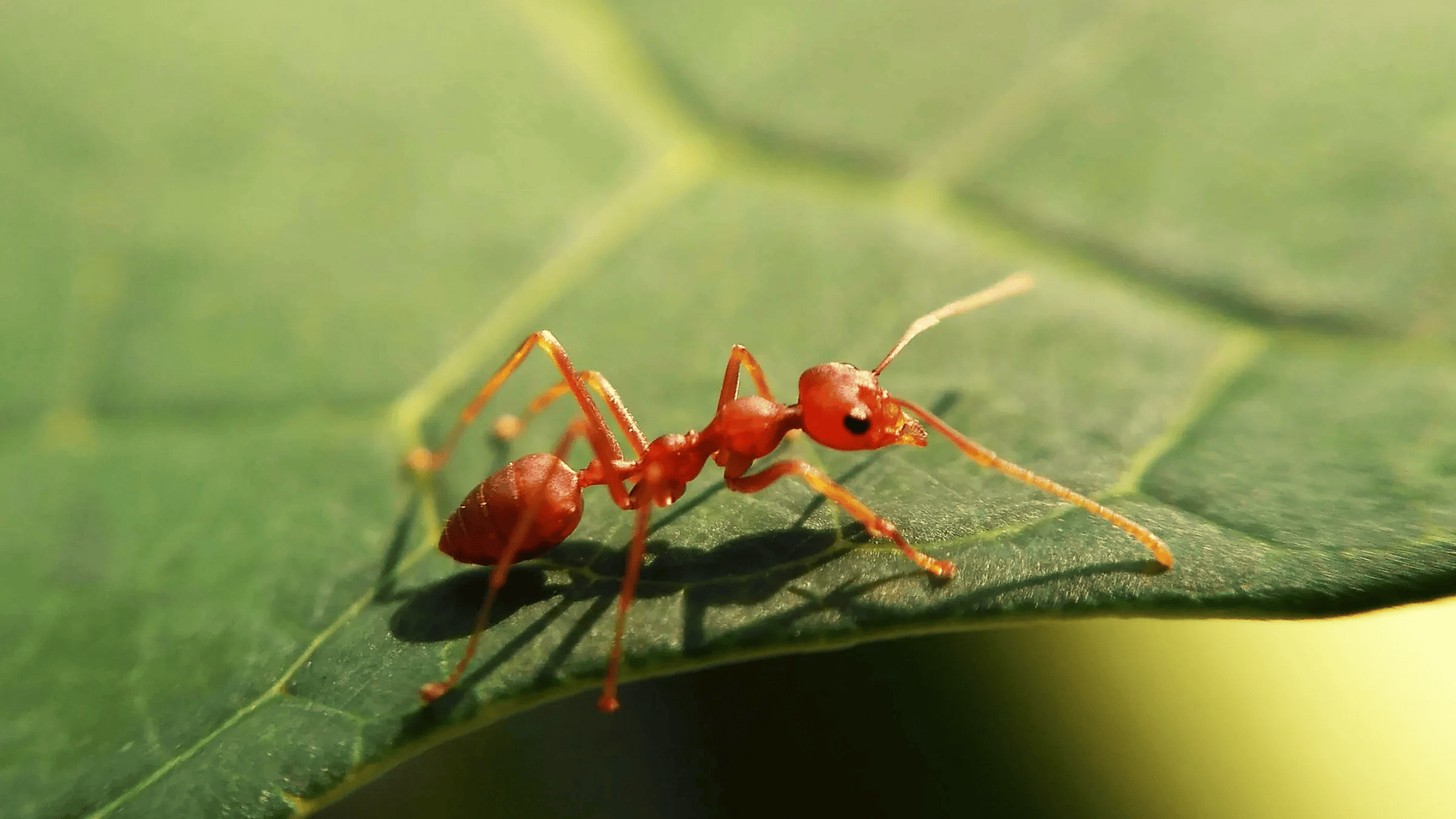
Deep in the rainforest, the bullet ant delivers a sting so painful it’s called the “24-hour ant.” Living nearly two years, it feeds on nectar and insects. Predators learn quickly—messing with this tiny warrior comes at a painful cost.
56. Goliath Beetle
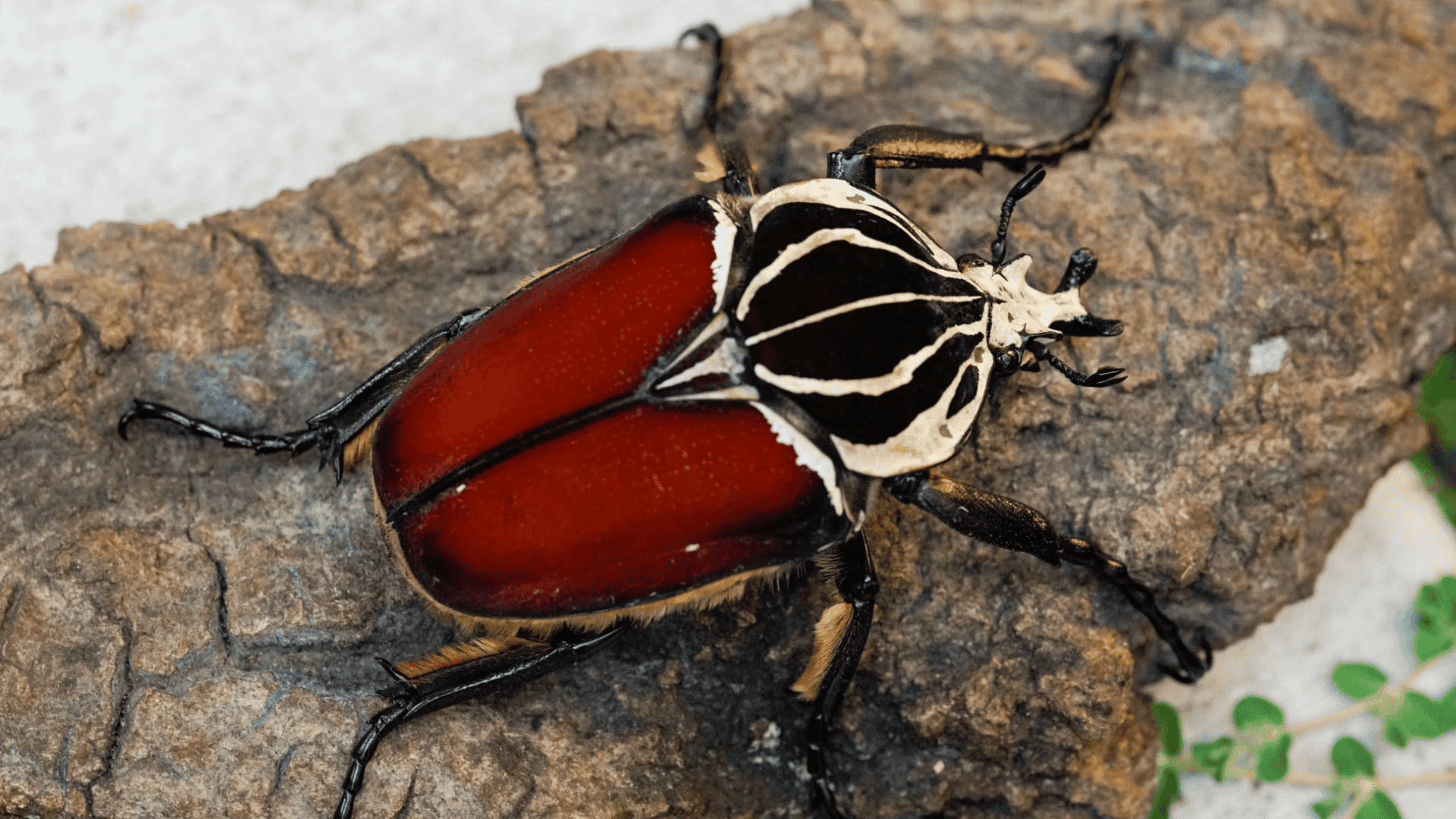
Meet the Goliath beetle, one of the largest insects on earth. Found in African jungles, it can weigh more than a sparrow. Feeding on tree sap and fruits, adults live only a few months but leave lasting impressions.
57. Giant Centipede
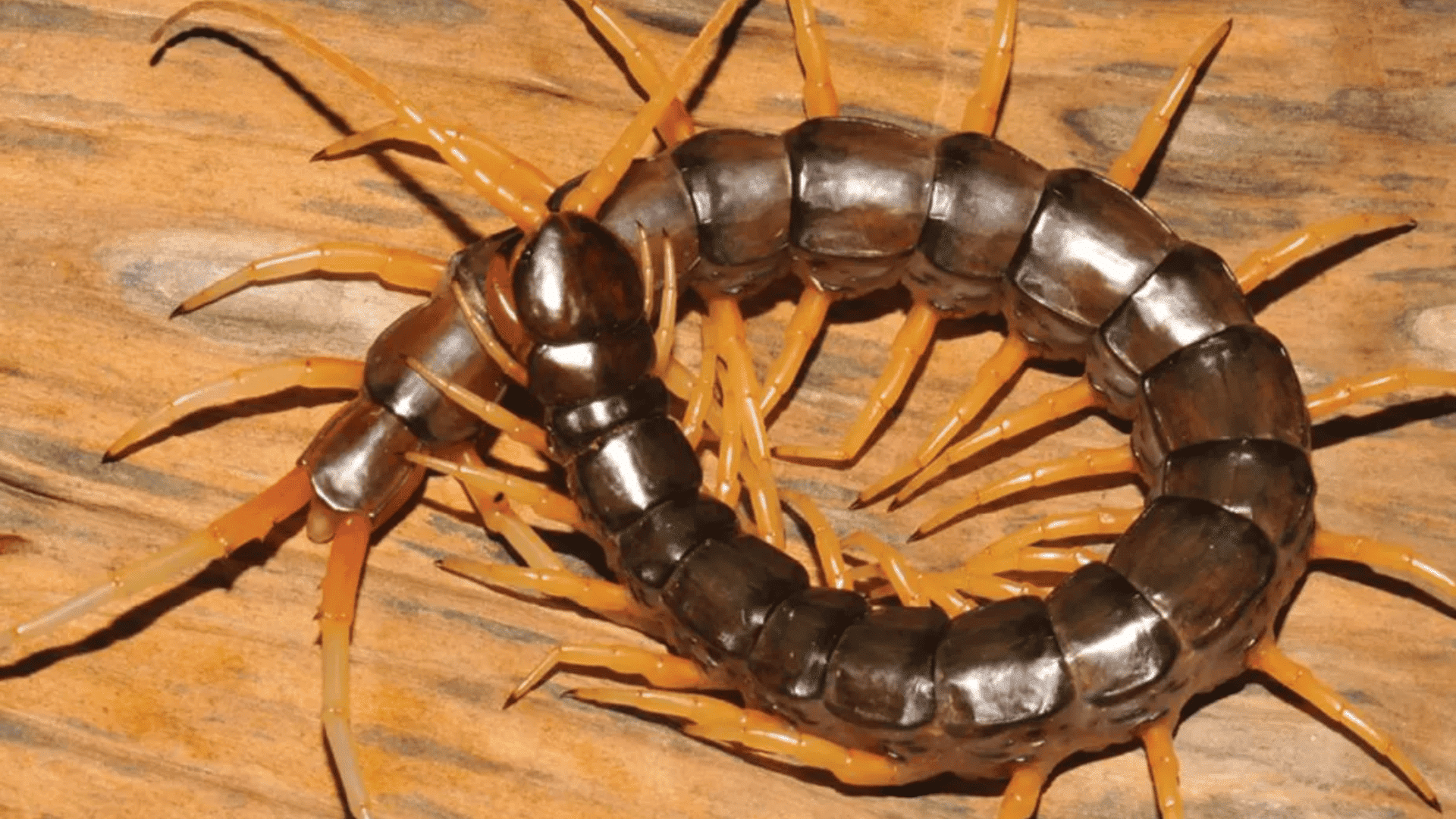
Few creatures look as unsettling as the giant centipede. With dozens of legs and venomous fangs, it races through tropical forests hunting insects, frogs, and even small birds. Surviving nearly seven years, this predator earns respect through speed and power.
58. Leafcutter Ants
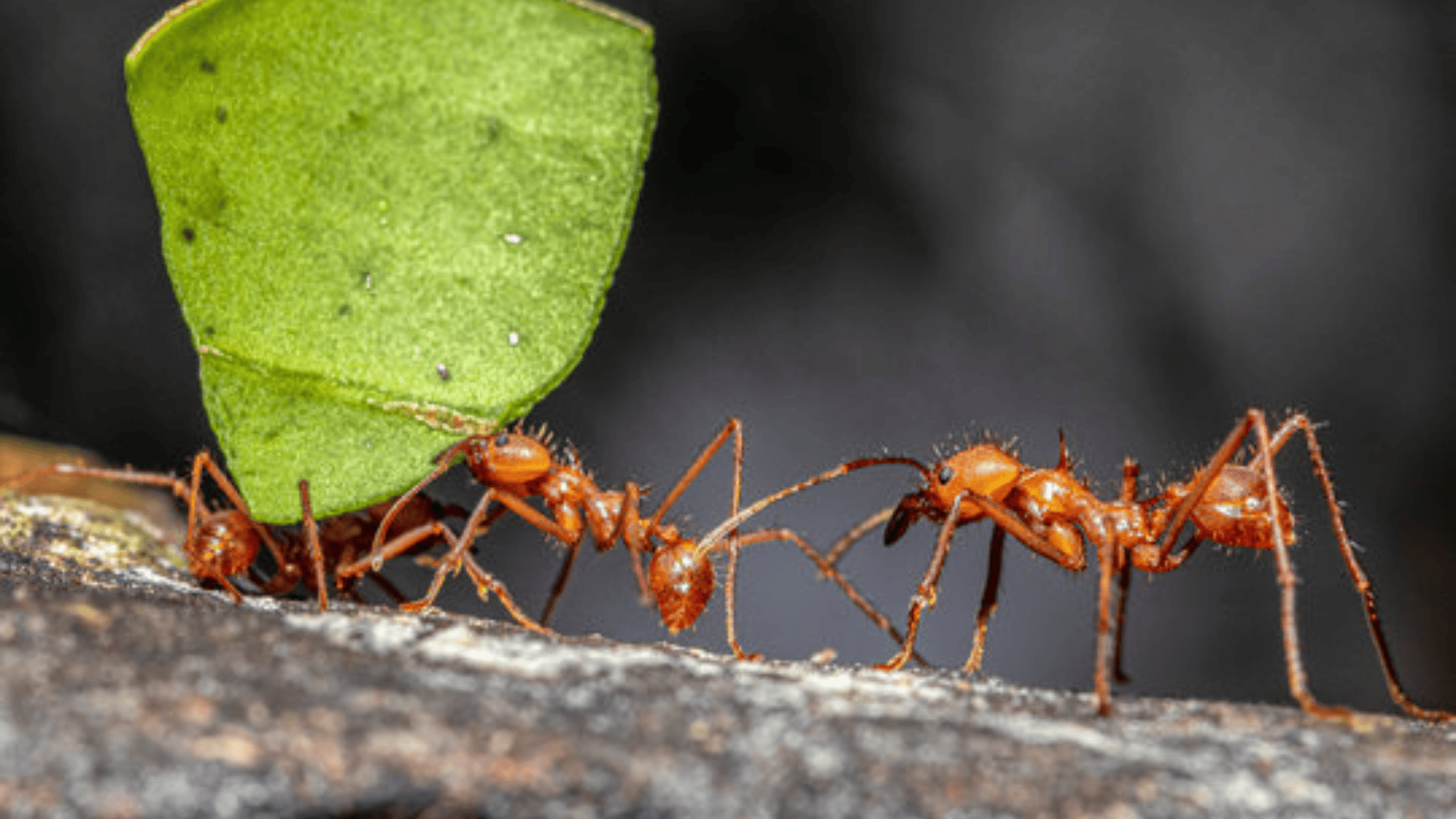
Leafcutter ants are tiny but remarkable farmers. Marching in endless lines, they haul green leaf pieces many times their size. Instead of eating them, they cultivate fungus for food. Queens may live years, while workers sacrifice themselves within weeks.
59. Scorpion
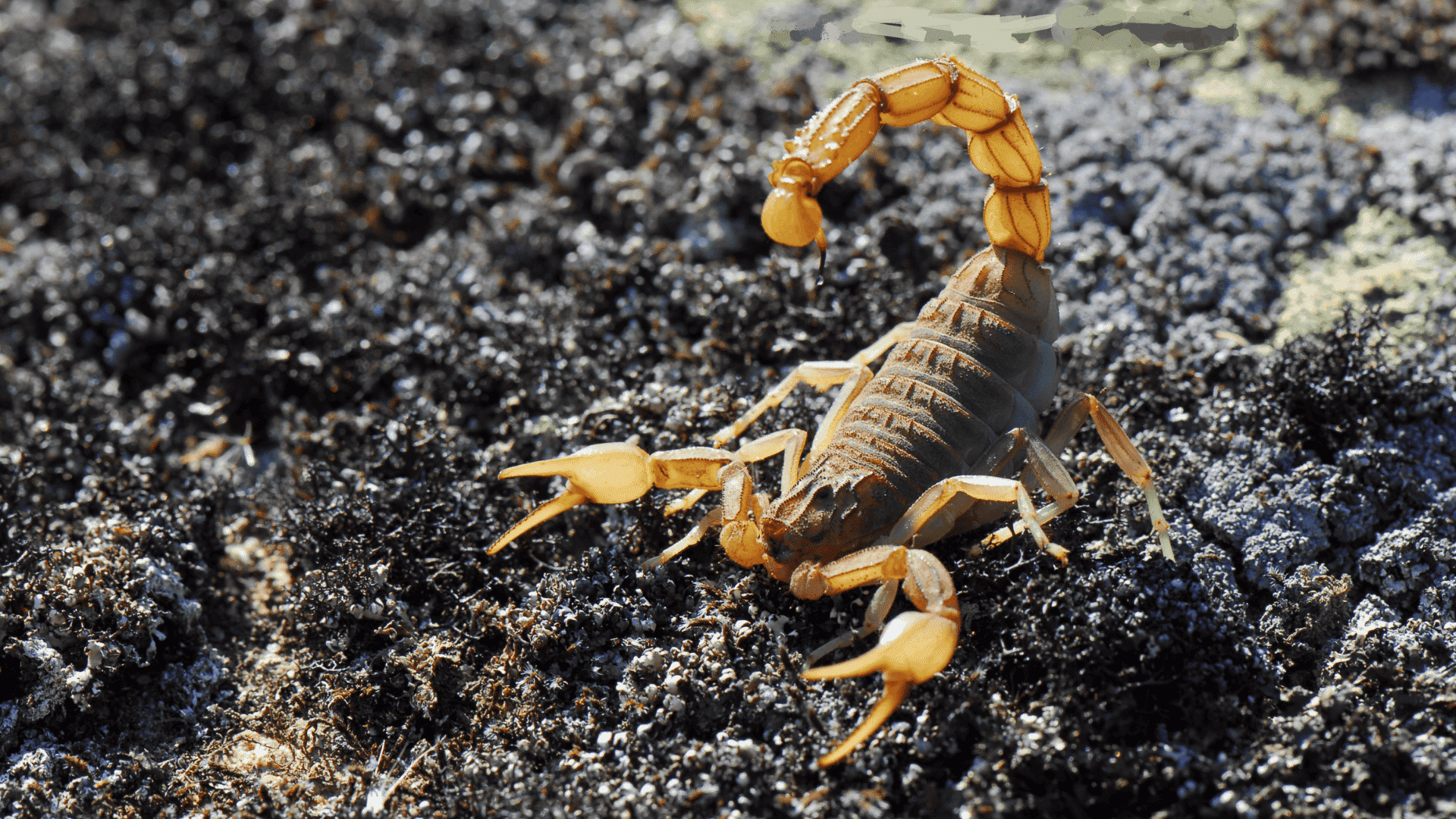
Scorpions glow eerily under UV light, like neon signs in the jungle night. Found across Asia and South America, they live 4–8 years. Feeding on spiders and insects, they strike quickly with pincers and venom-filled stingers.
60. Tarantula
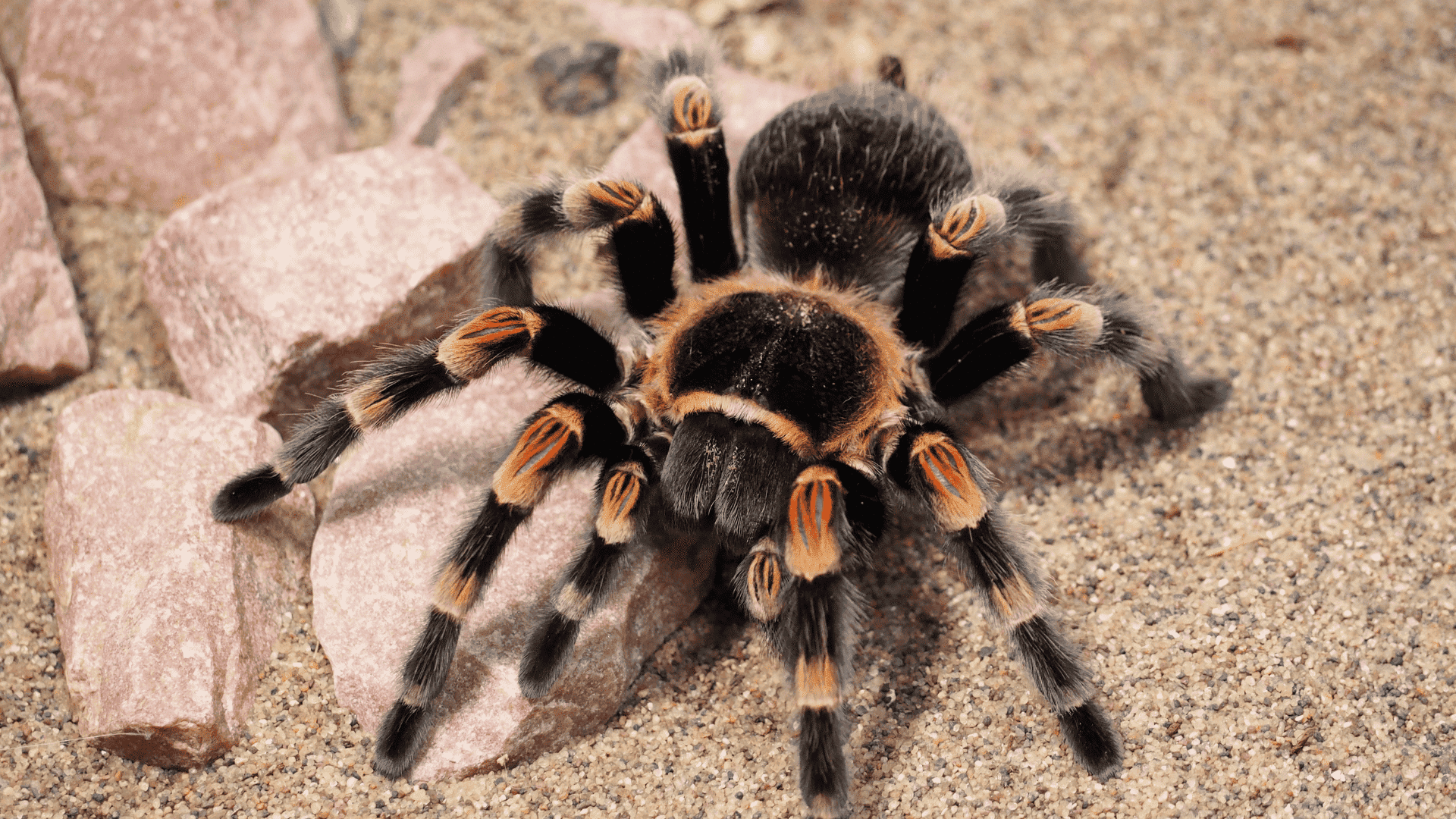
Hairy and patient, the tarantula waits at its burrow’s edge for prey. Native to South American jungles, it eats frogs, insects, and even lizards. Despite their fearsome reputation, these spiders live surprisingly long lives—sometimes reaching up to 25 years.
Conservation & Threats
Jungle animals are under serious pressure. Many species are endangered, and without action, some could disappear forever. Orangutans in Borneo and Sumatra lose their homes to logging and farming.
Tigers face relentless hunting, with fewer than 5,000 left worldwide. Jaguars lose ground as South American forests are cleared. Rare okapis in the Congo are targeted by hunters, while harpy eagles struggle as logging destroys nesting trees.
Human activity is the biggest threat. Deforestation for farming, cattle, and roads cuts deep into jungles. Hunting for skins and meat, as well as illegal trade, drives the numbers down further. As trees vanish, jungles become hotter, drier, and less able to support life.
Conservation groups fight back by creating parks, running anti-poaching patrols, replanting forests, and rescuing animals.
They also work with local communities to balance human needs with wildlife survival. Saving jungle animals will require global support, strong protection, and continued awareness.
Conclusion
Jungles are some of the most alive and diverse places on Earth, filled with creatures of every size and shape.
From powerful tigers and gentle elephants to bright parrots and tiny ants, each animal plays an important role in keeping the forest balanced and thriving.
Learning about these species helps us see how connected jungle life truly is. It also reminds us why protecting these habitats matters, not just for animals but for the planet we all share.
I hope this guide gave you a closer look at the beauty and variety of jungle life. Drop a comment below and let us know which one stood out to you.










